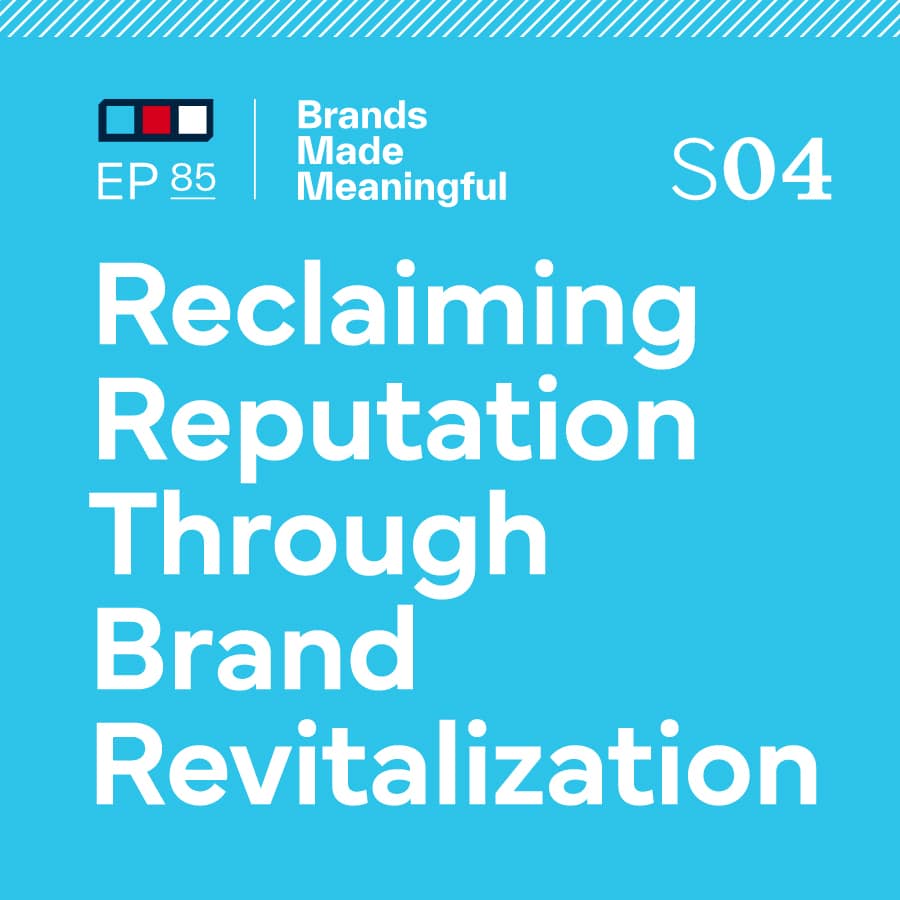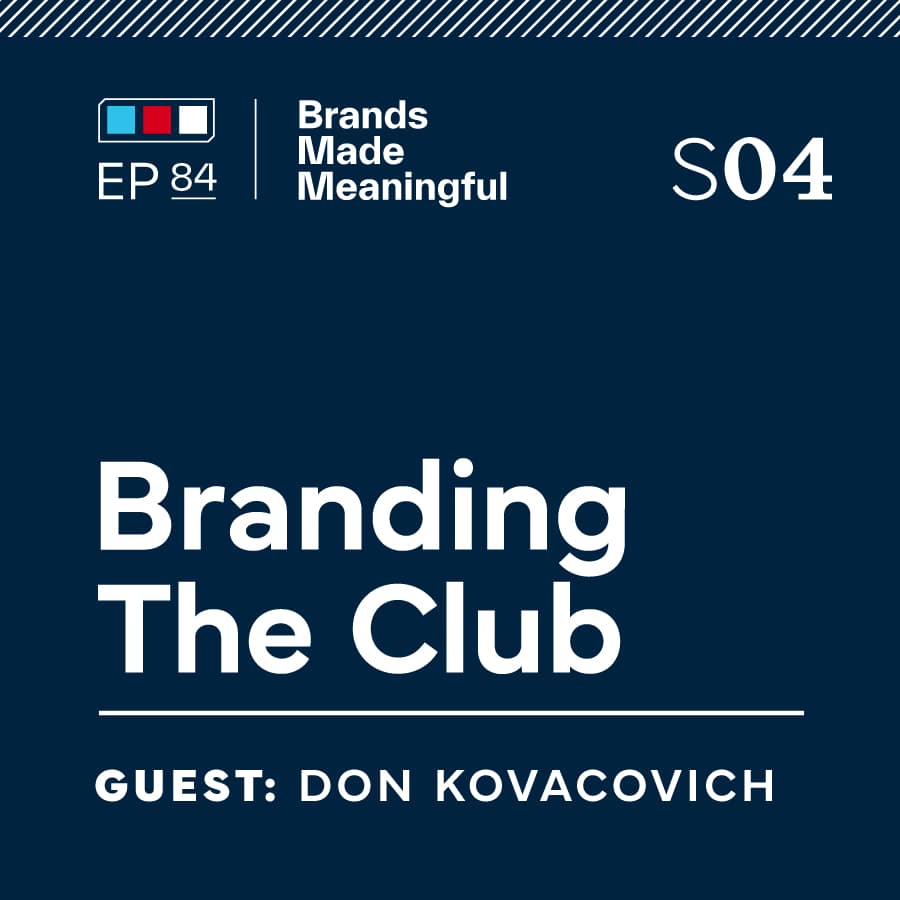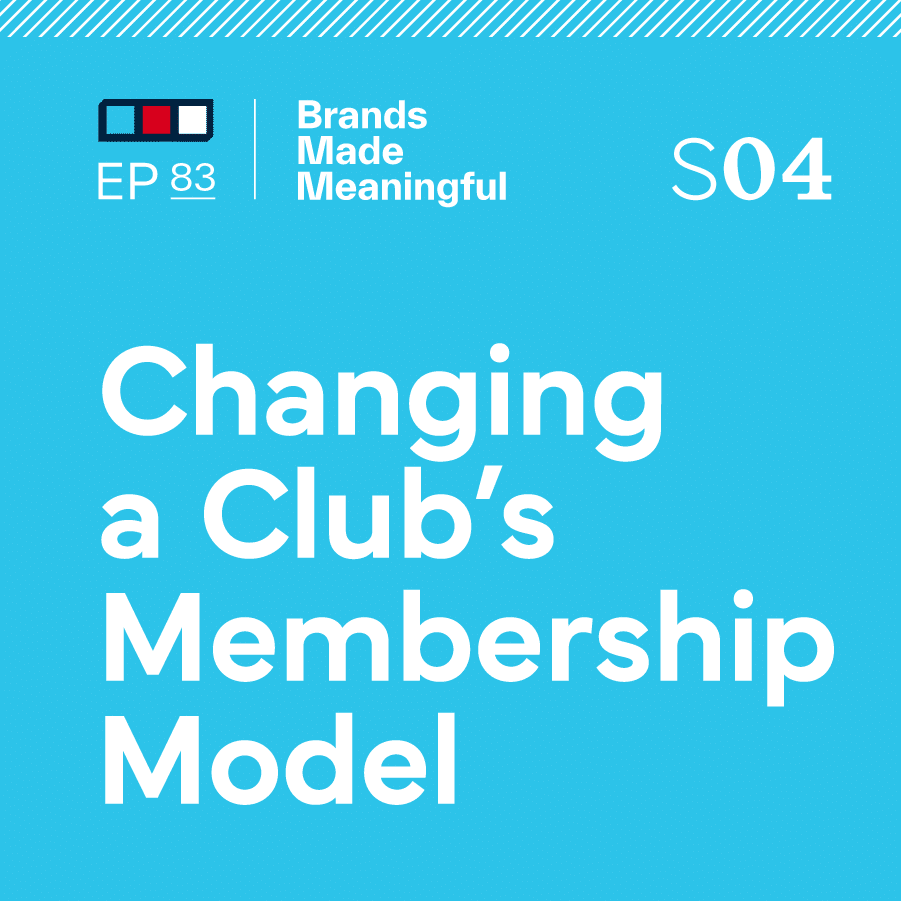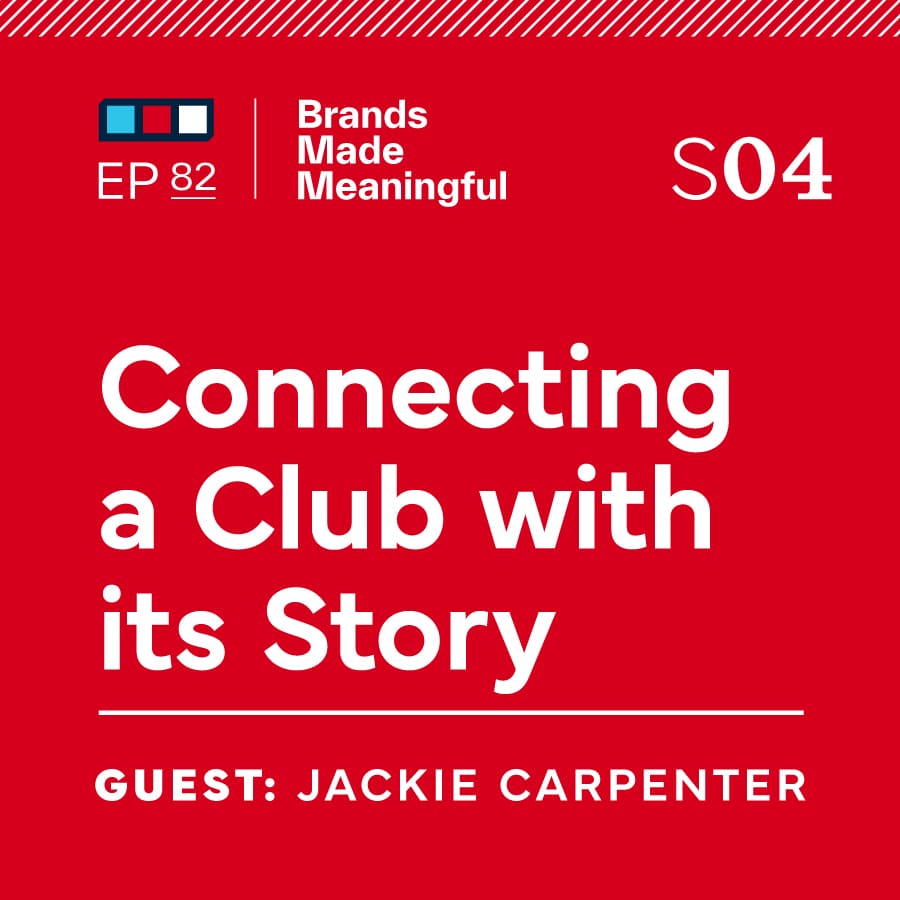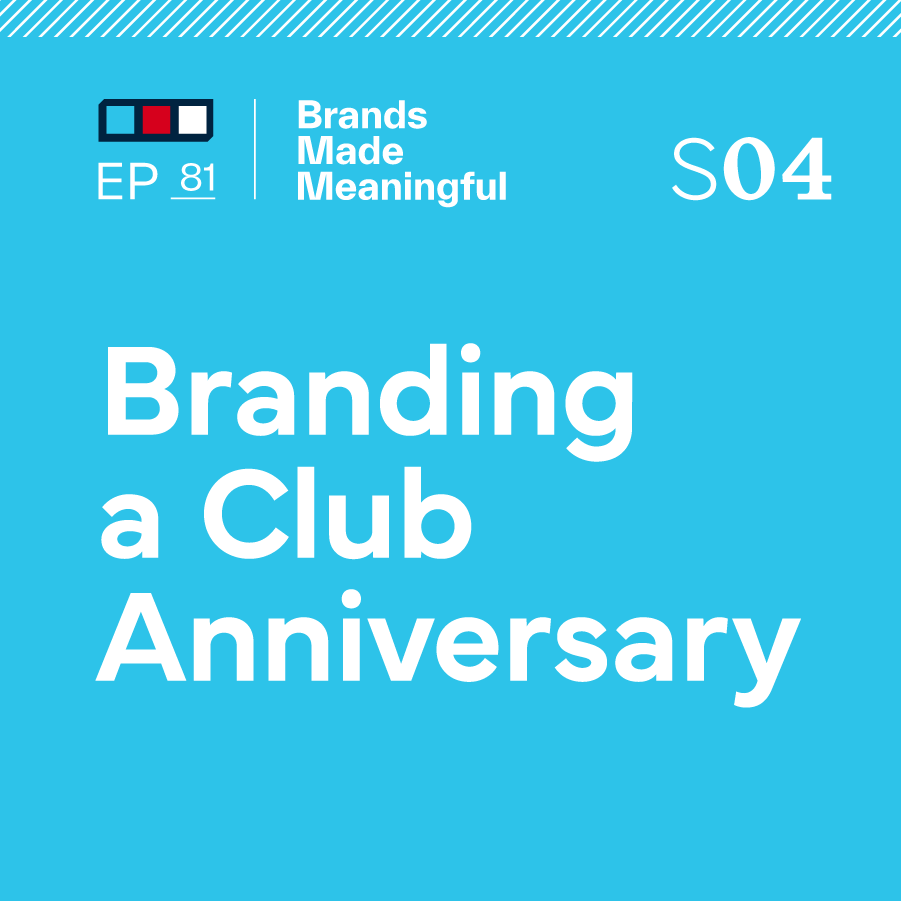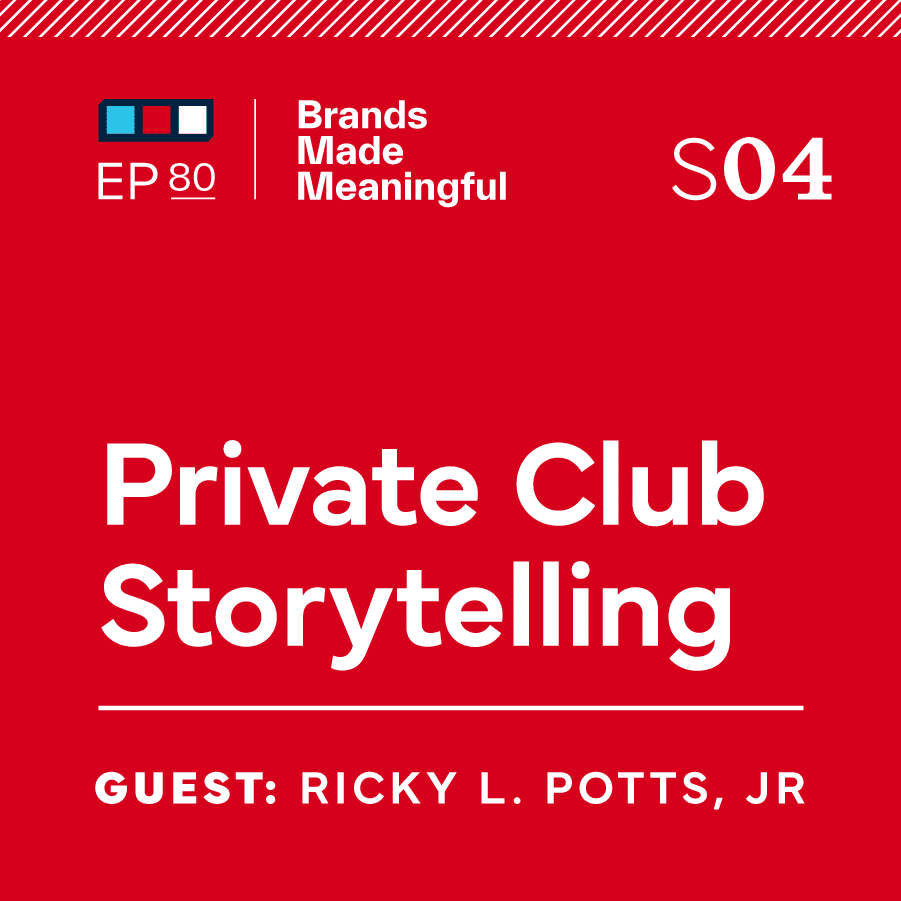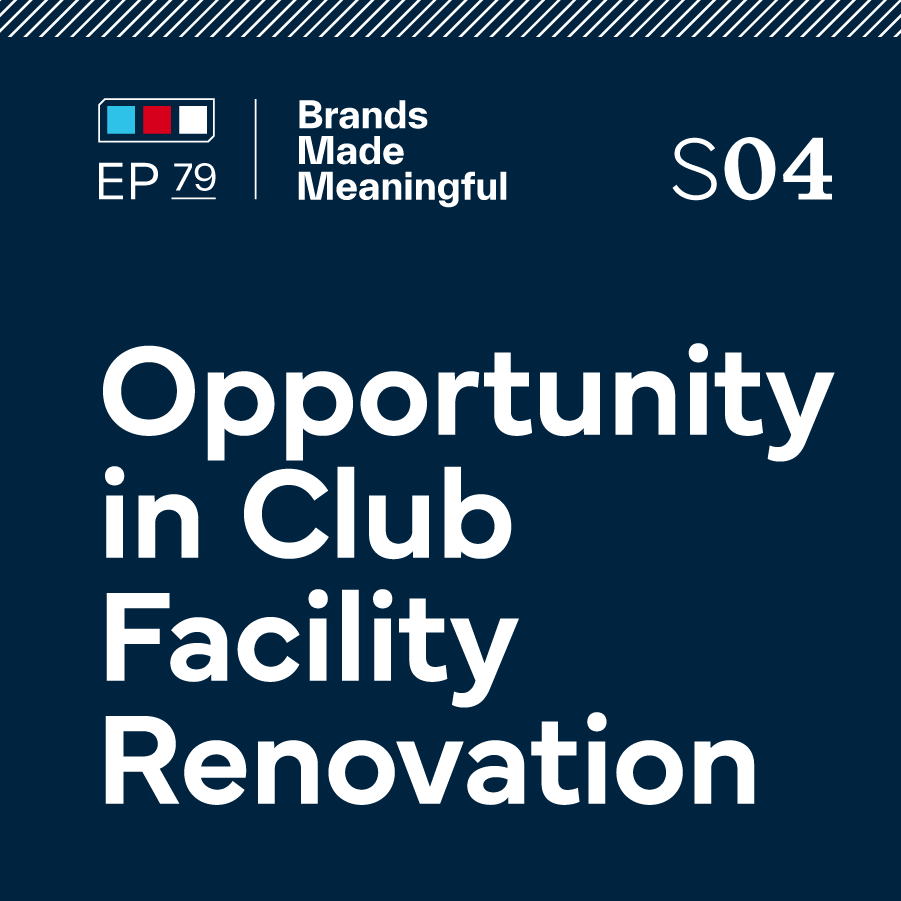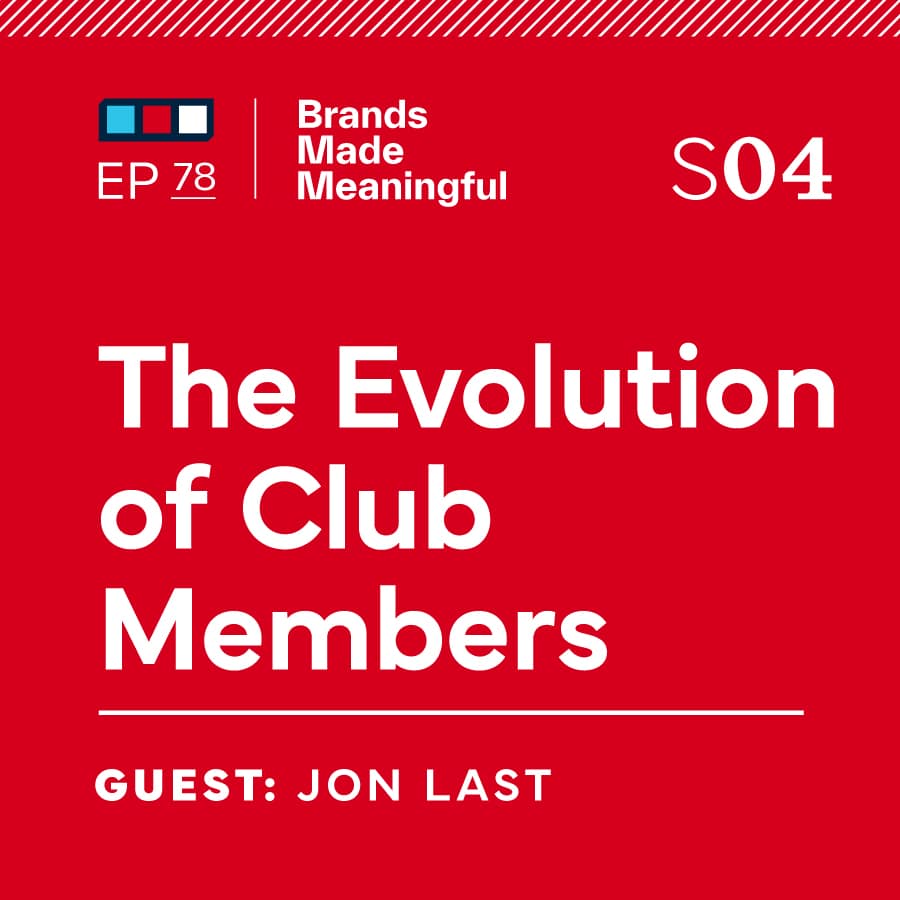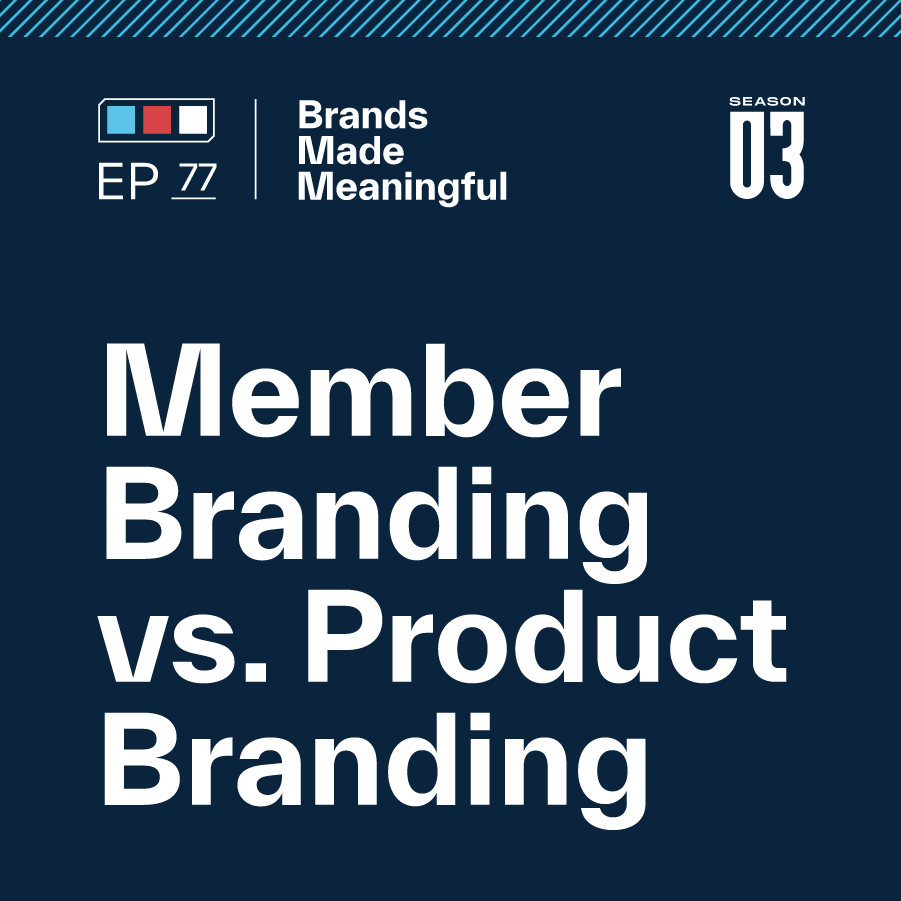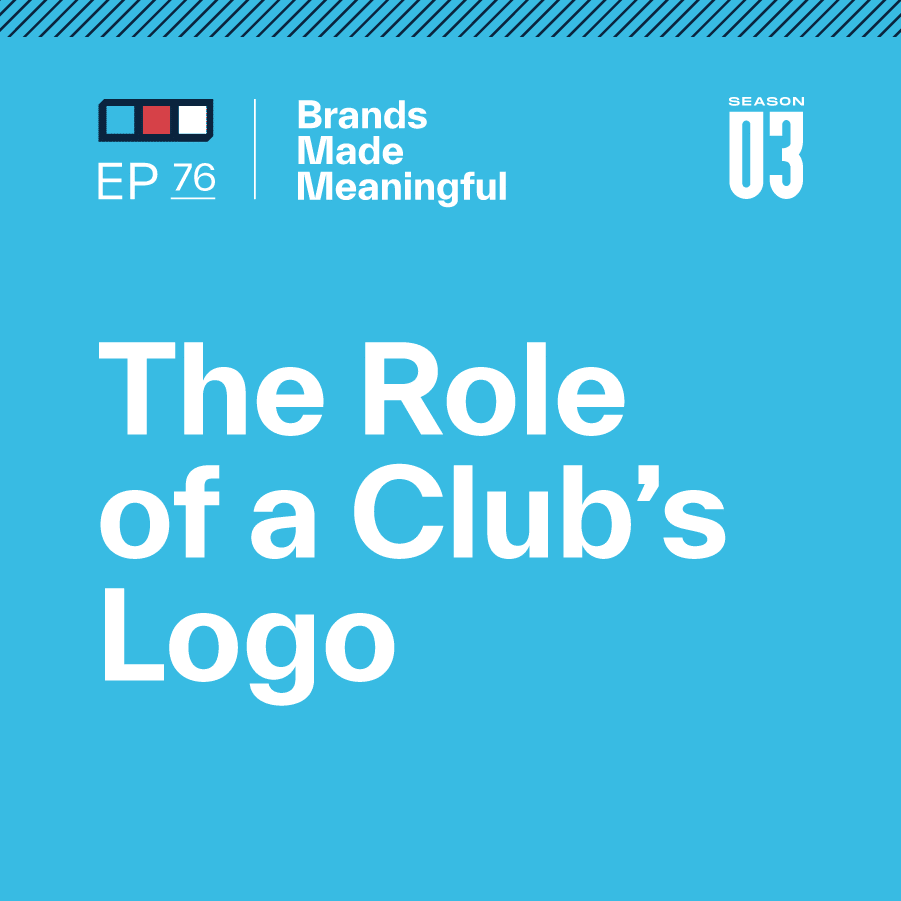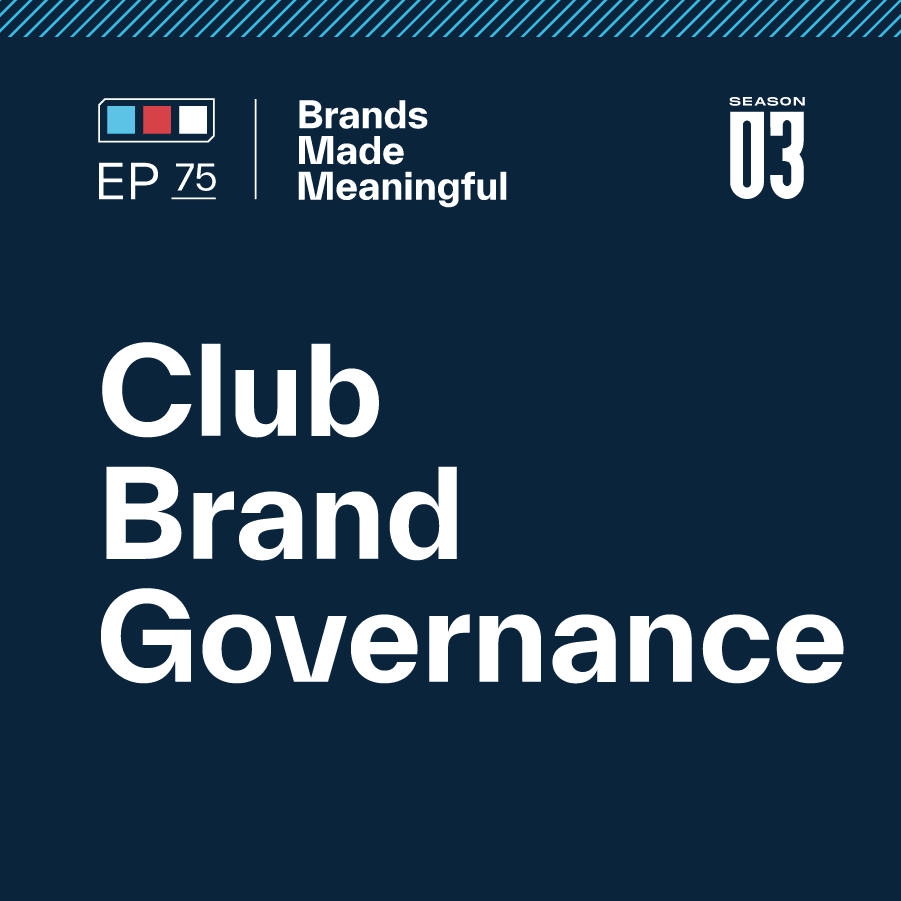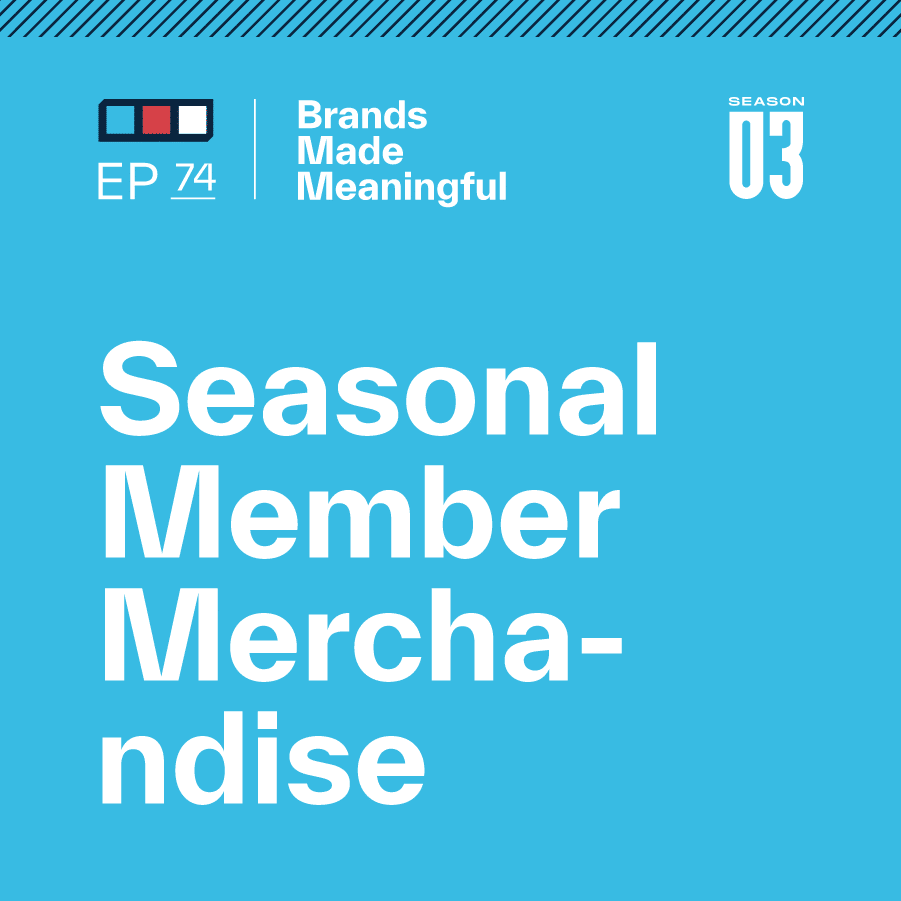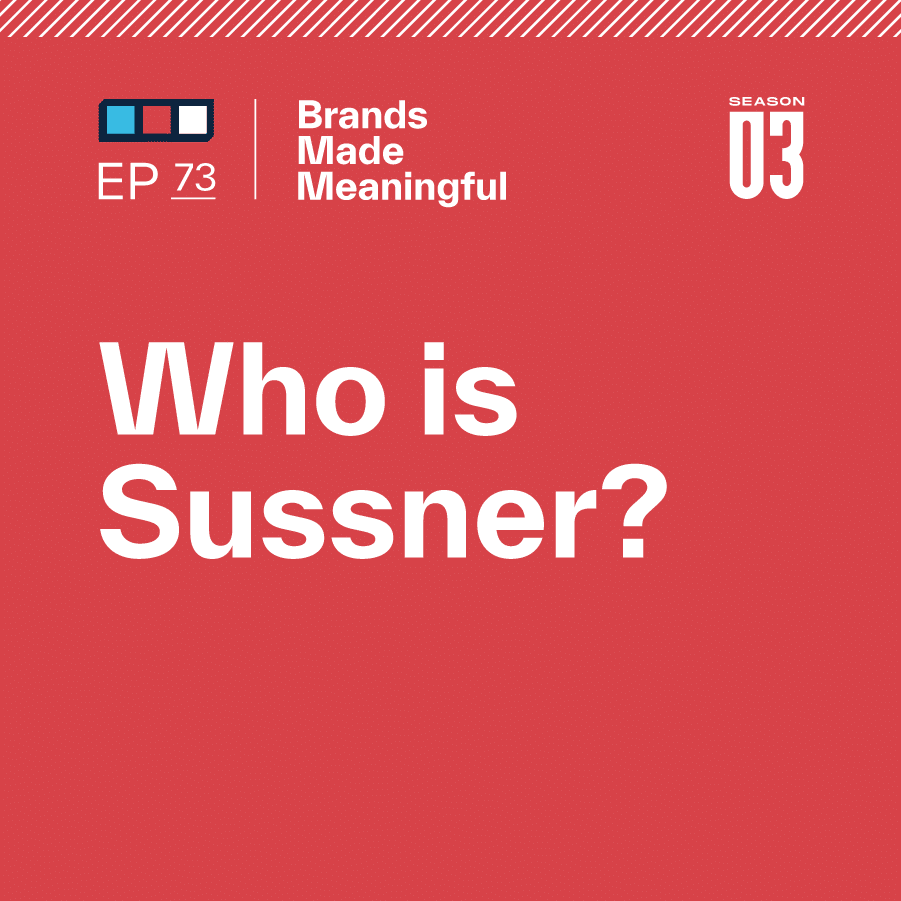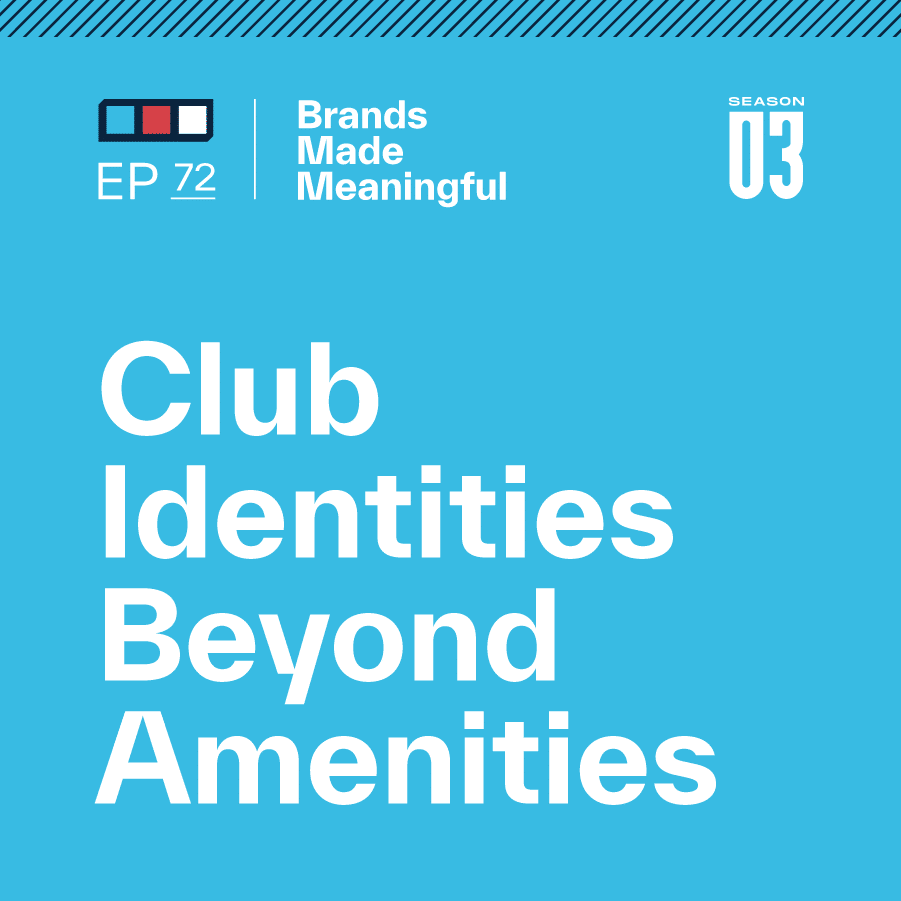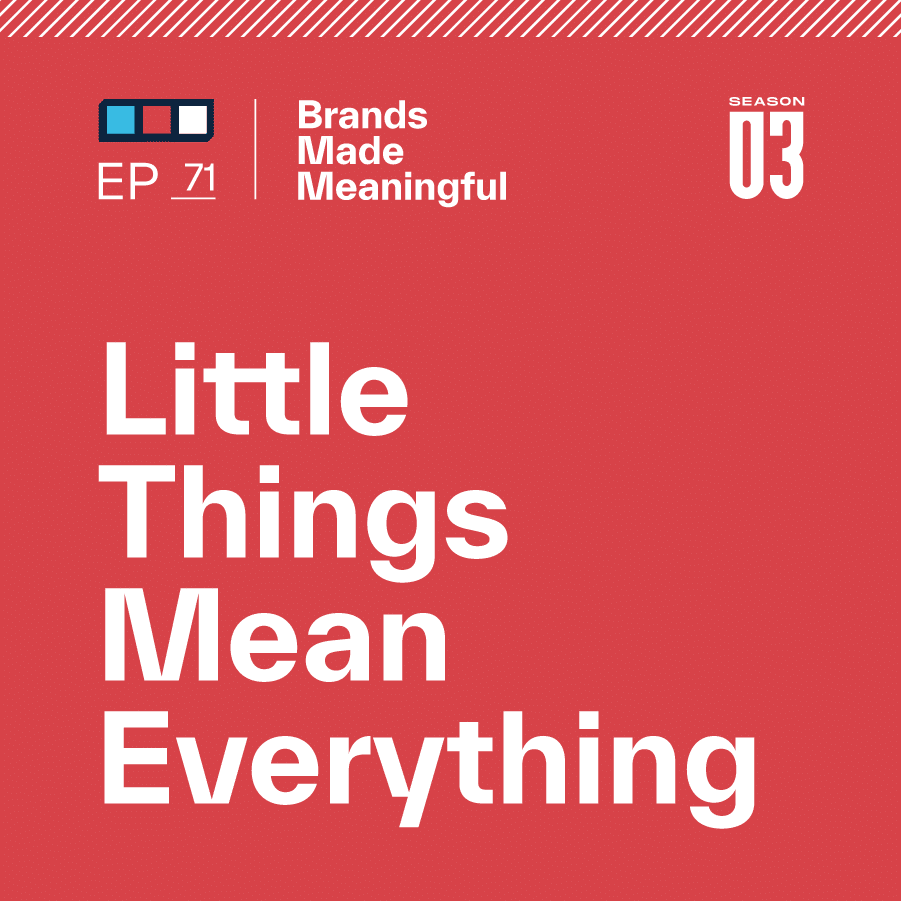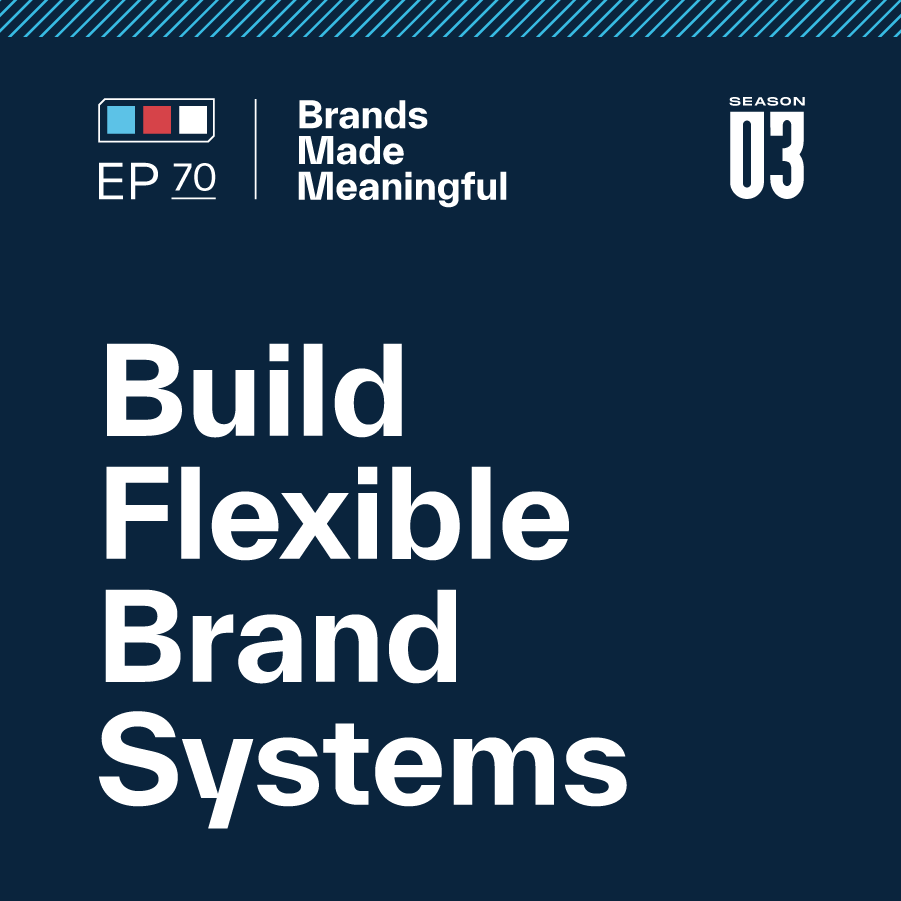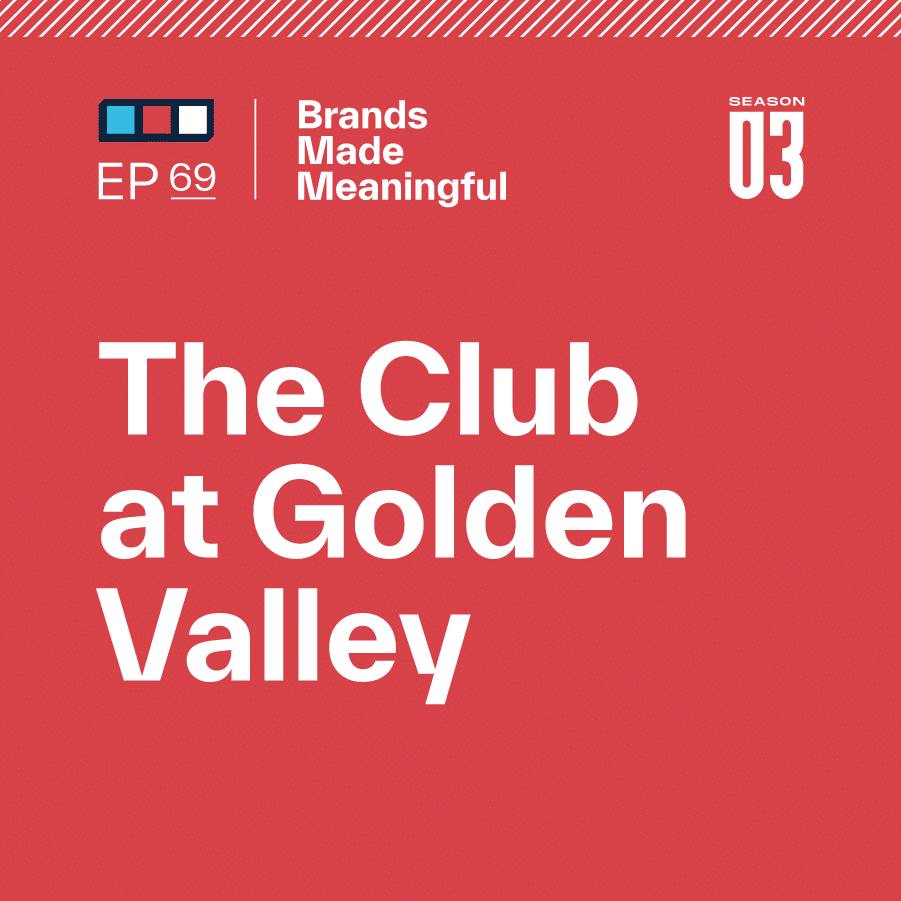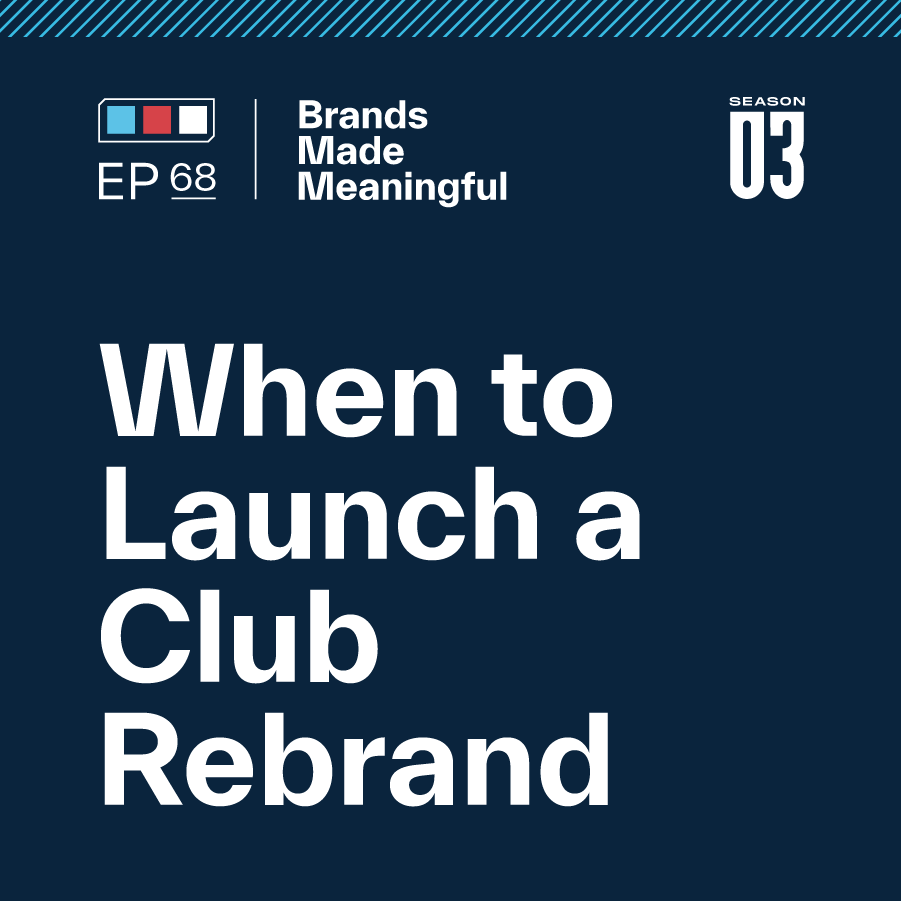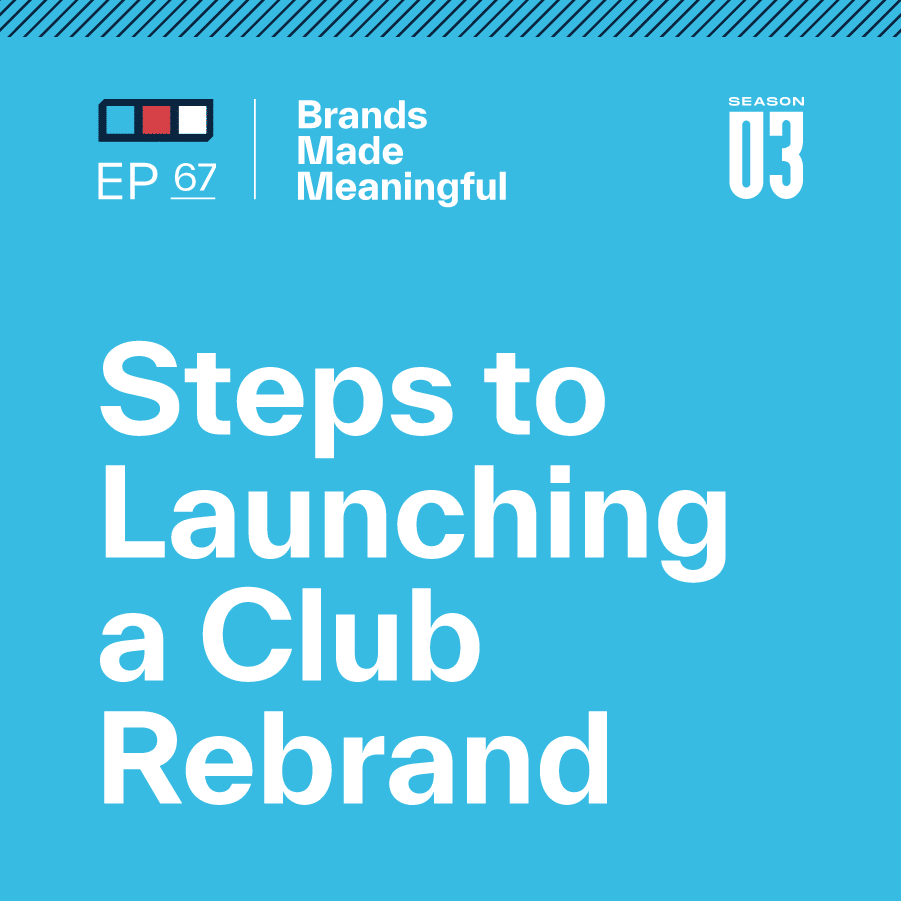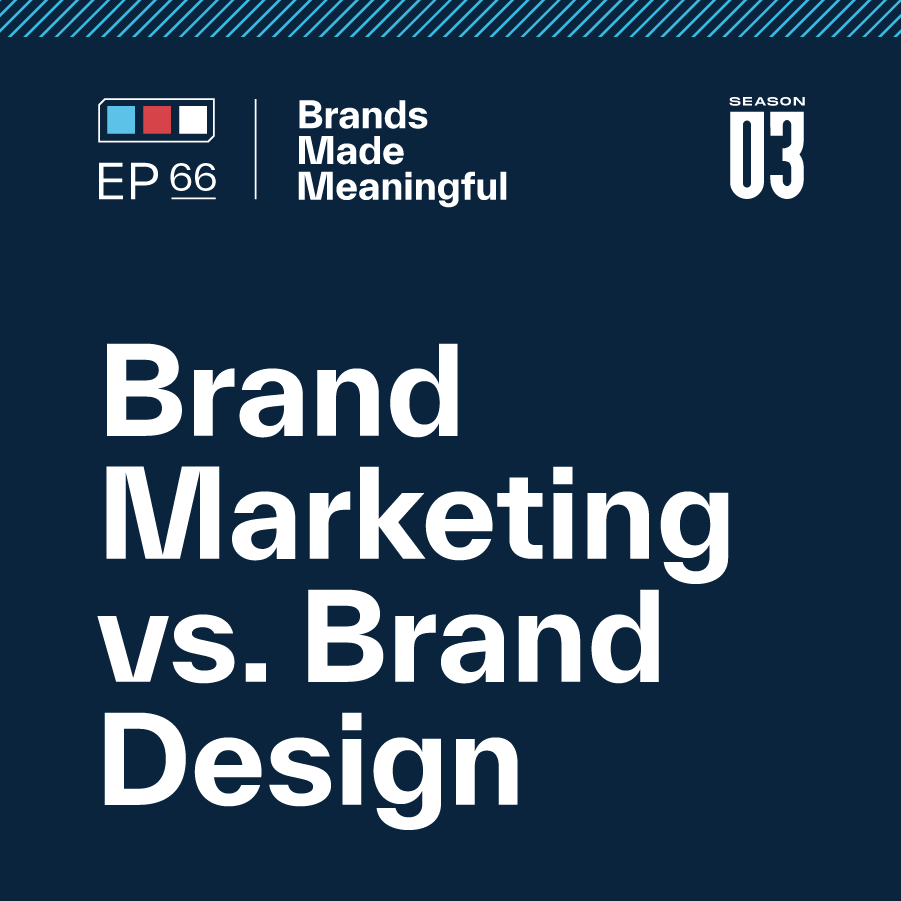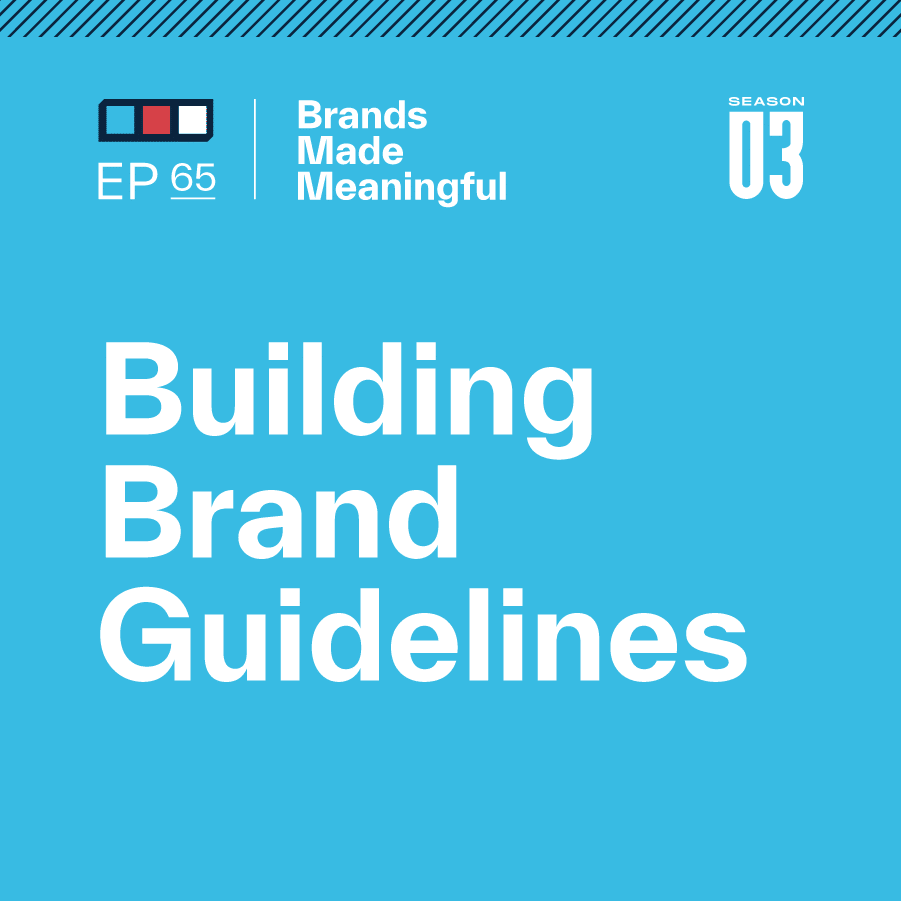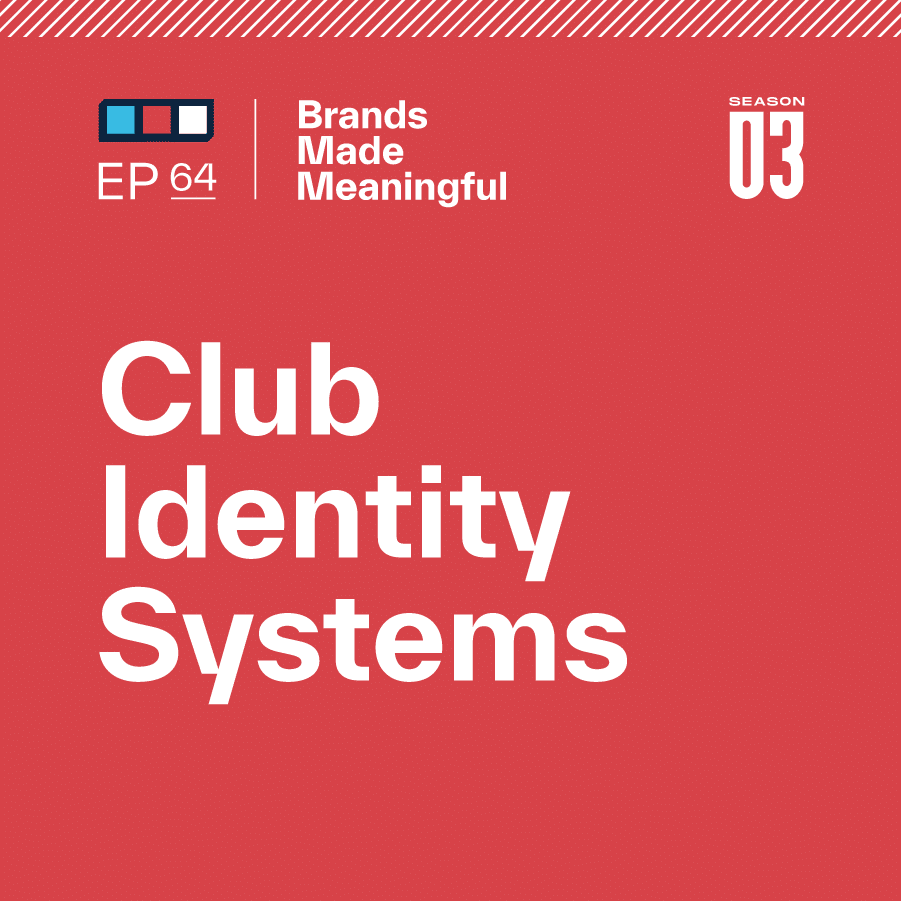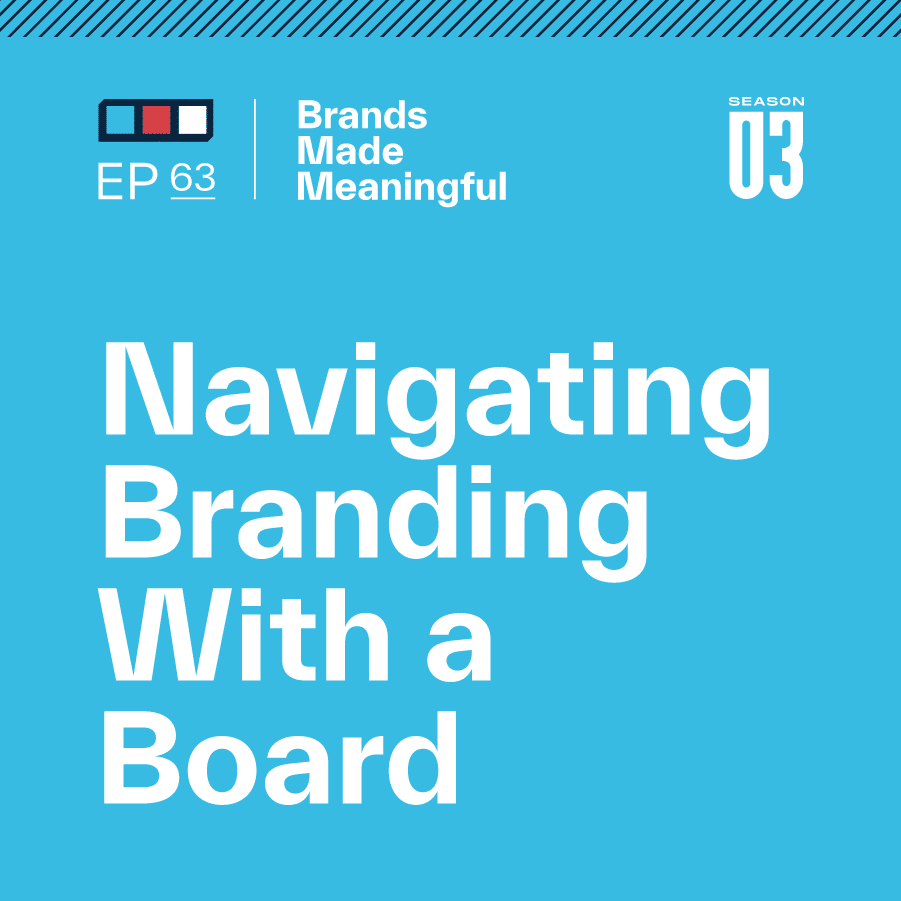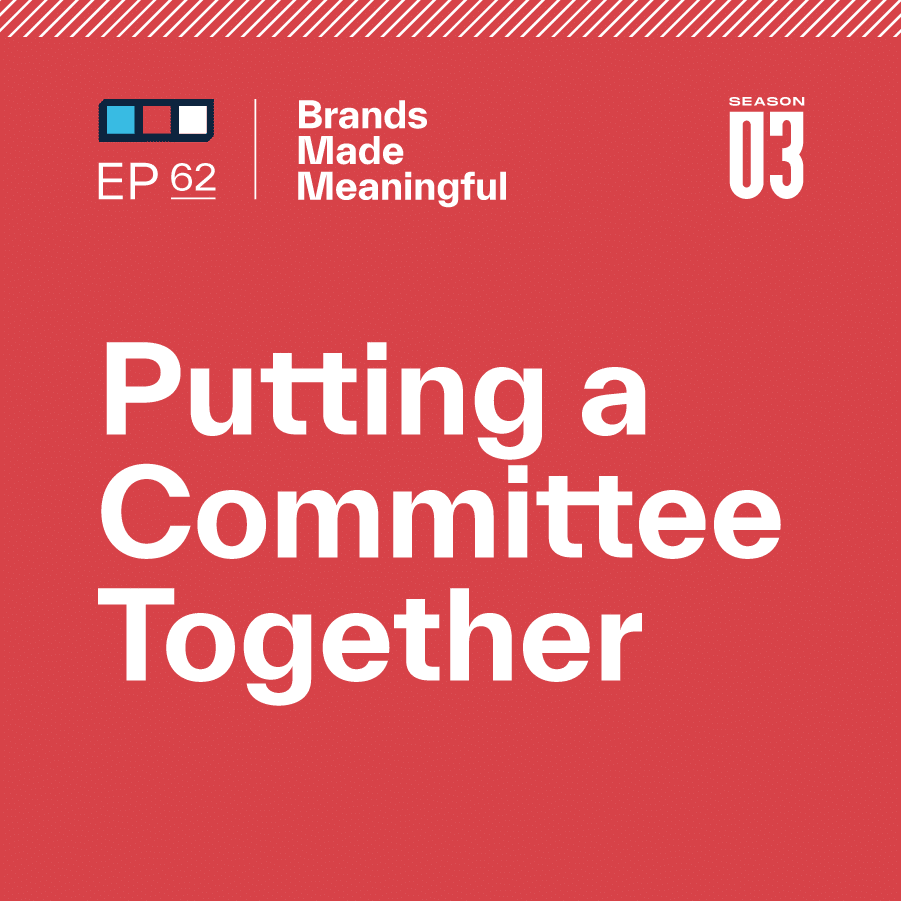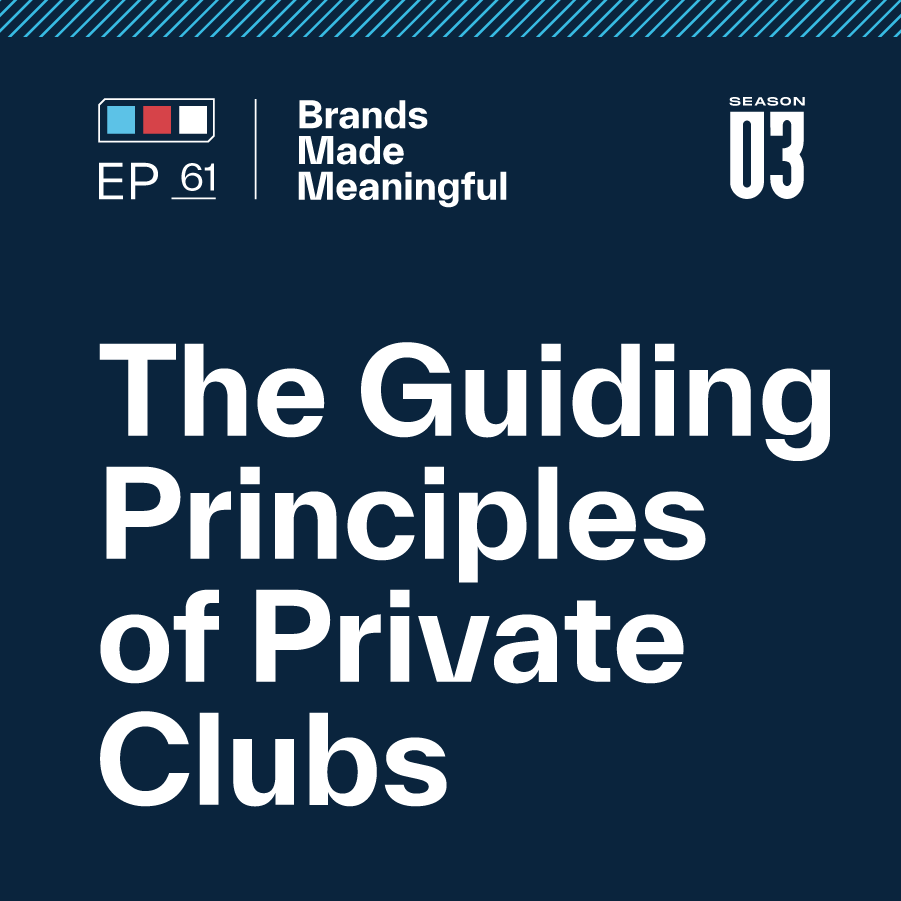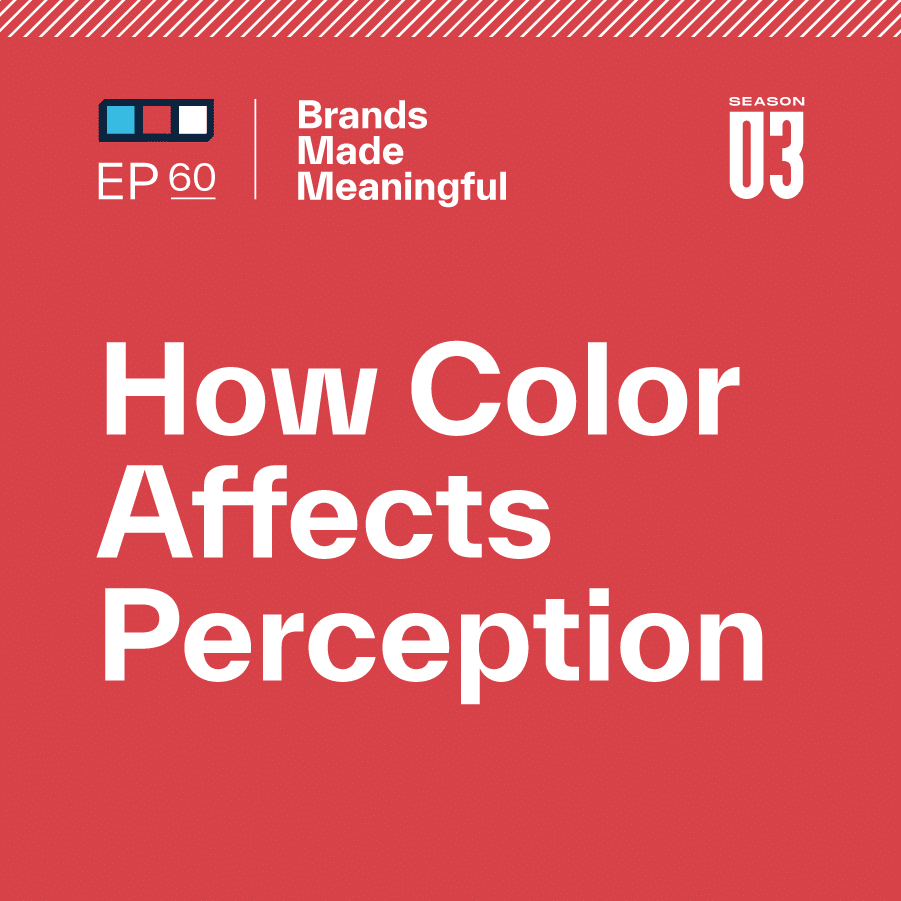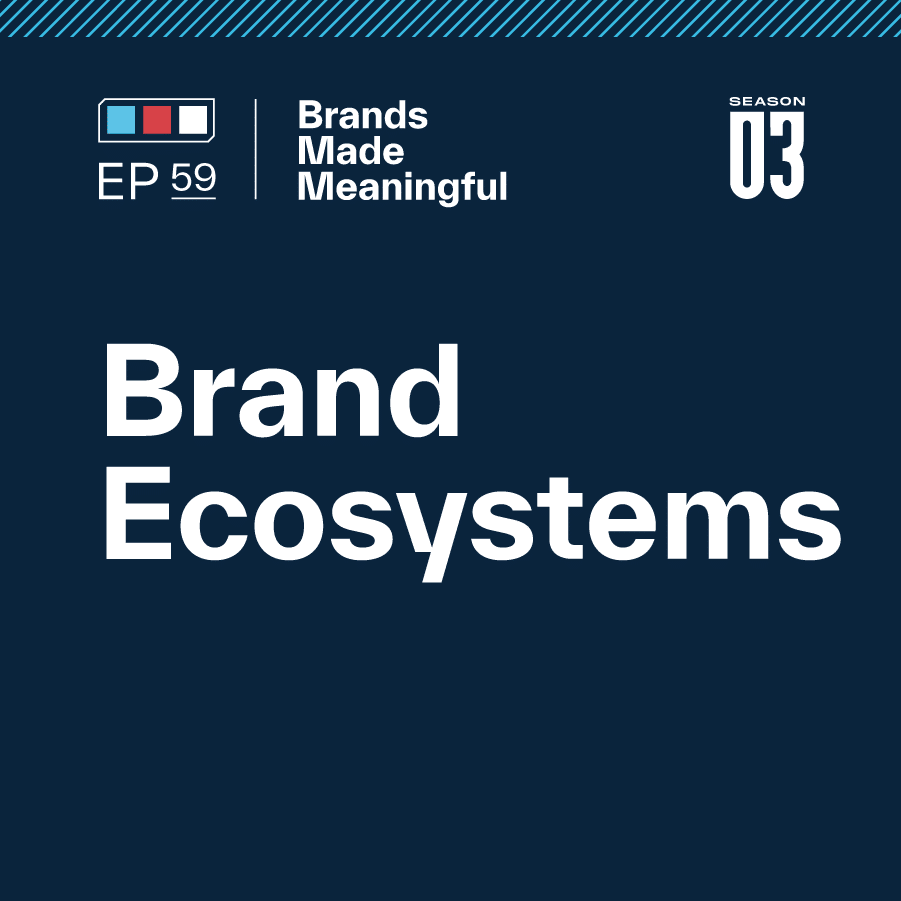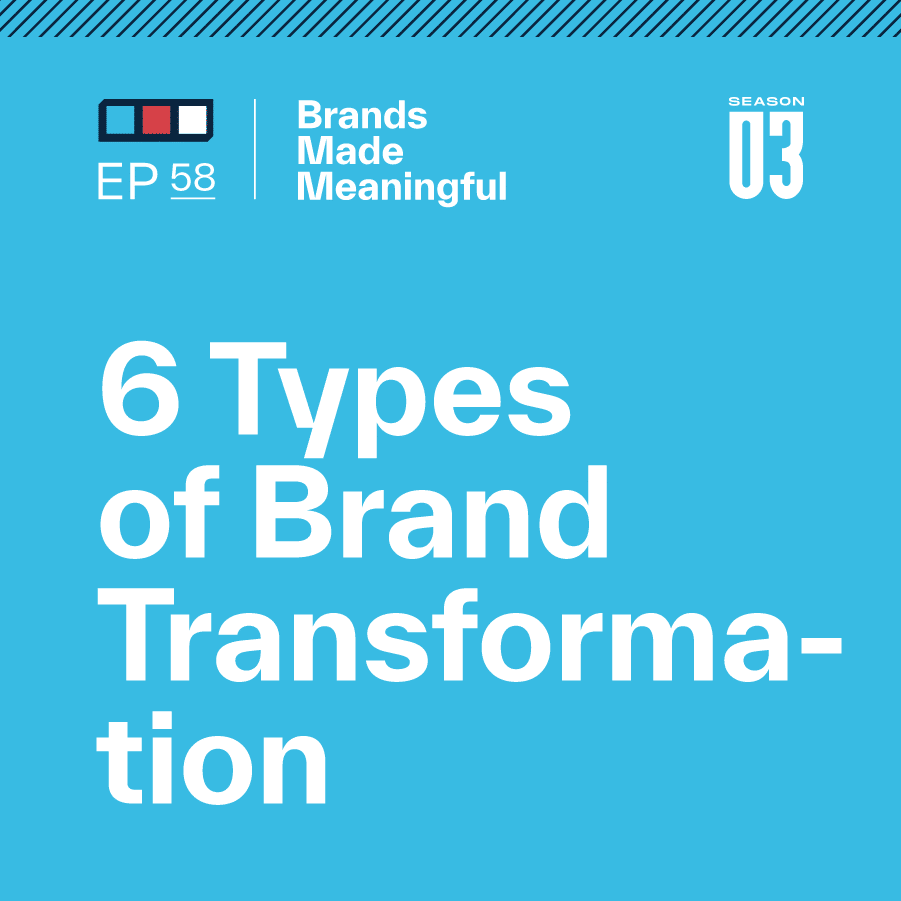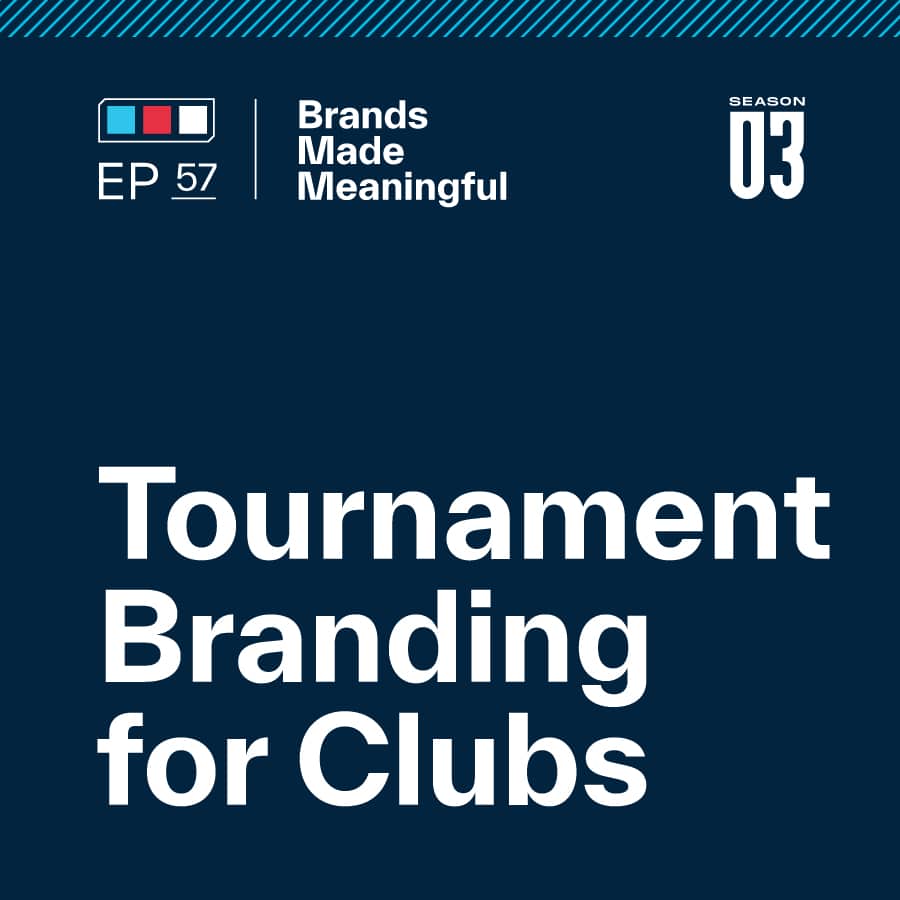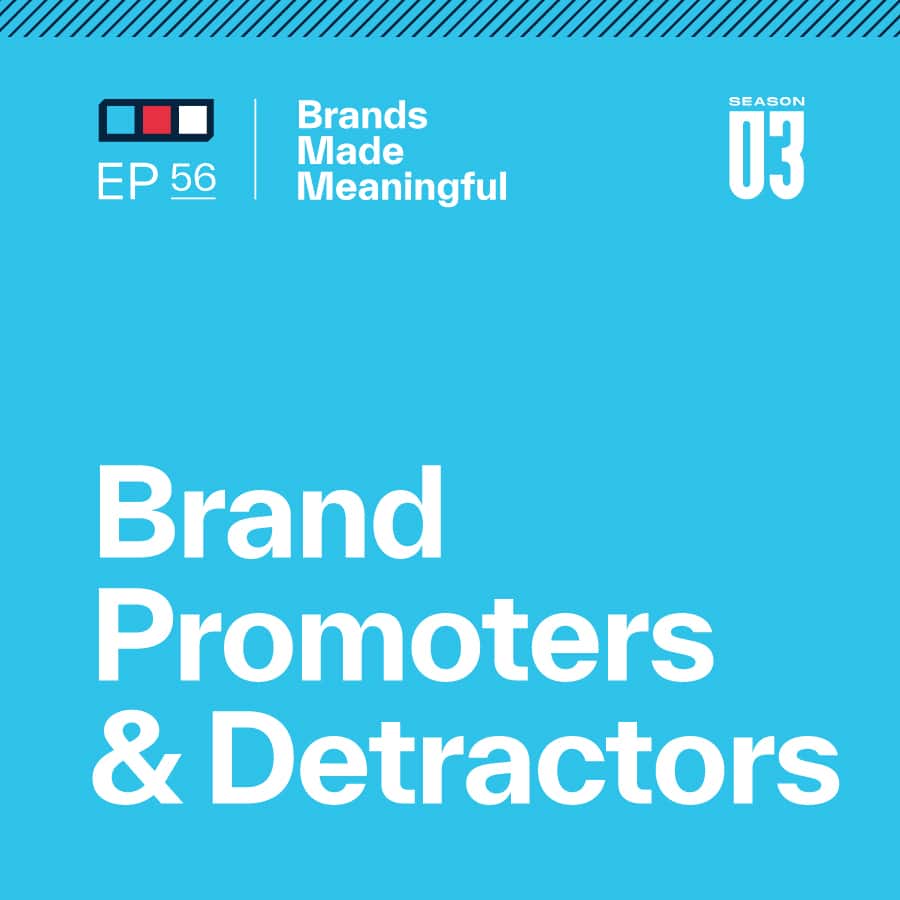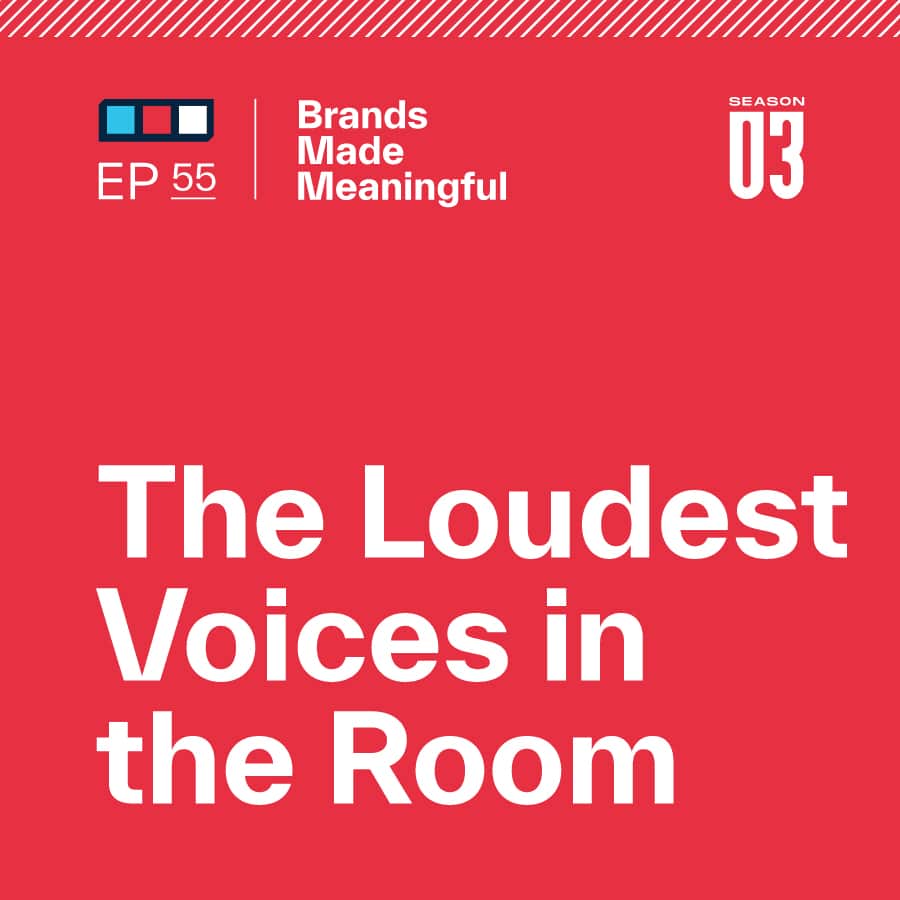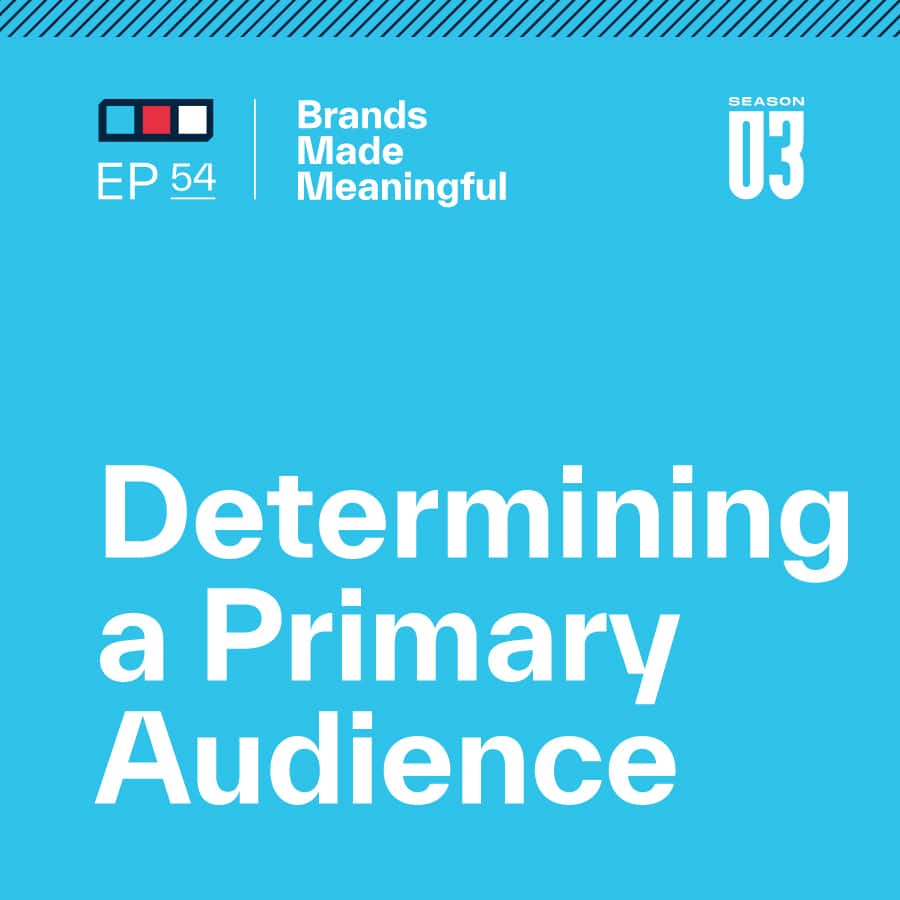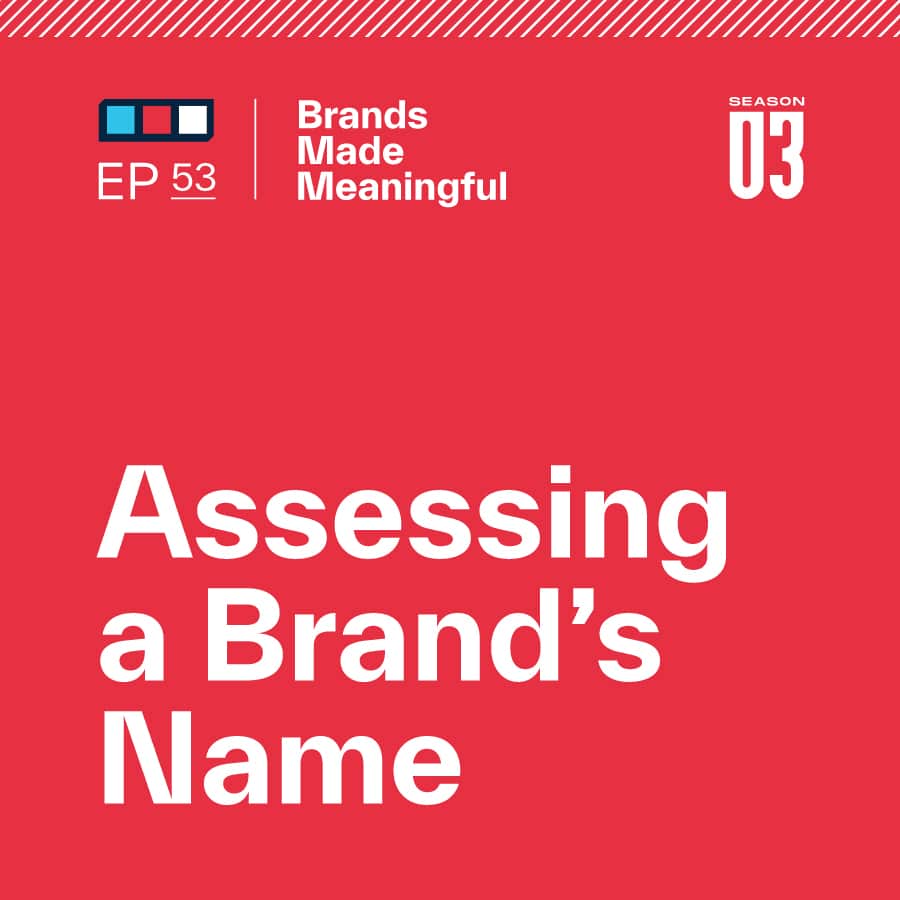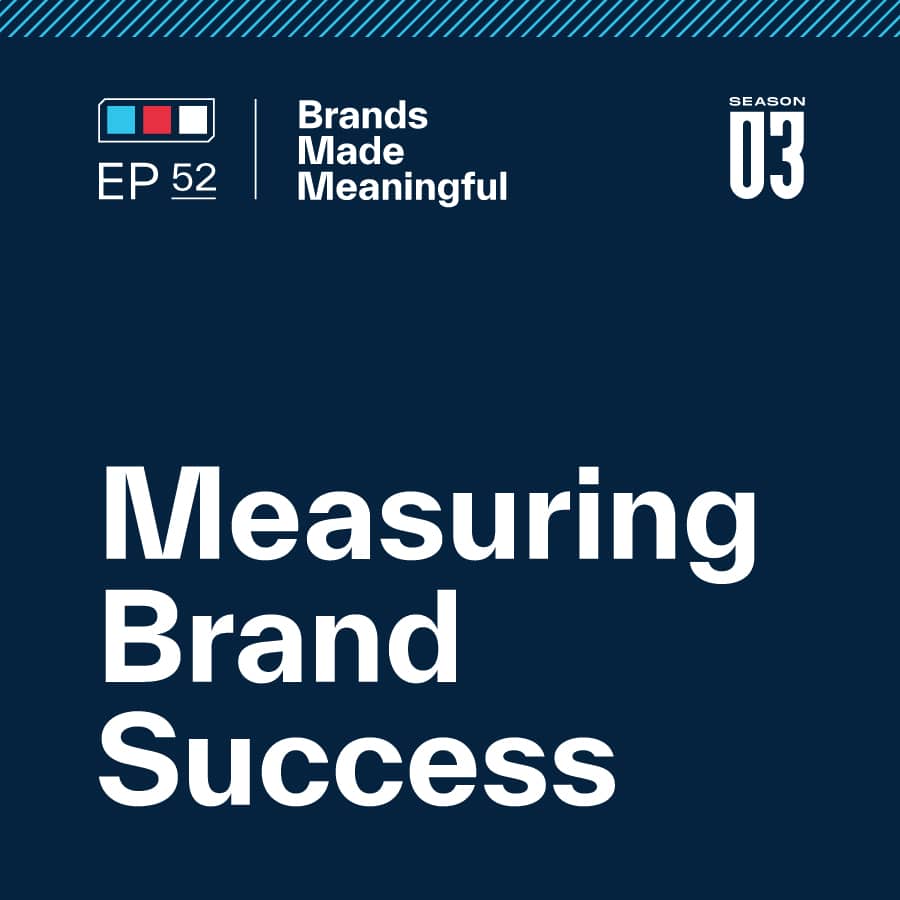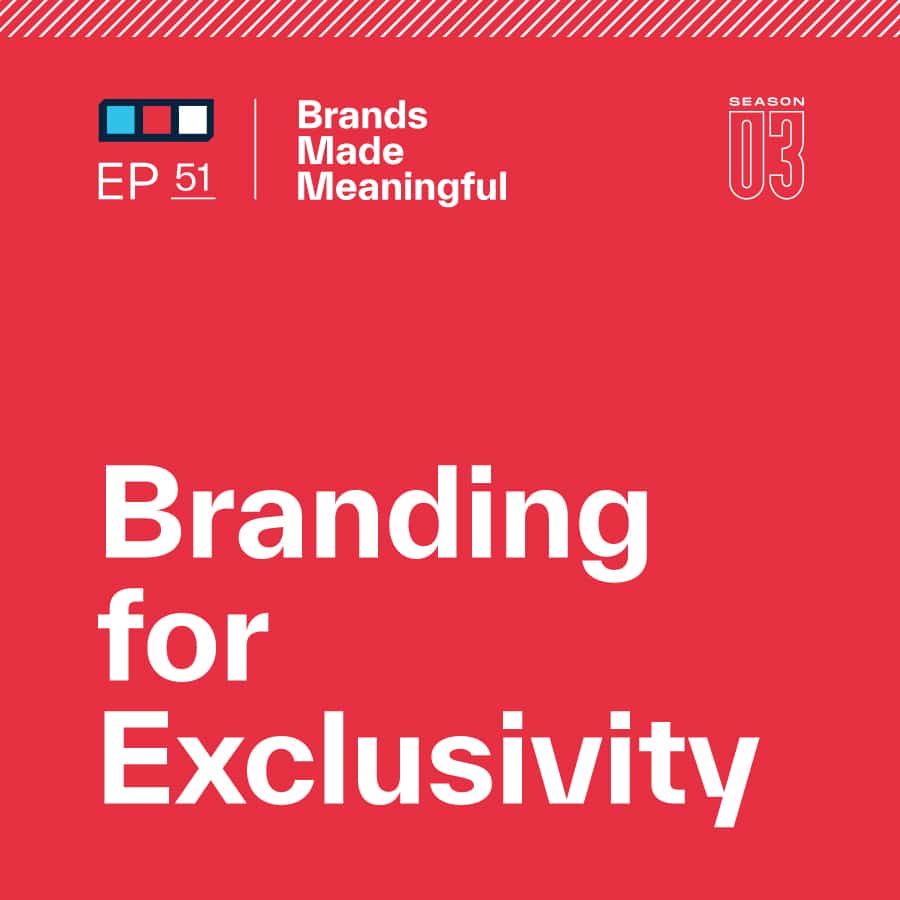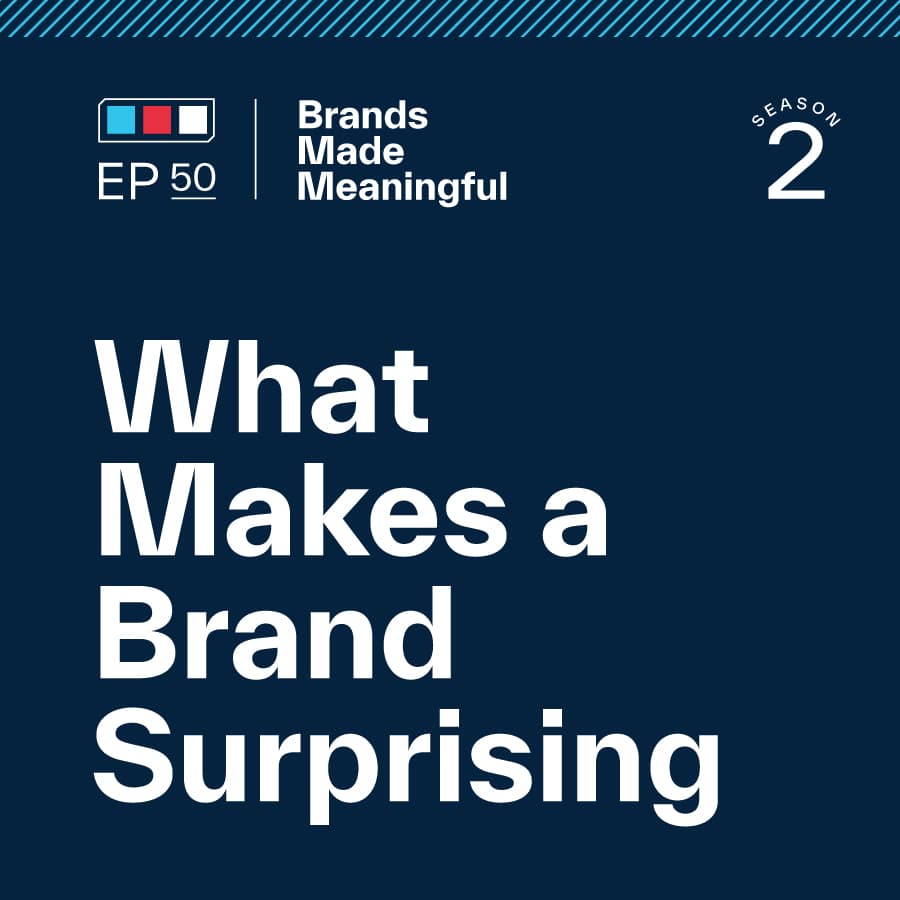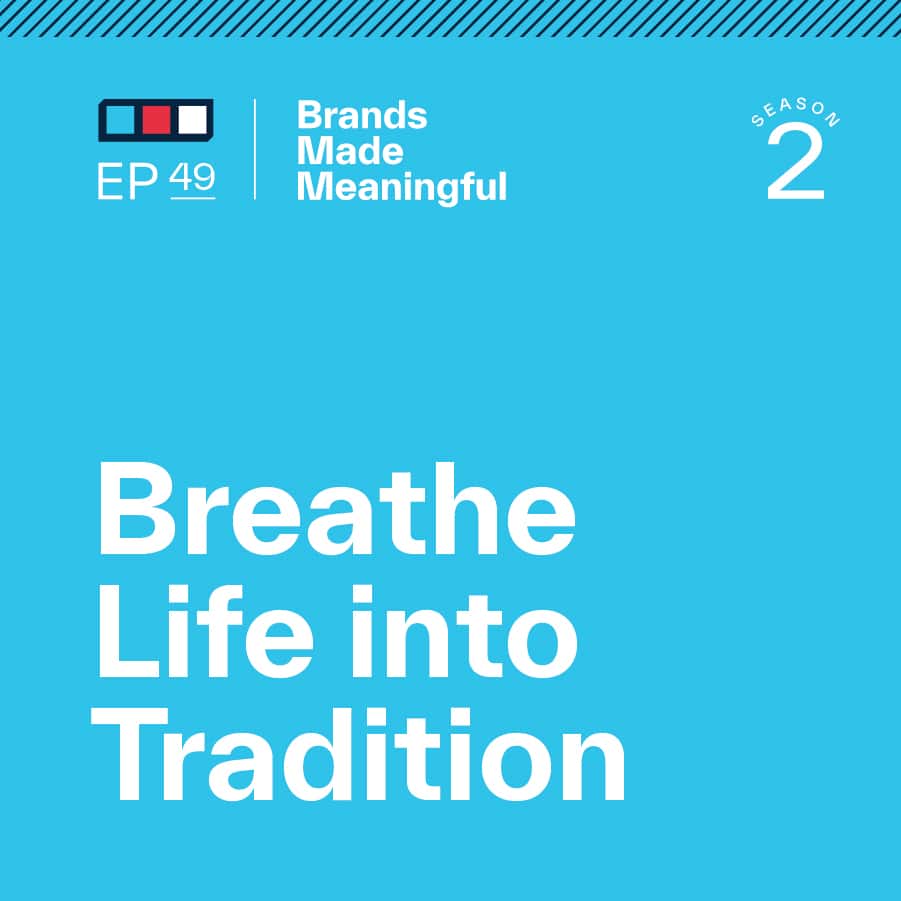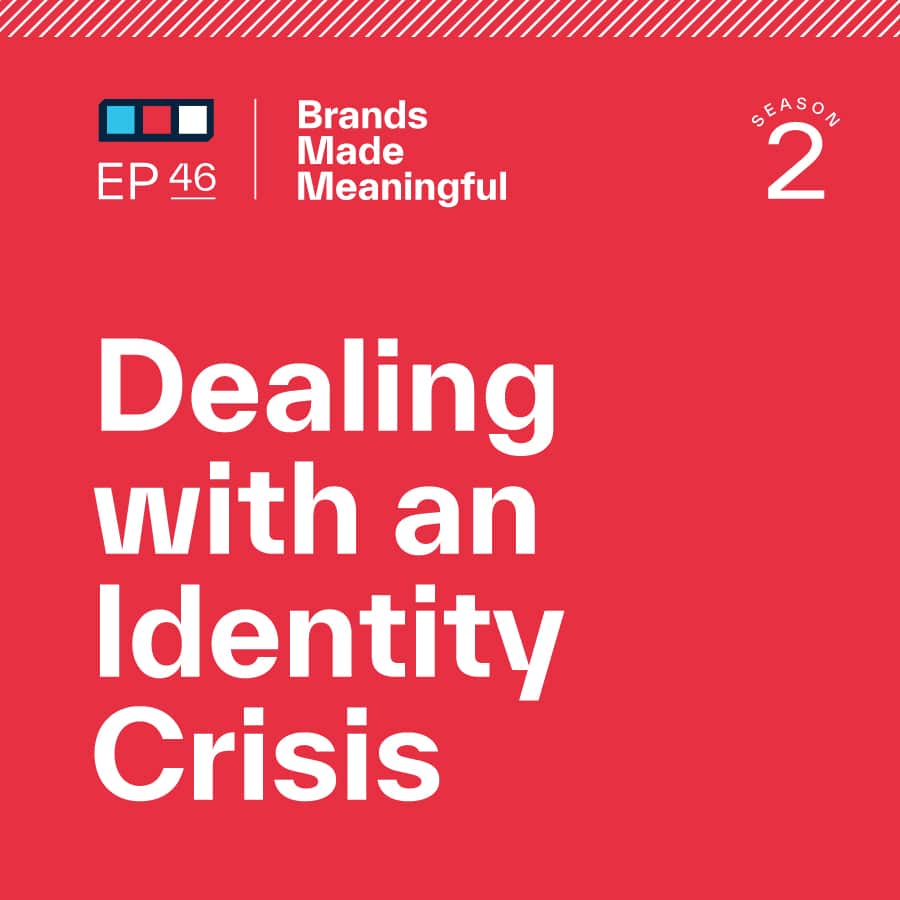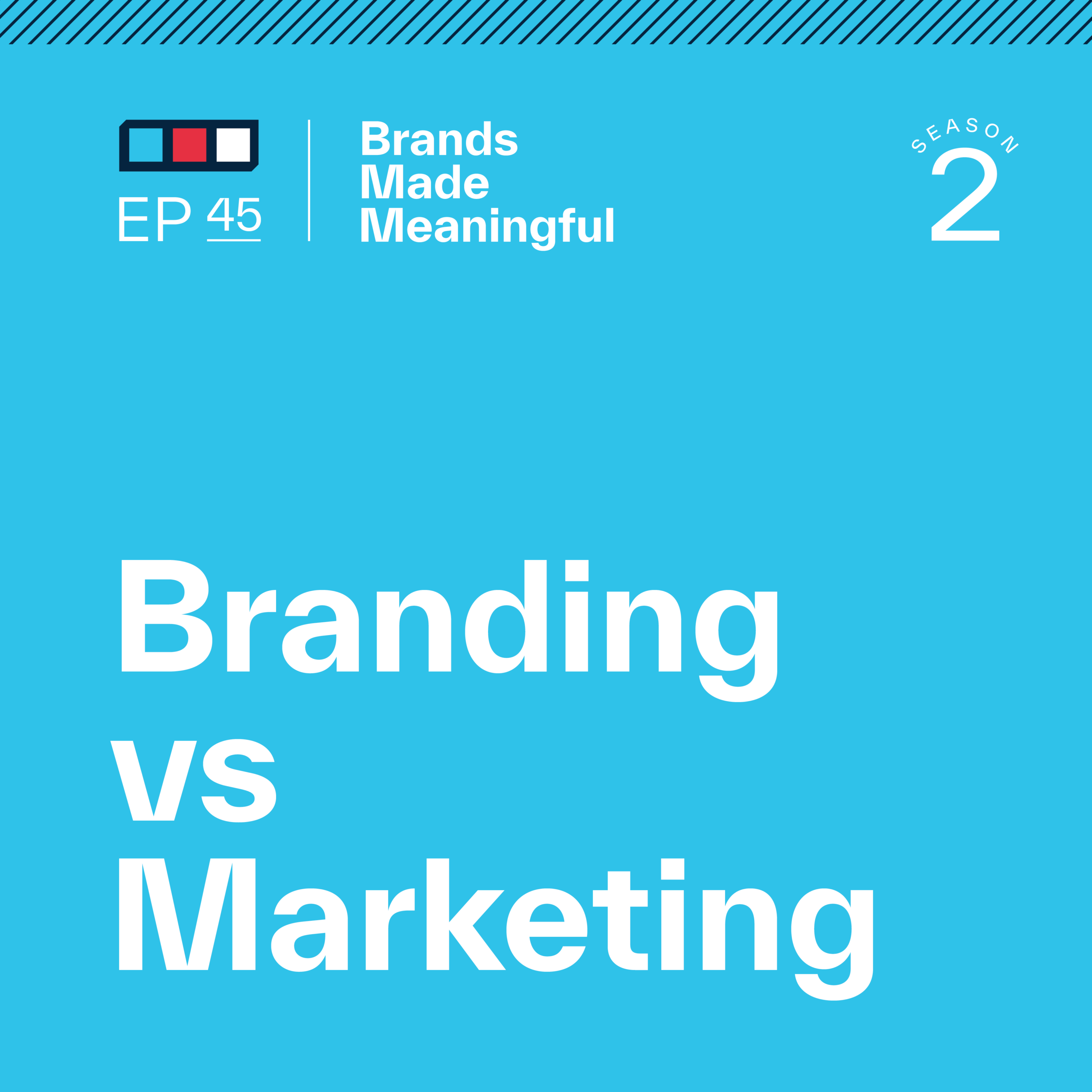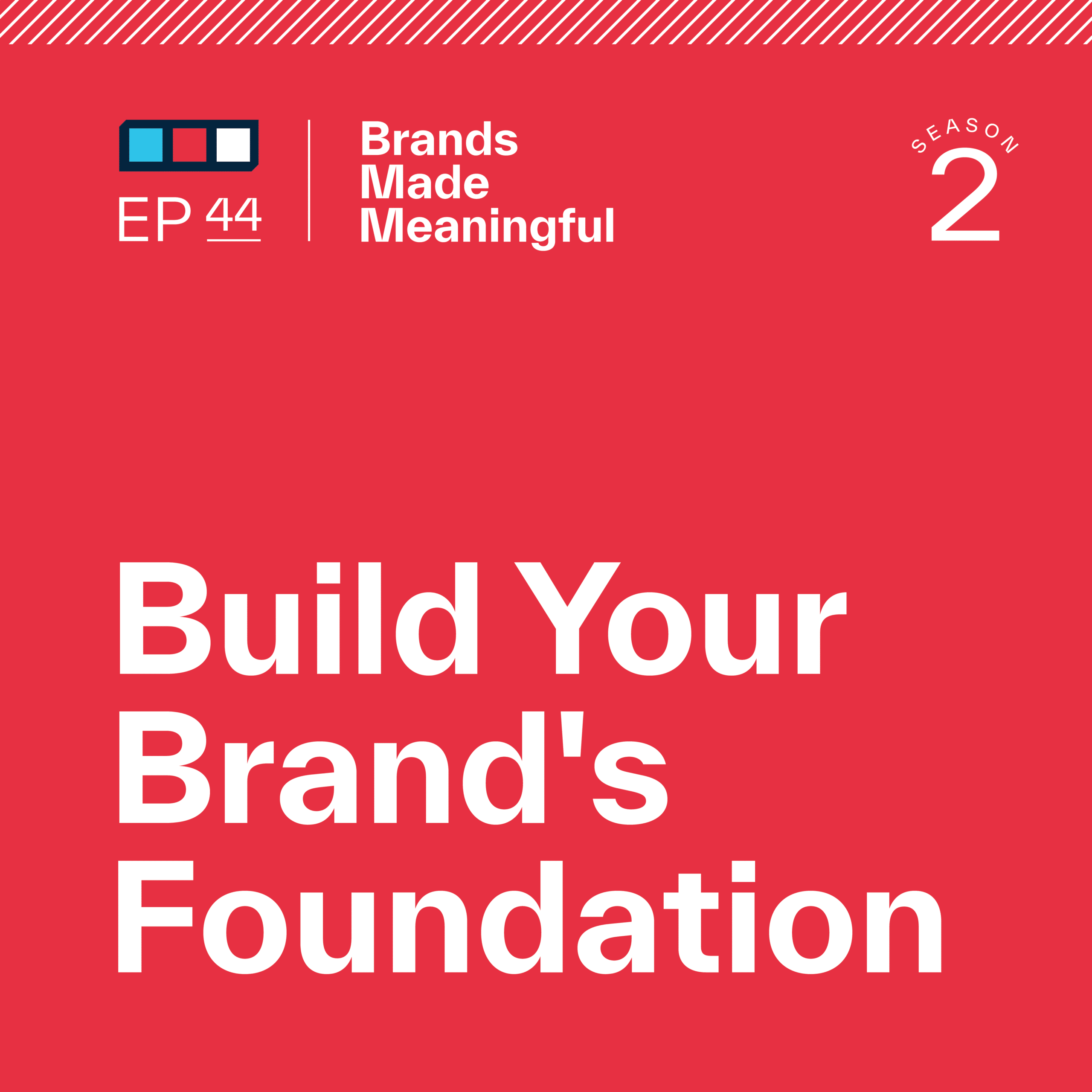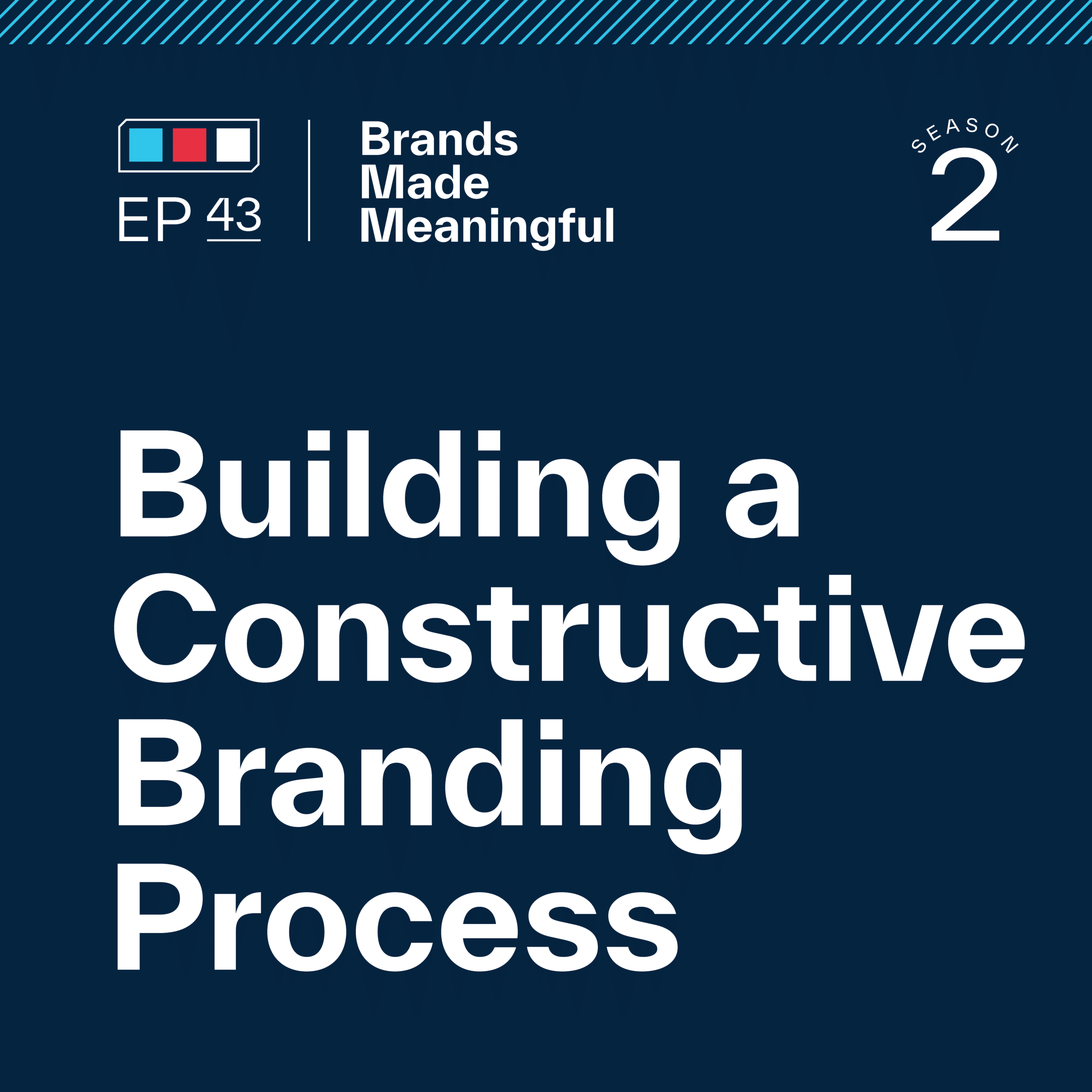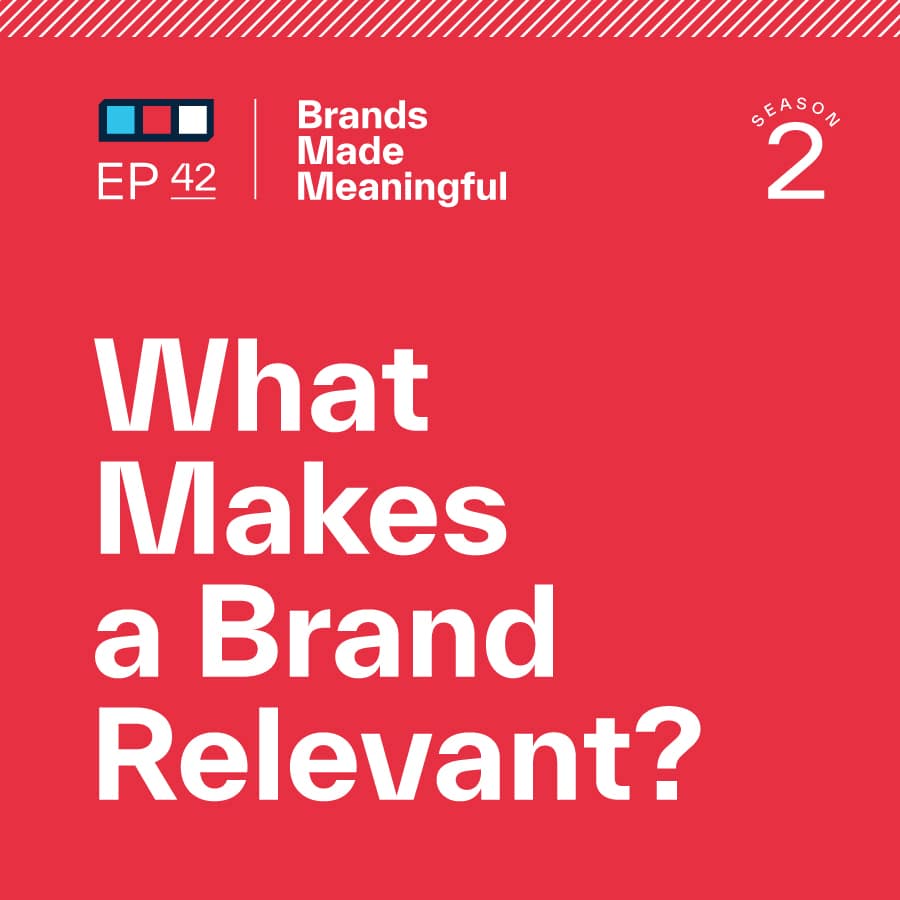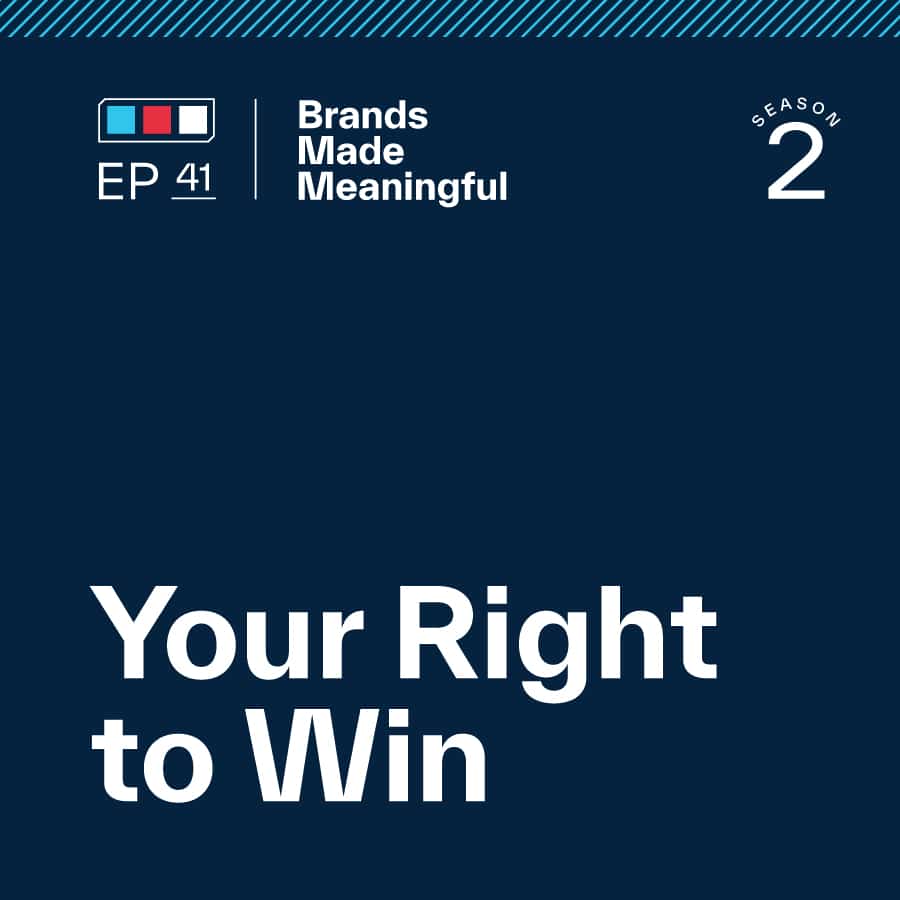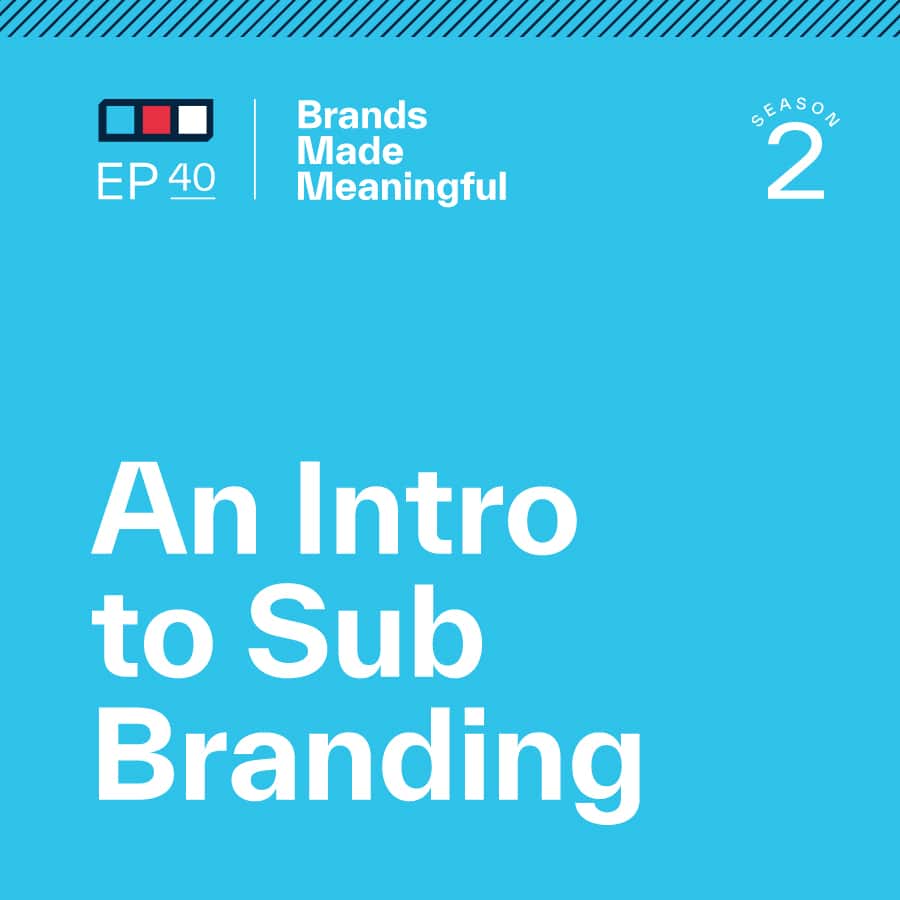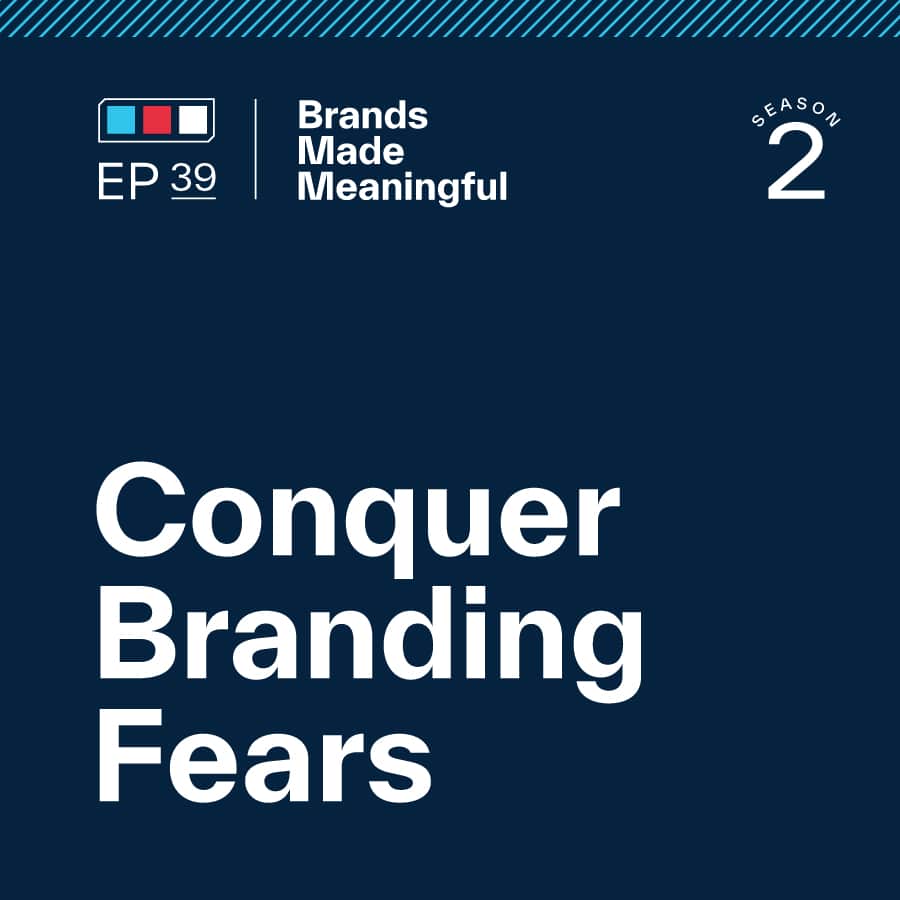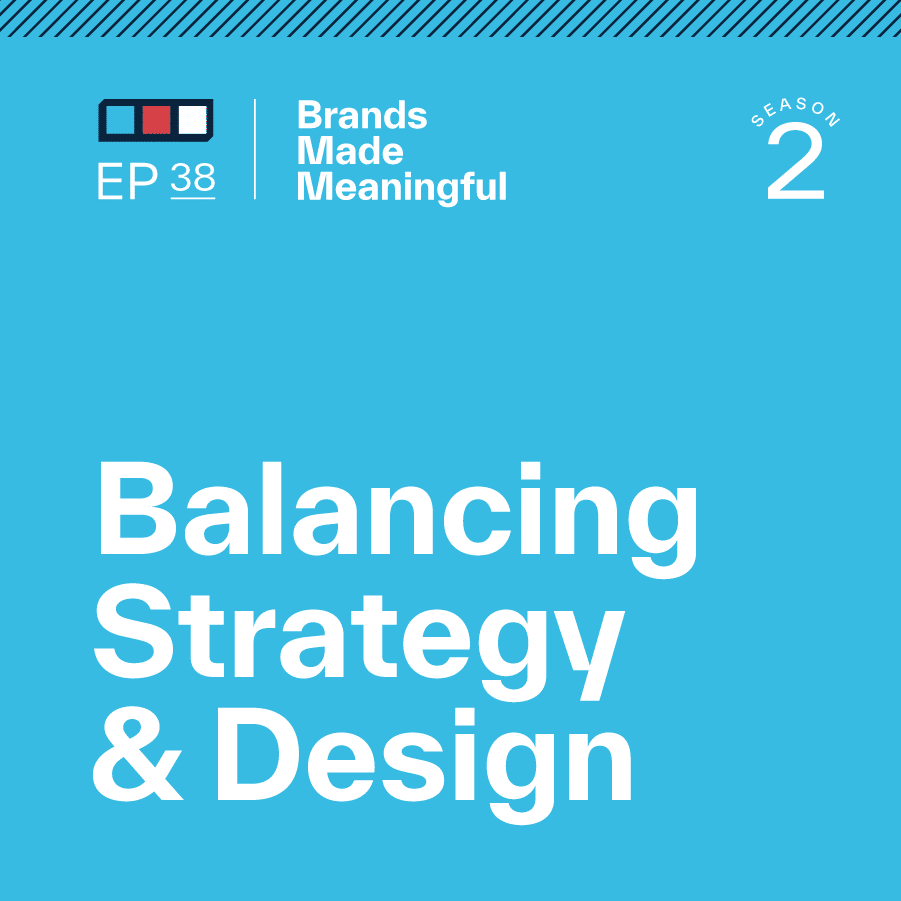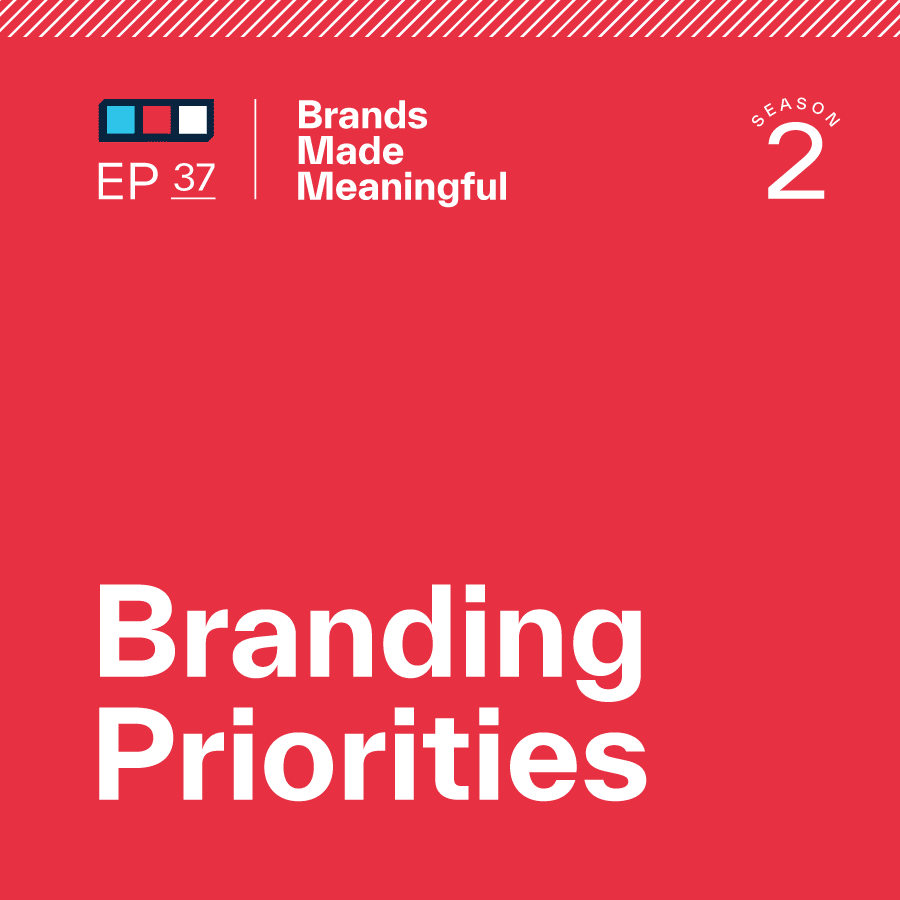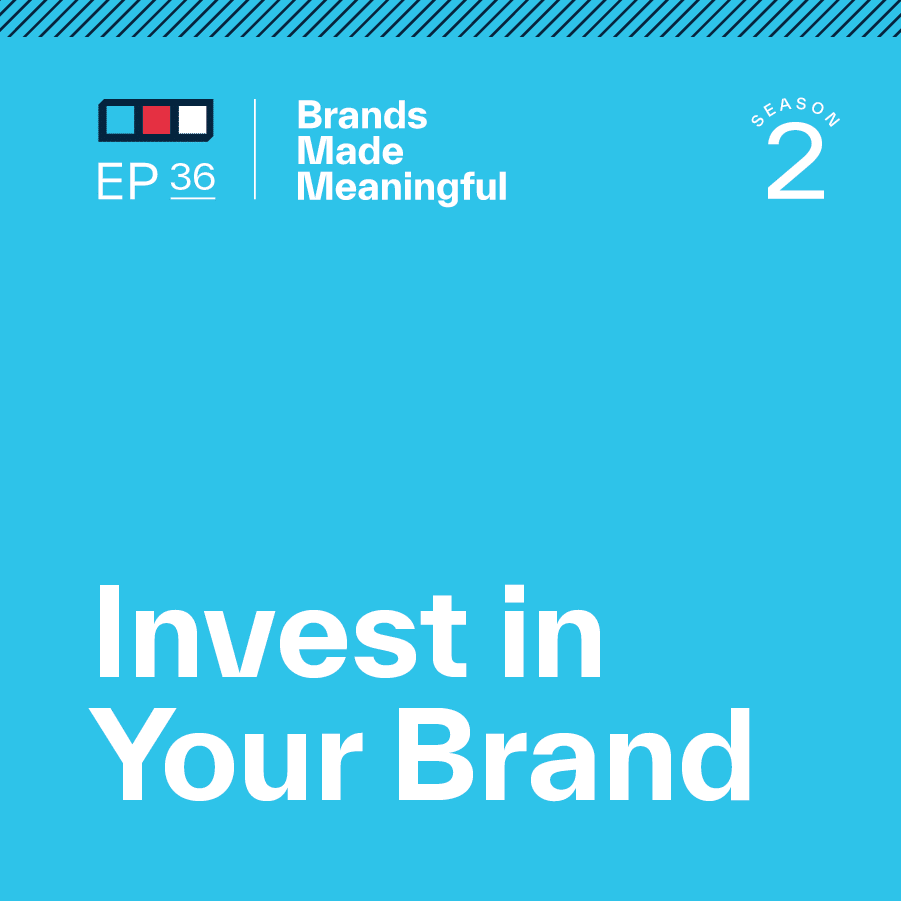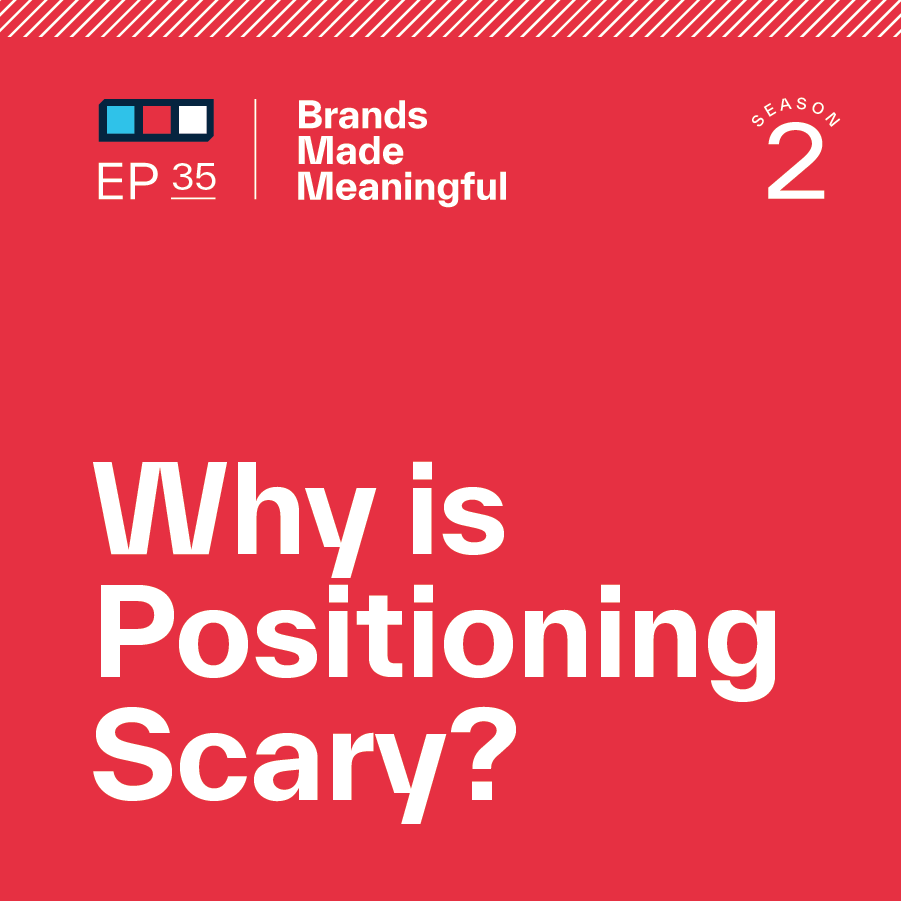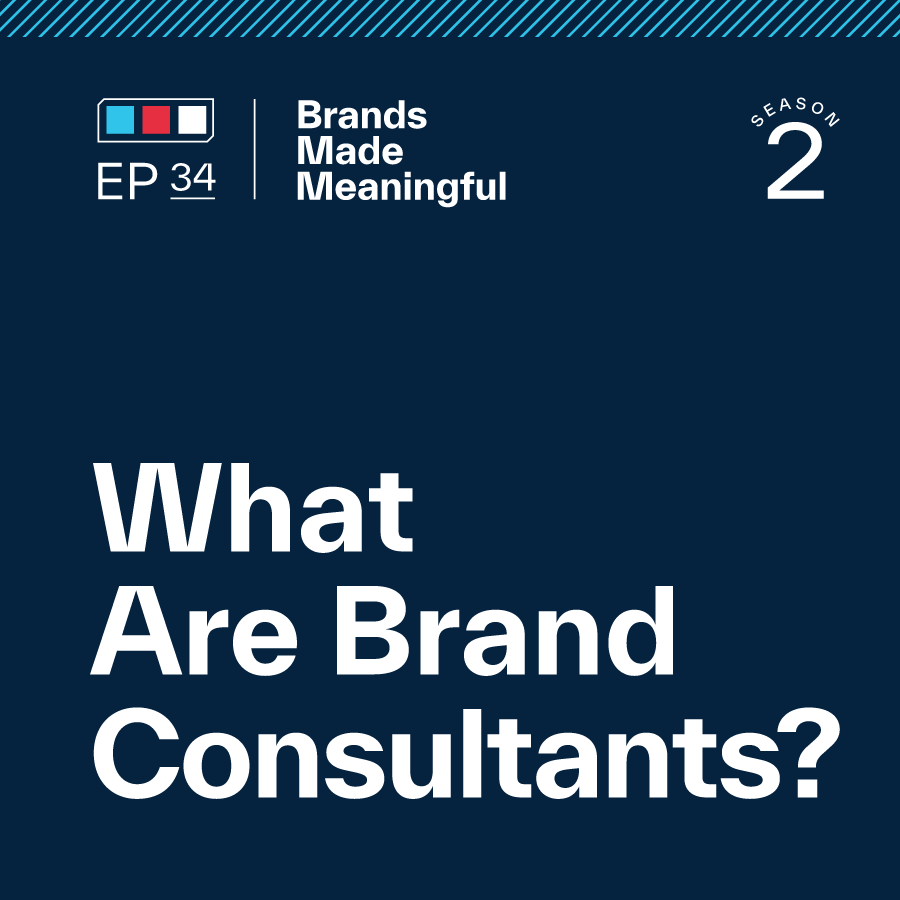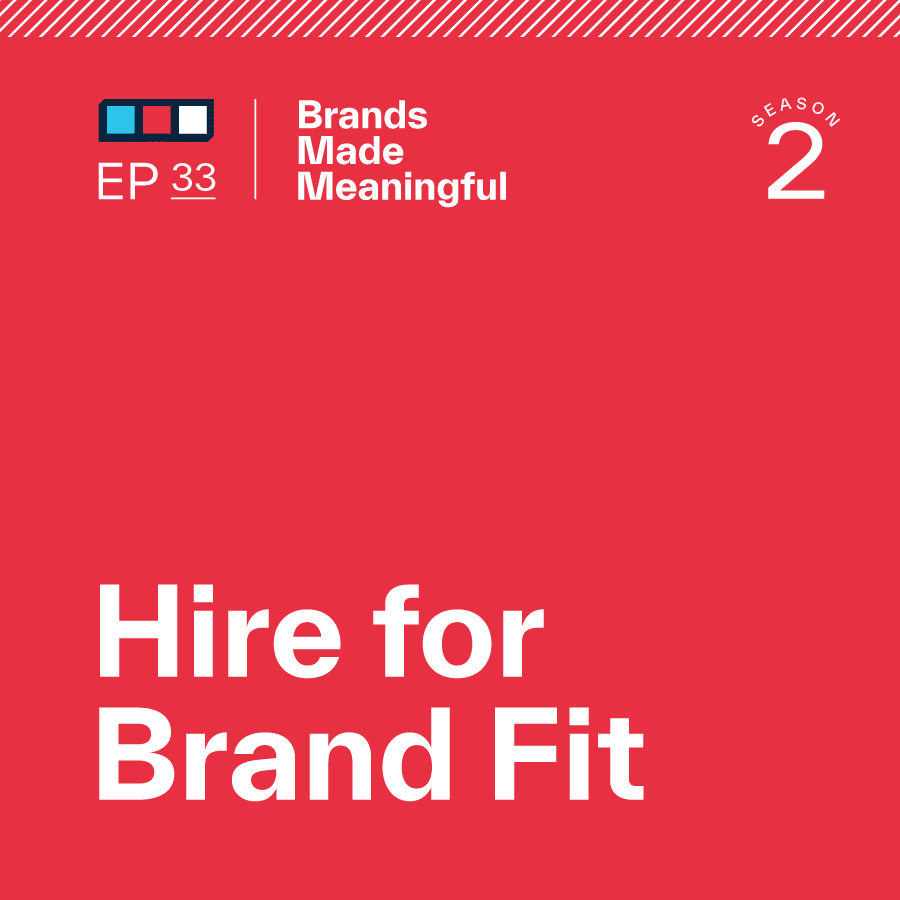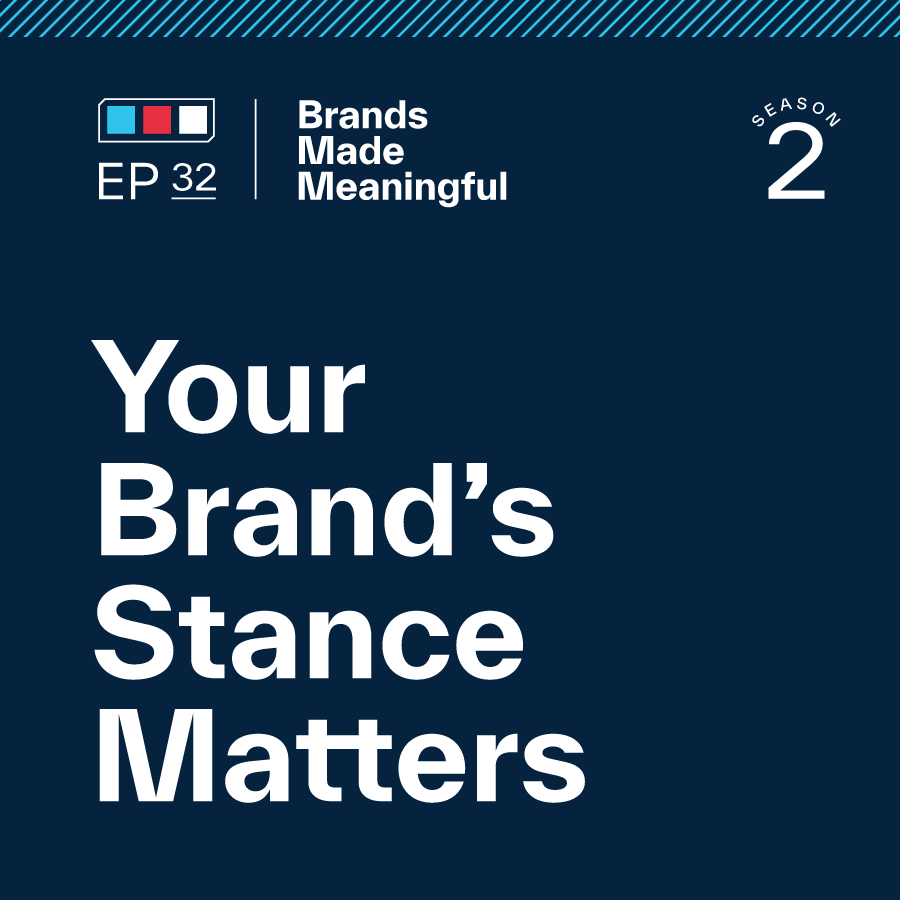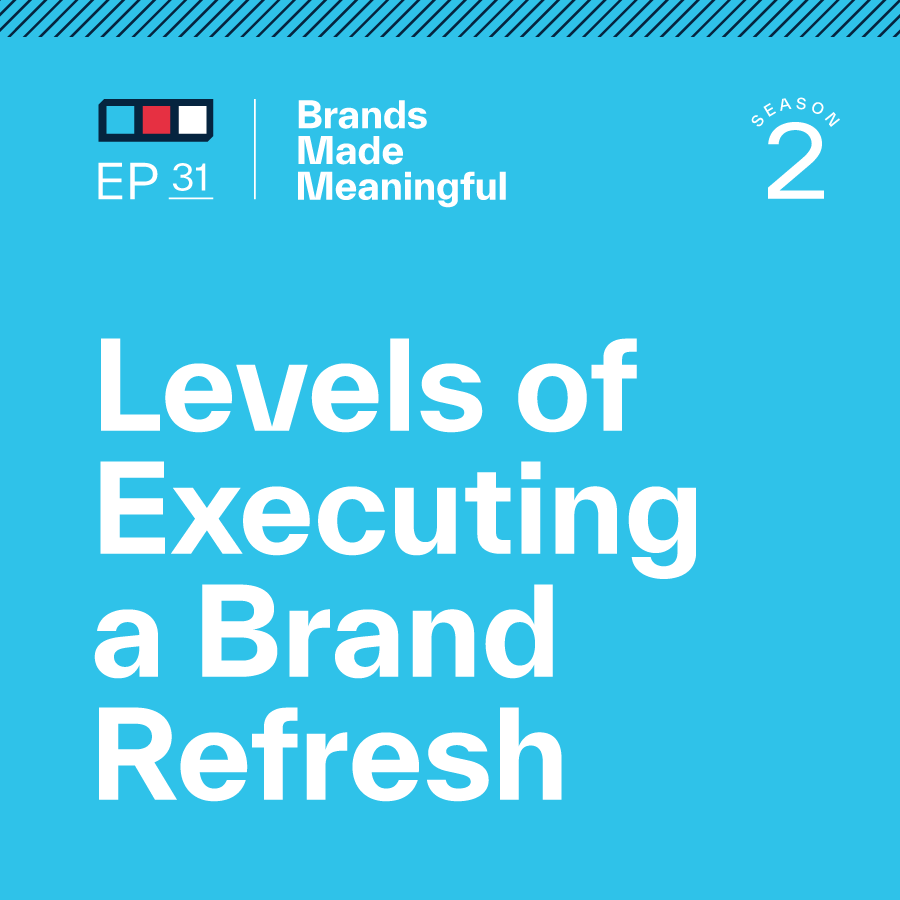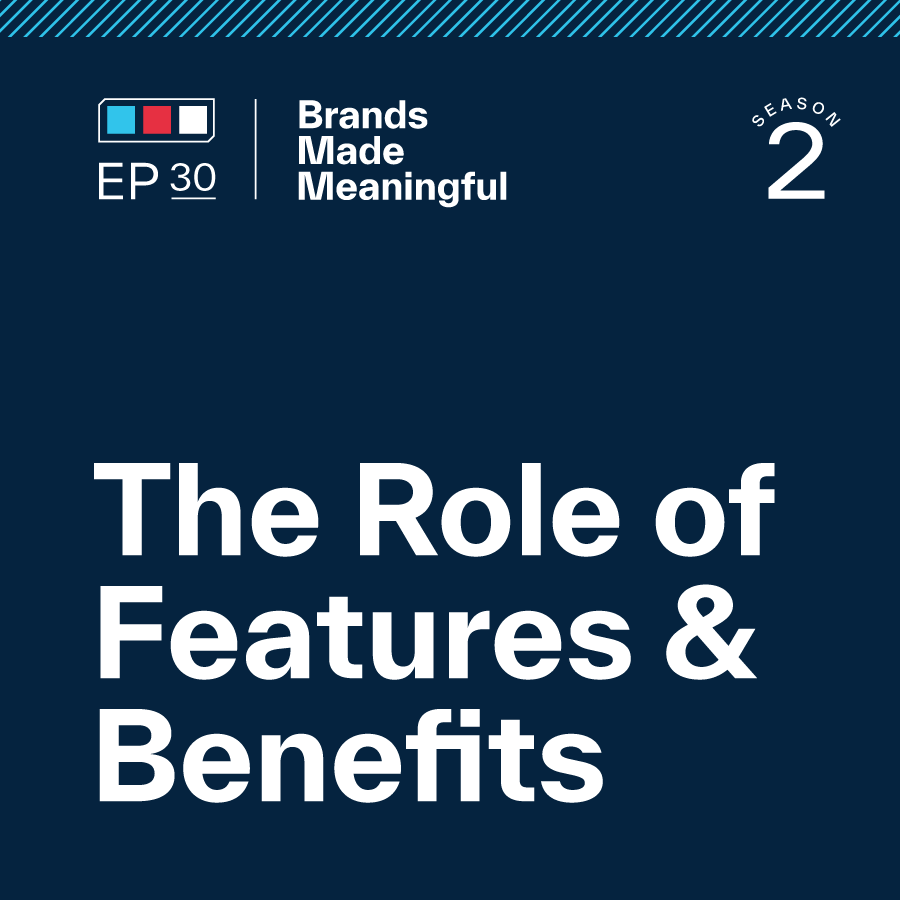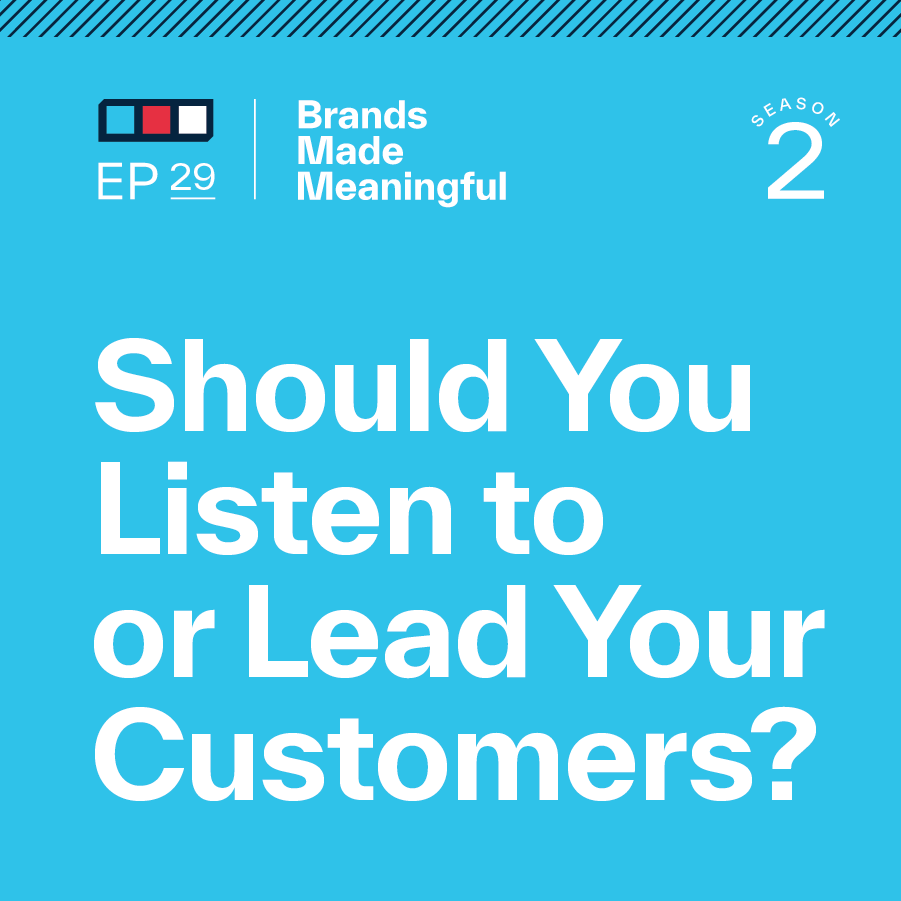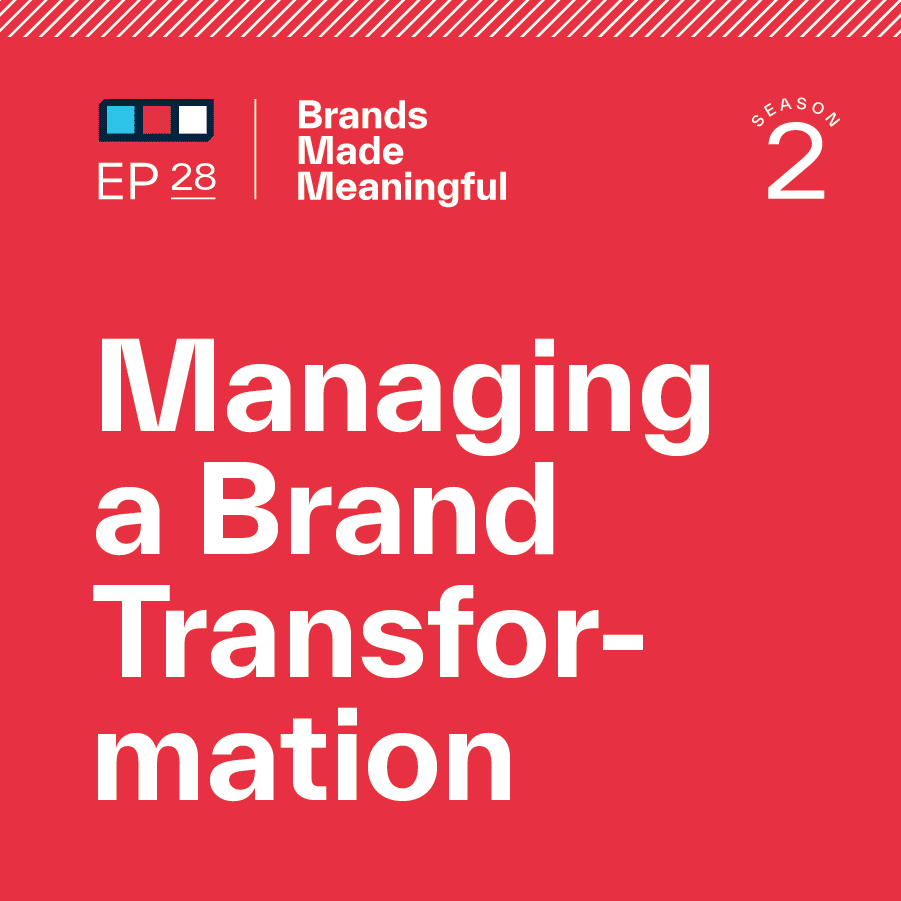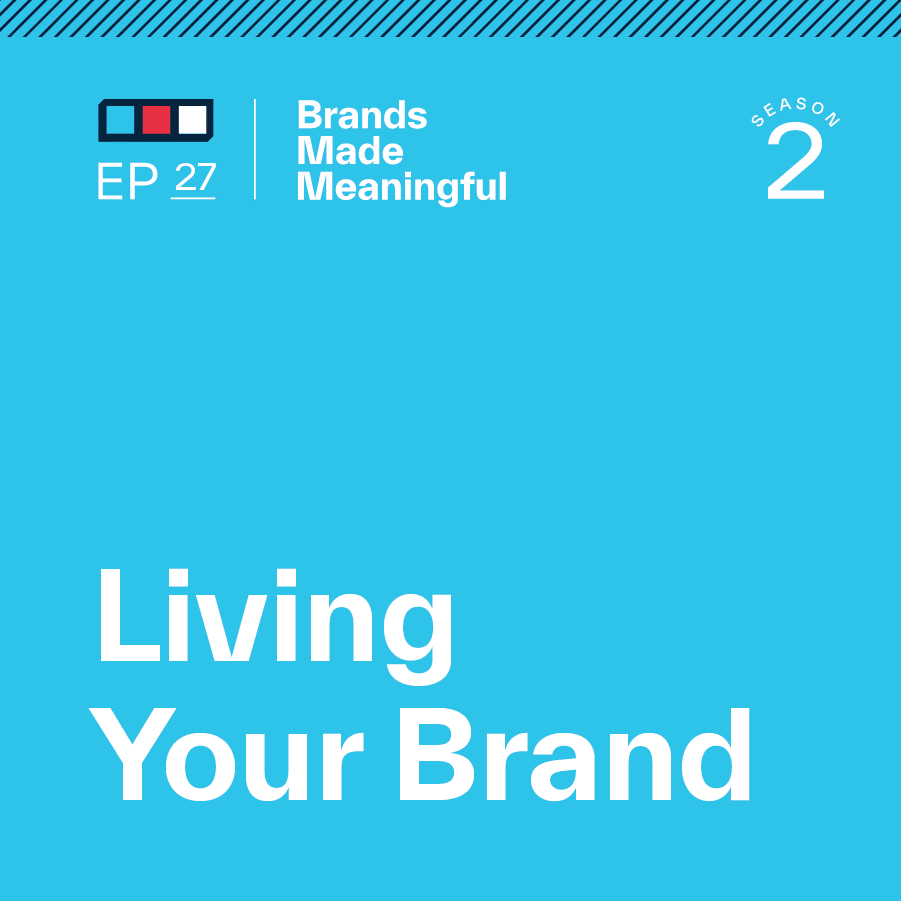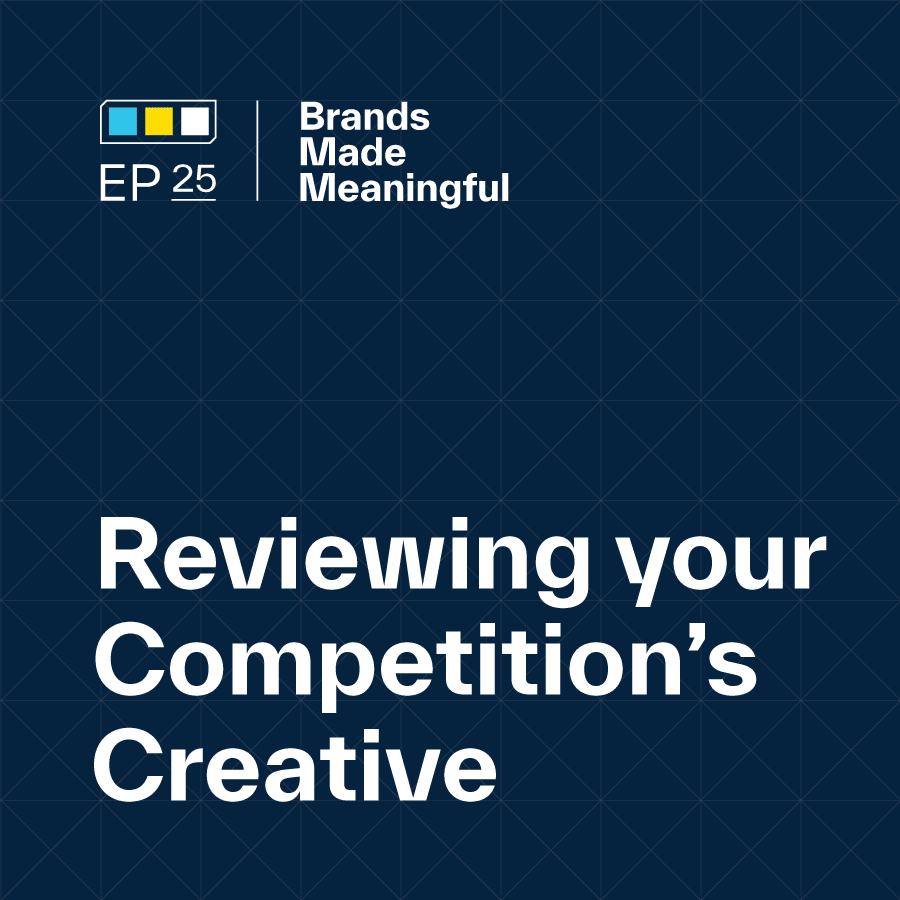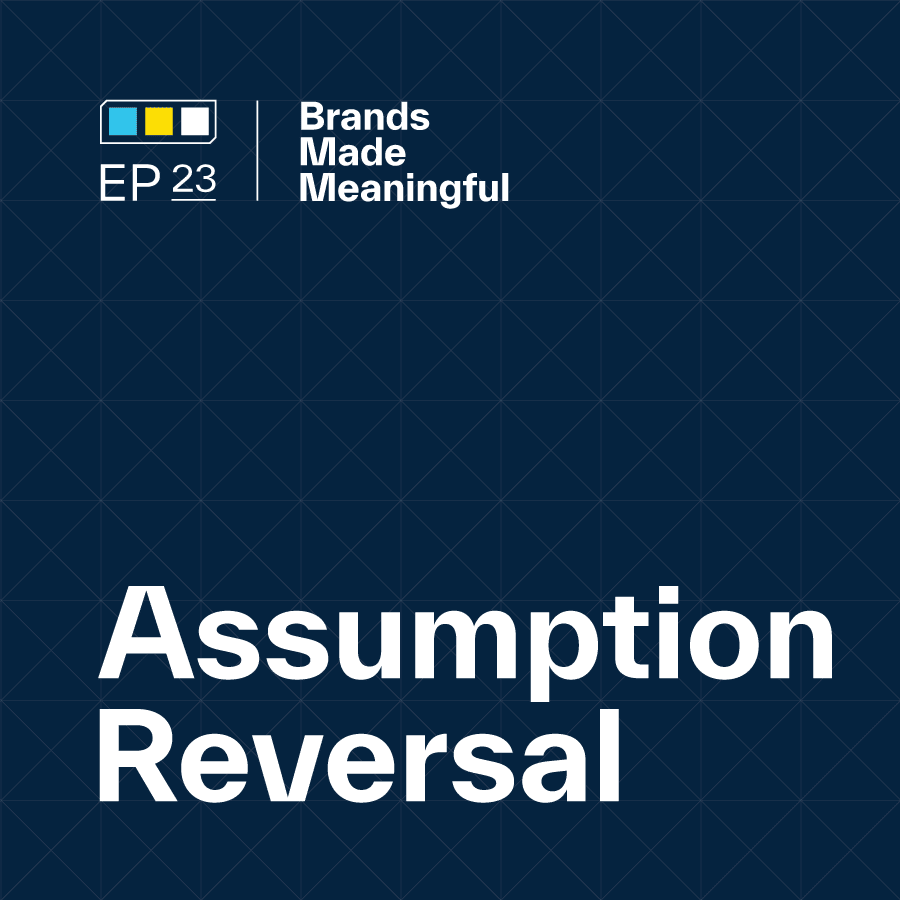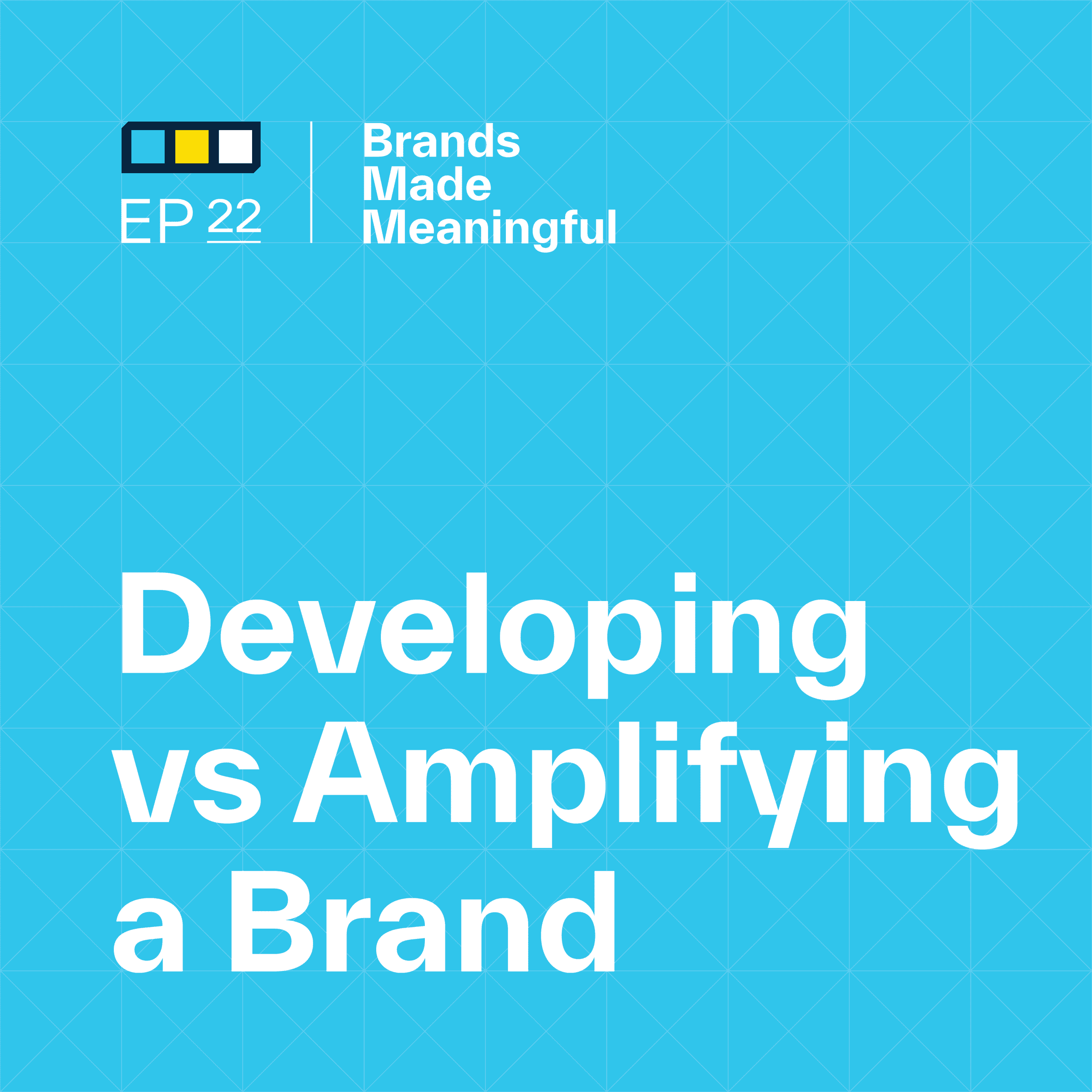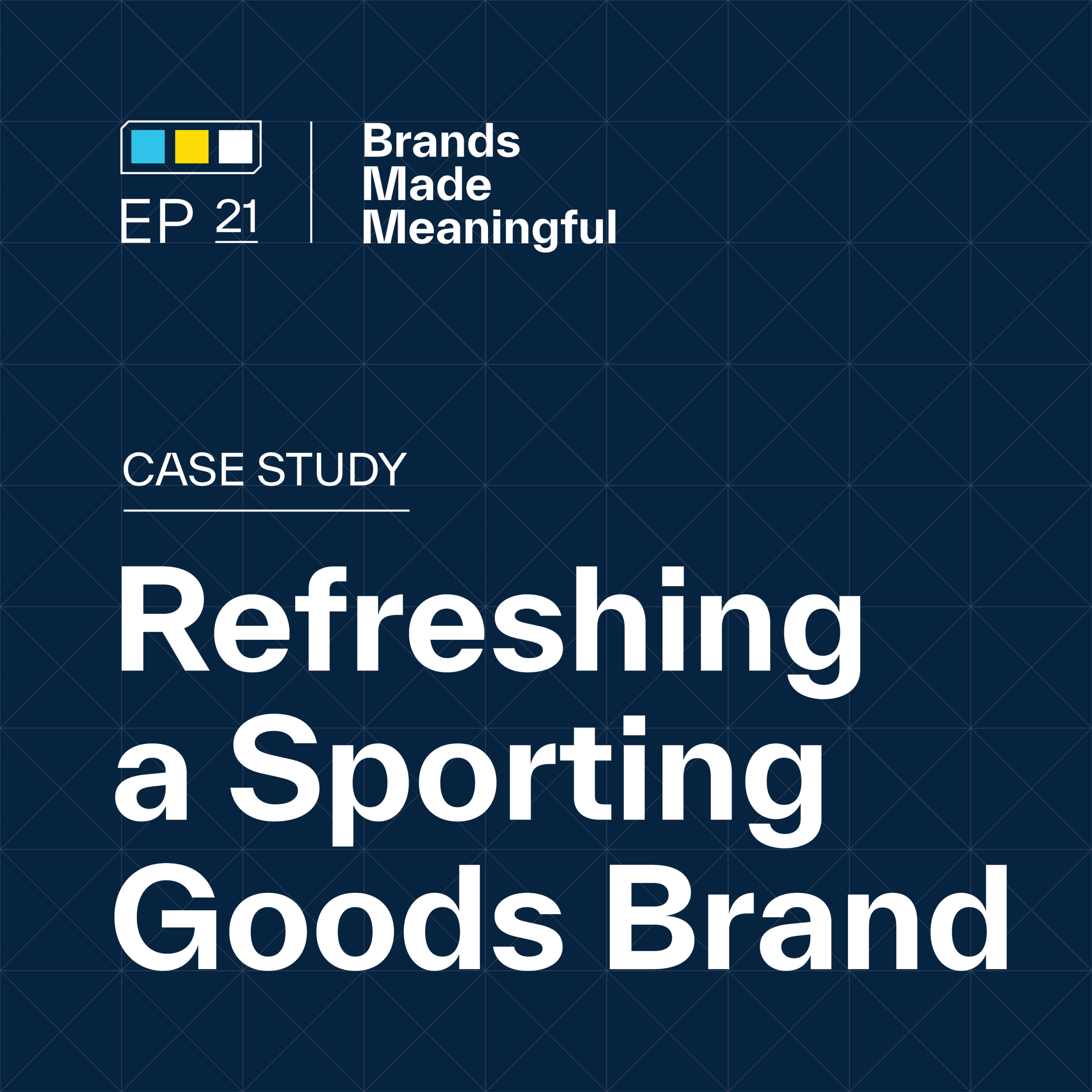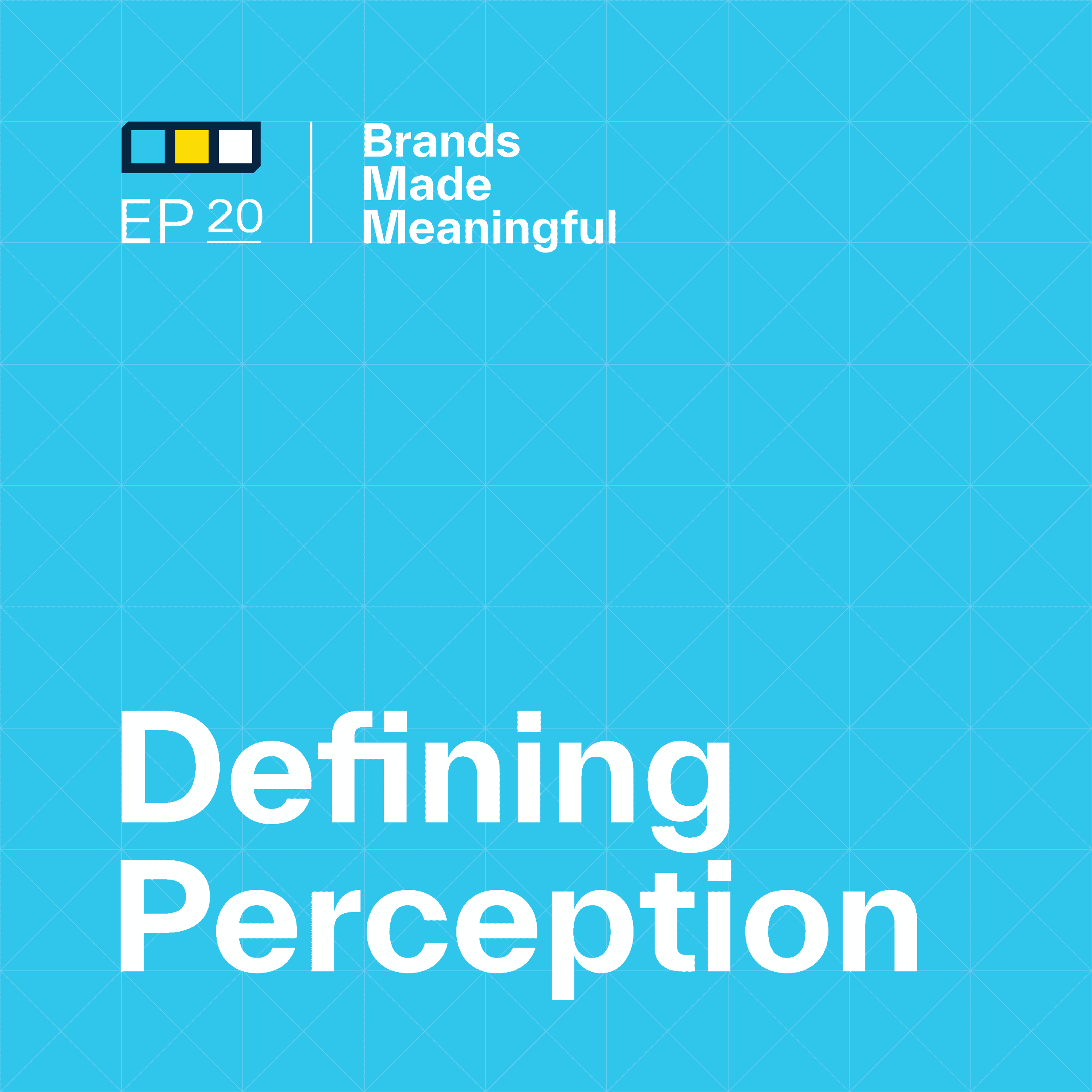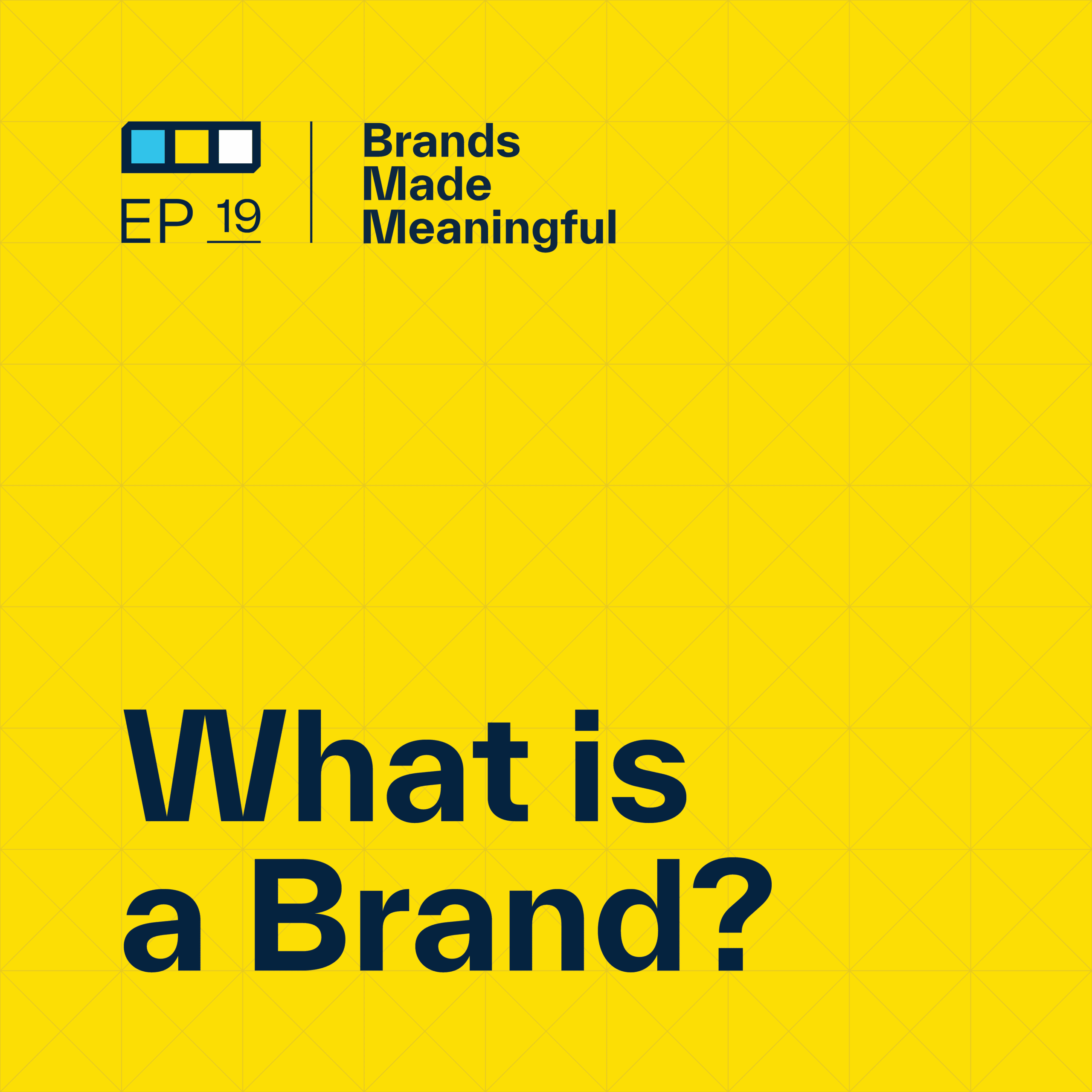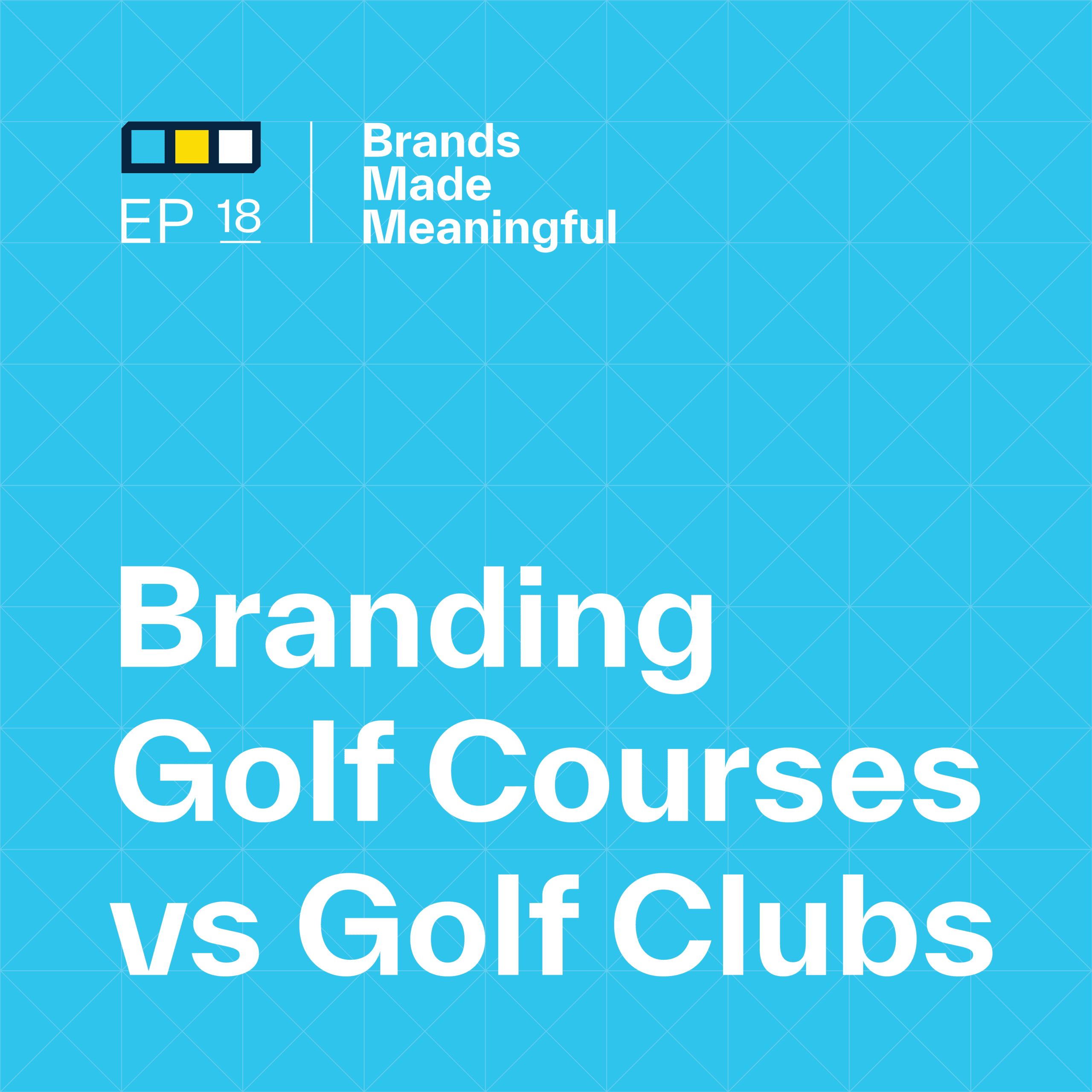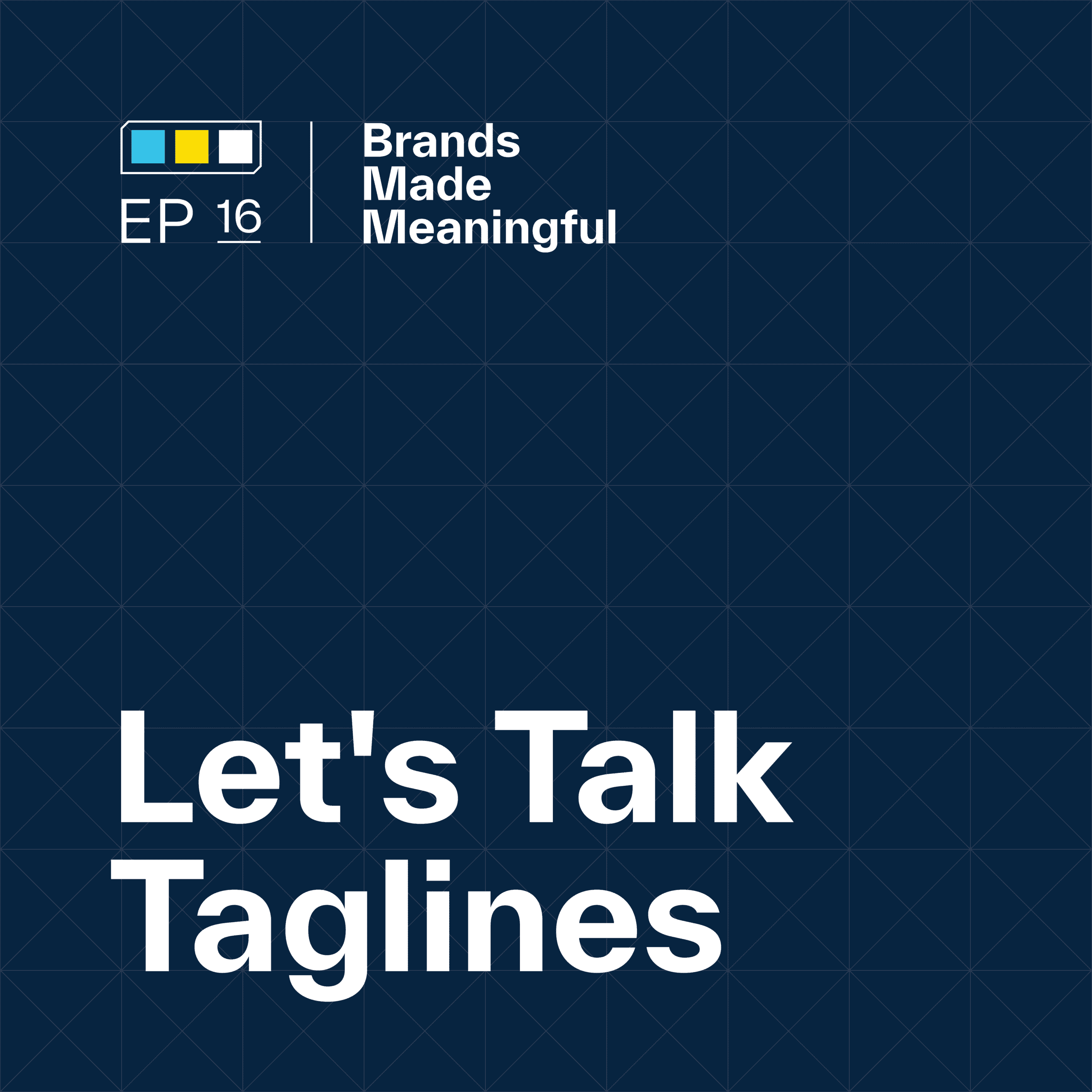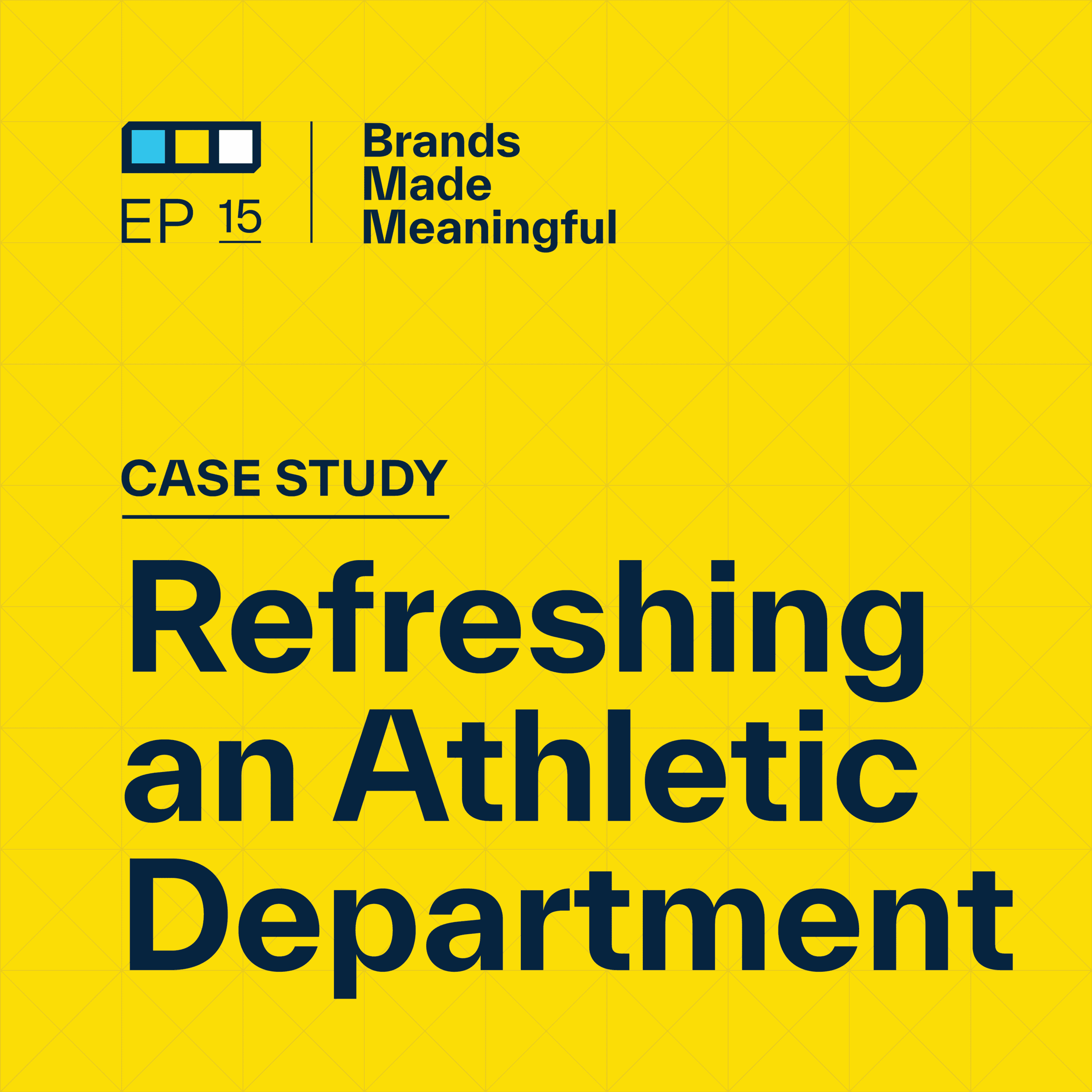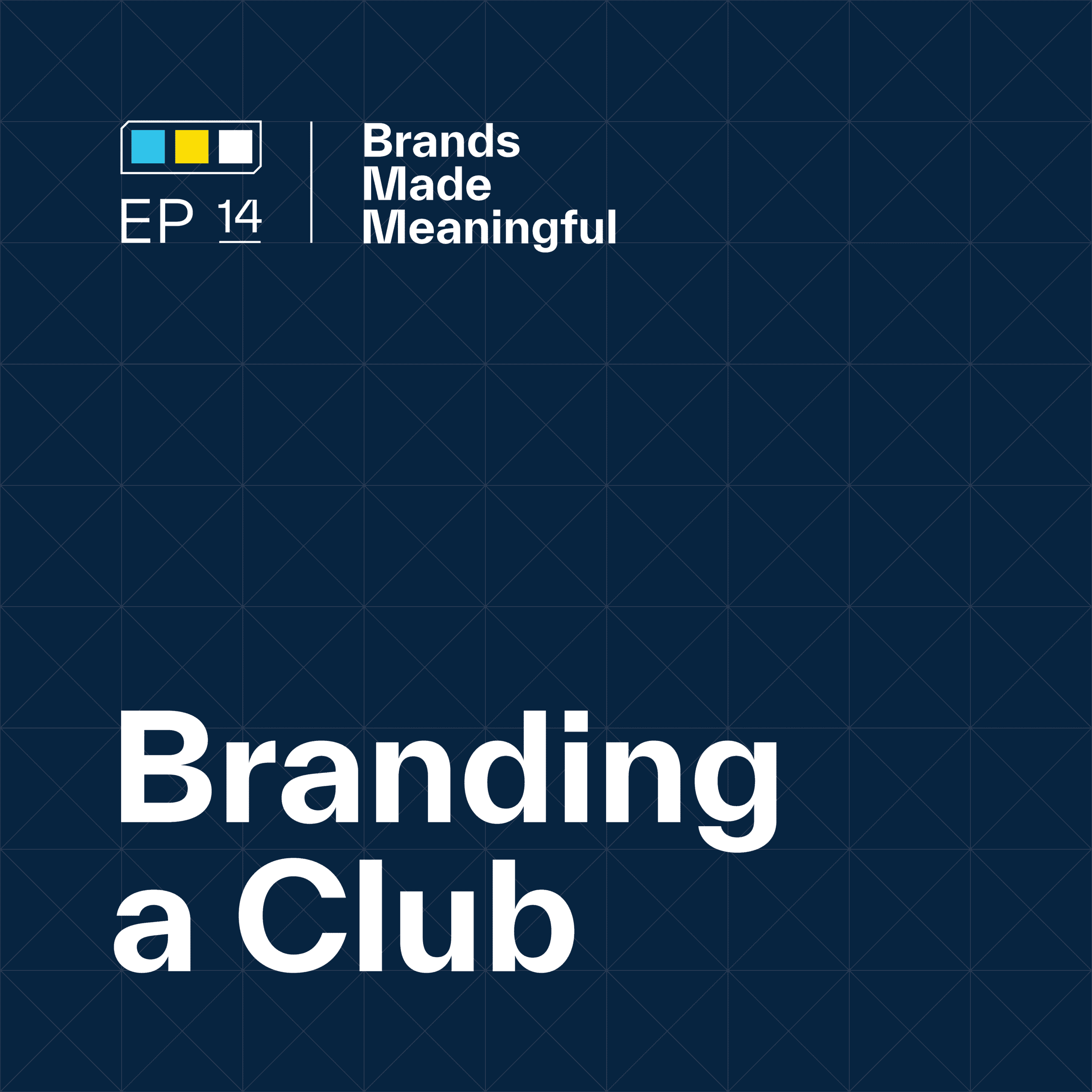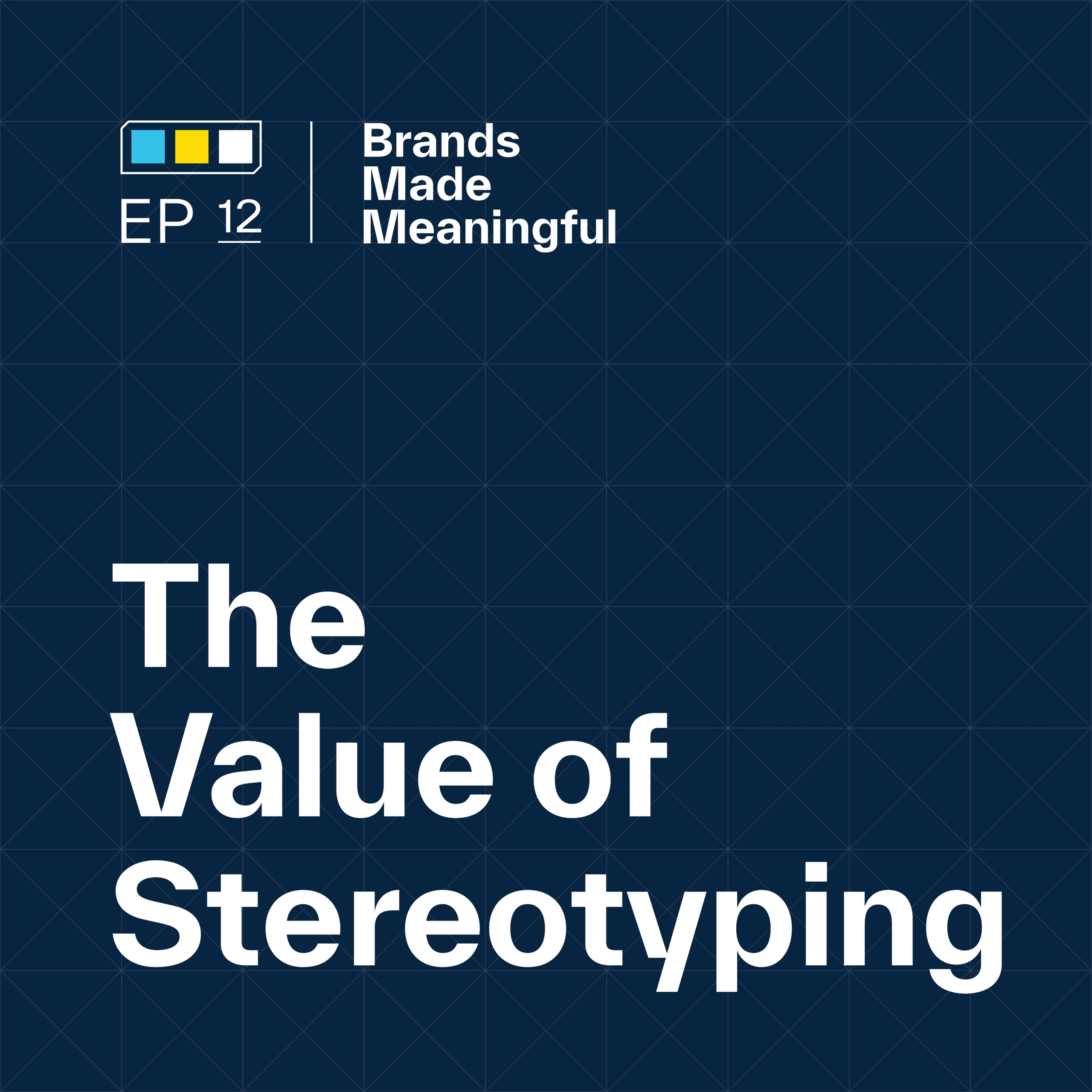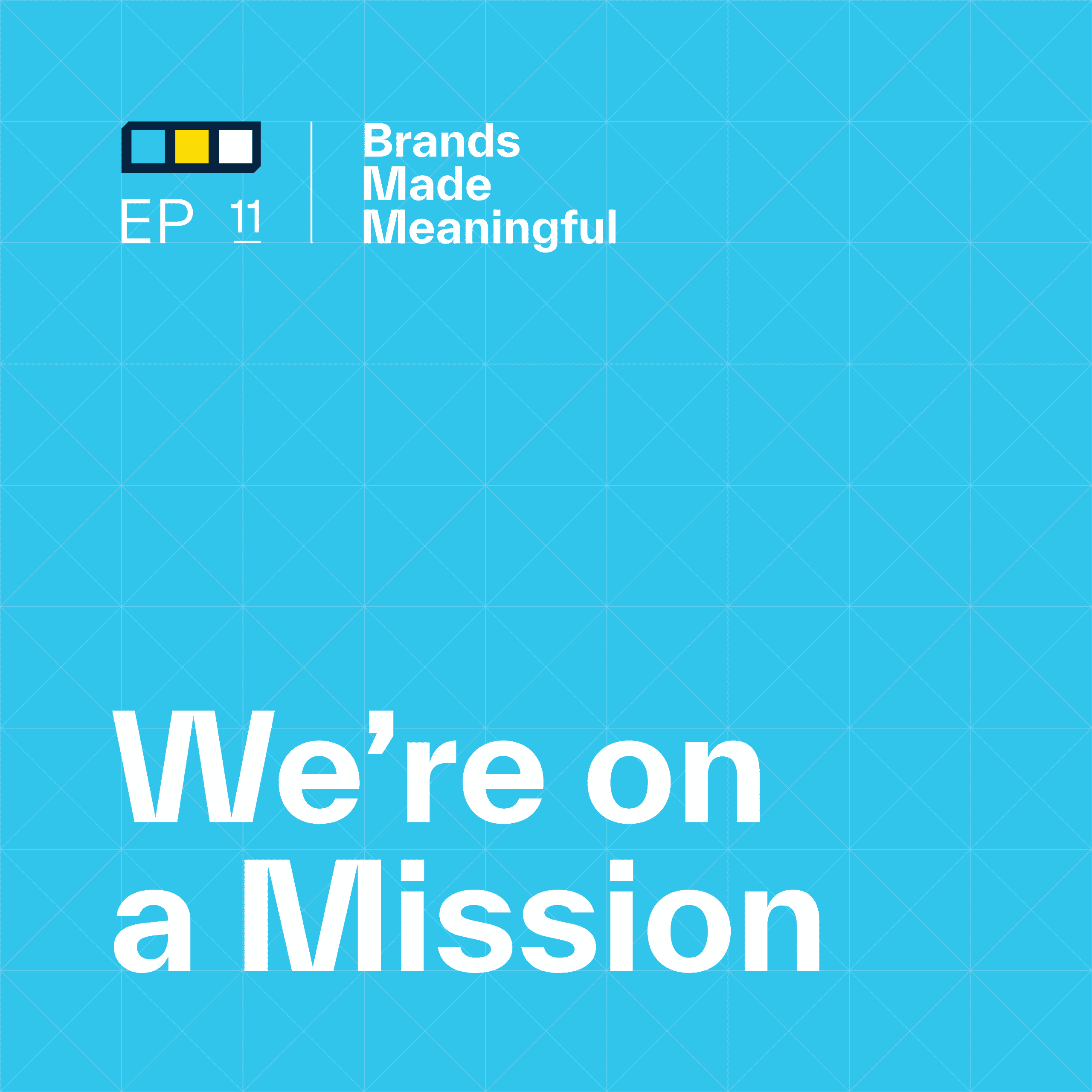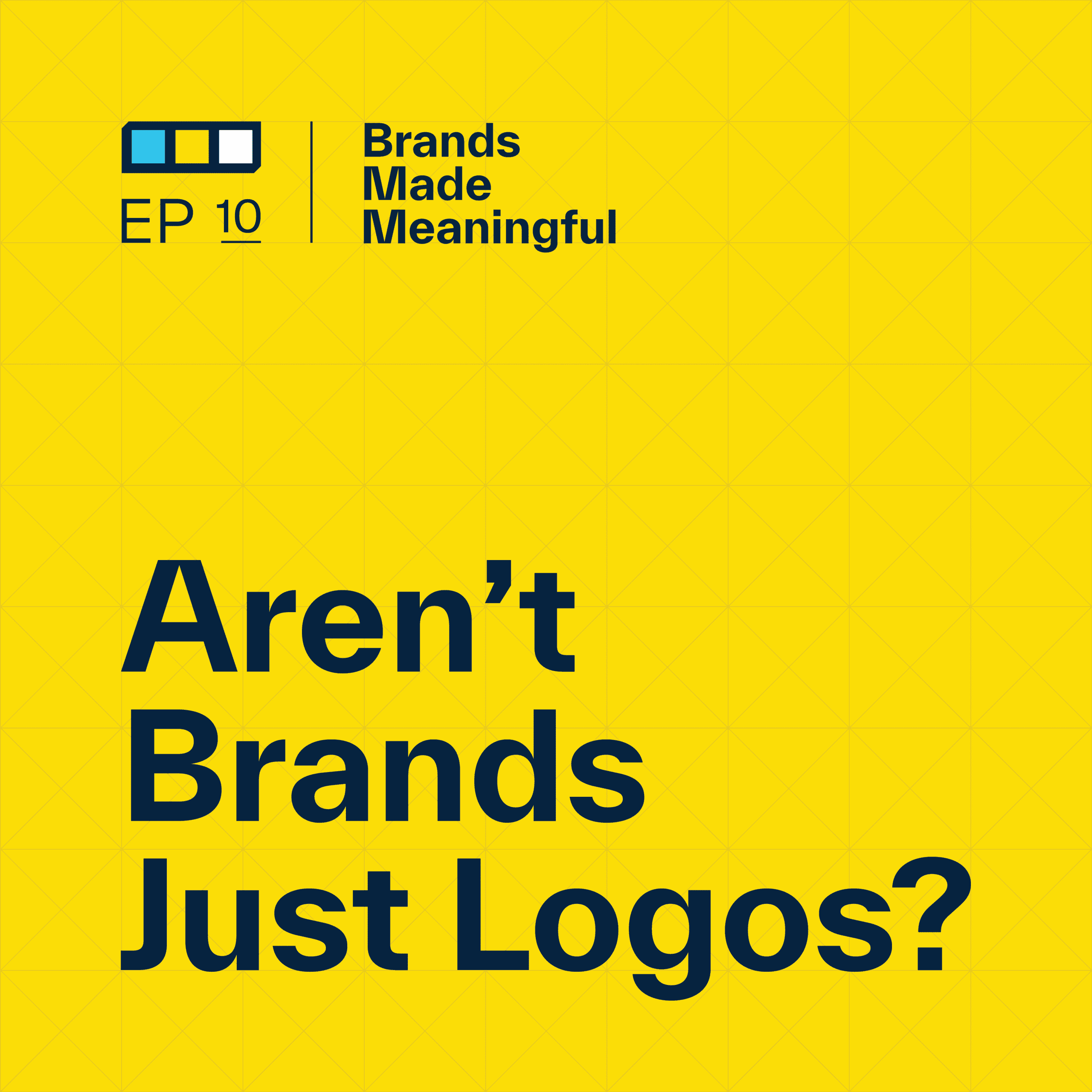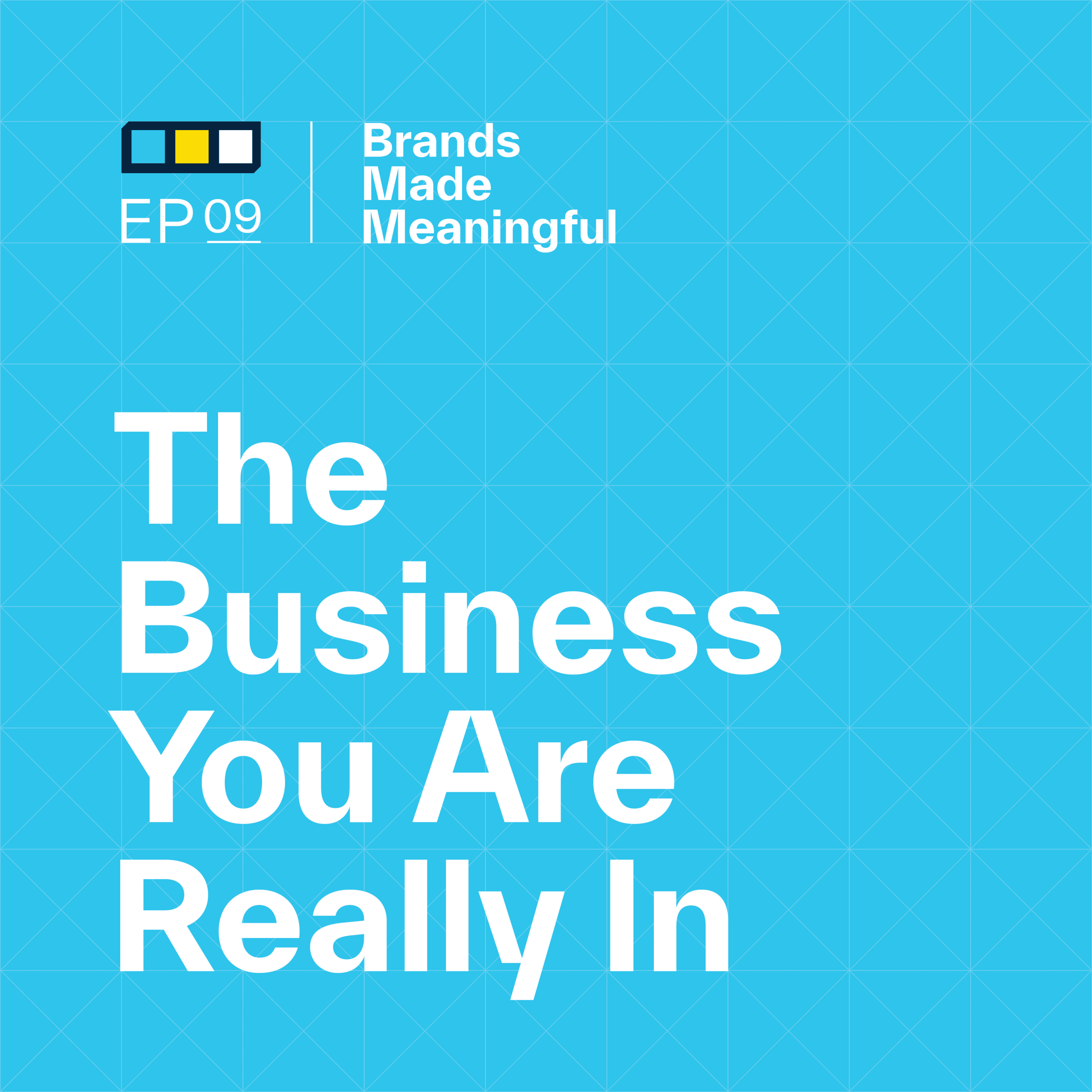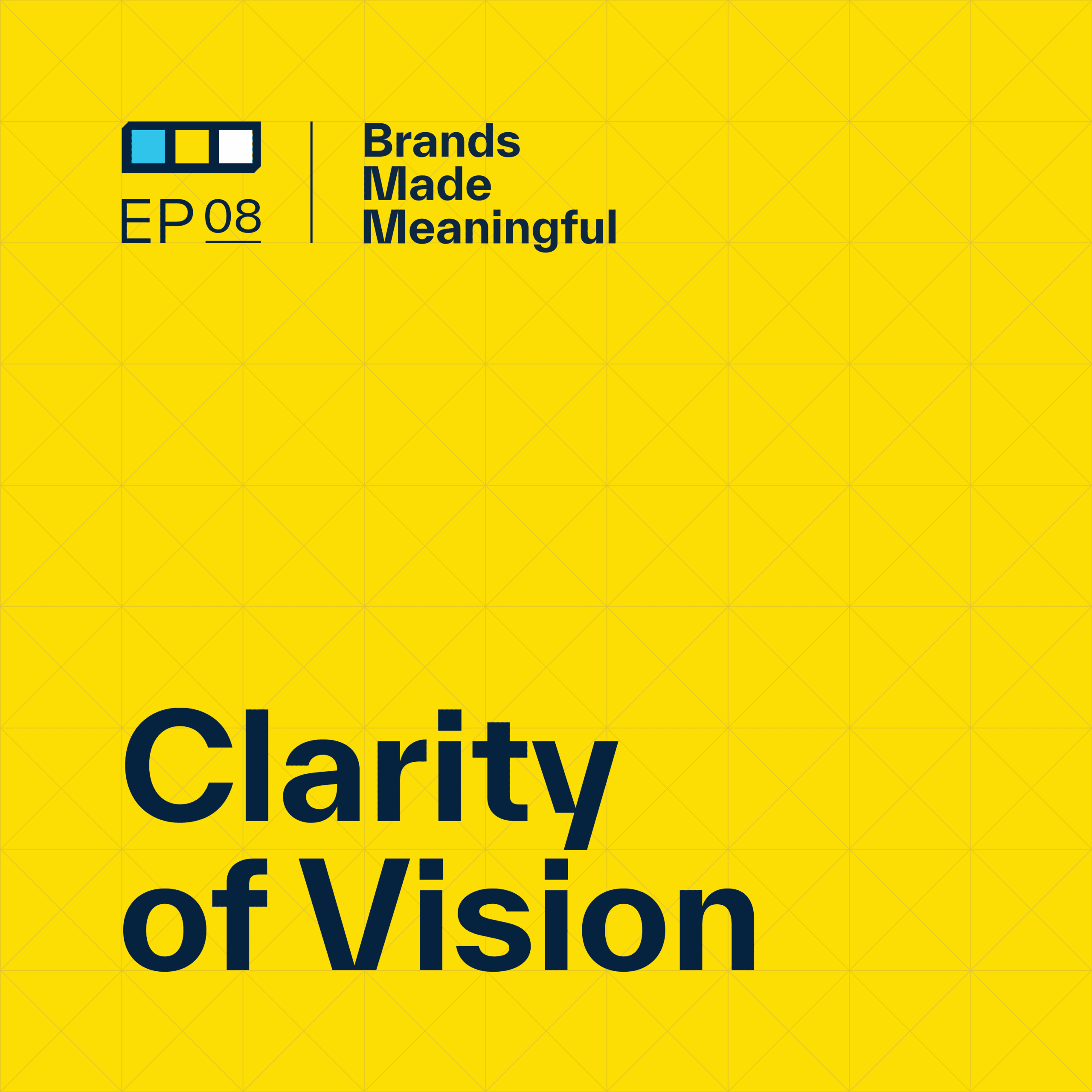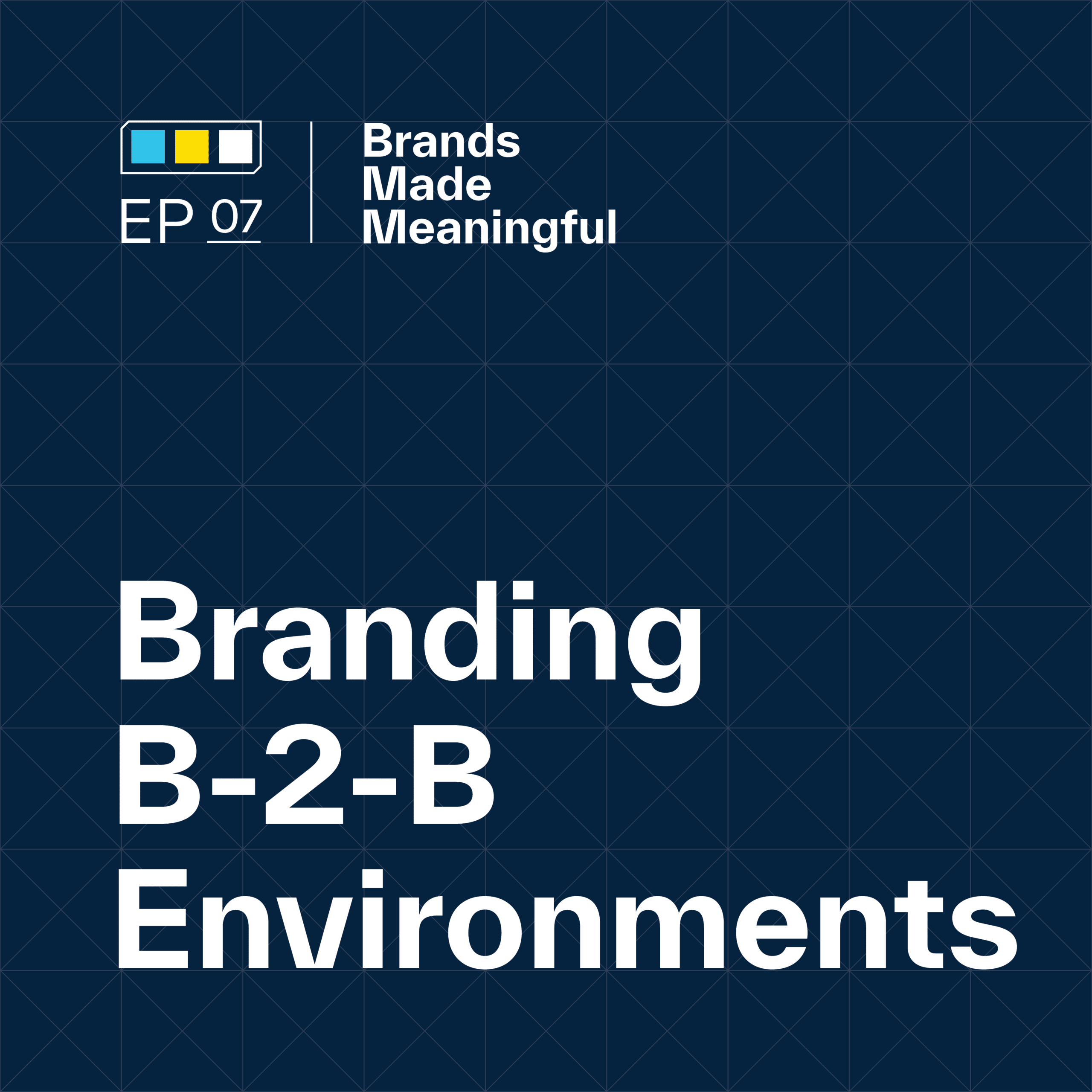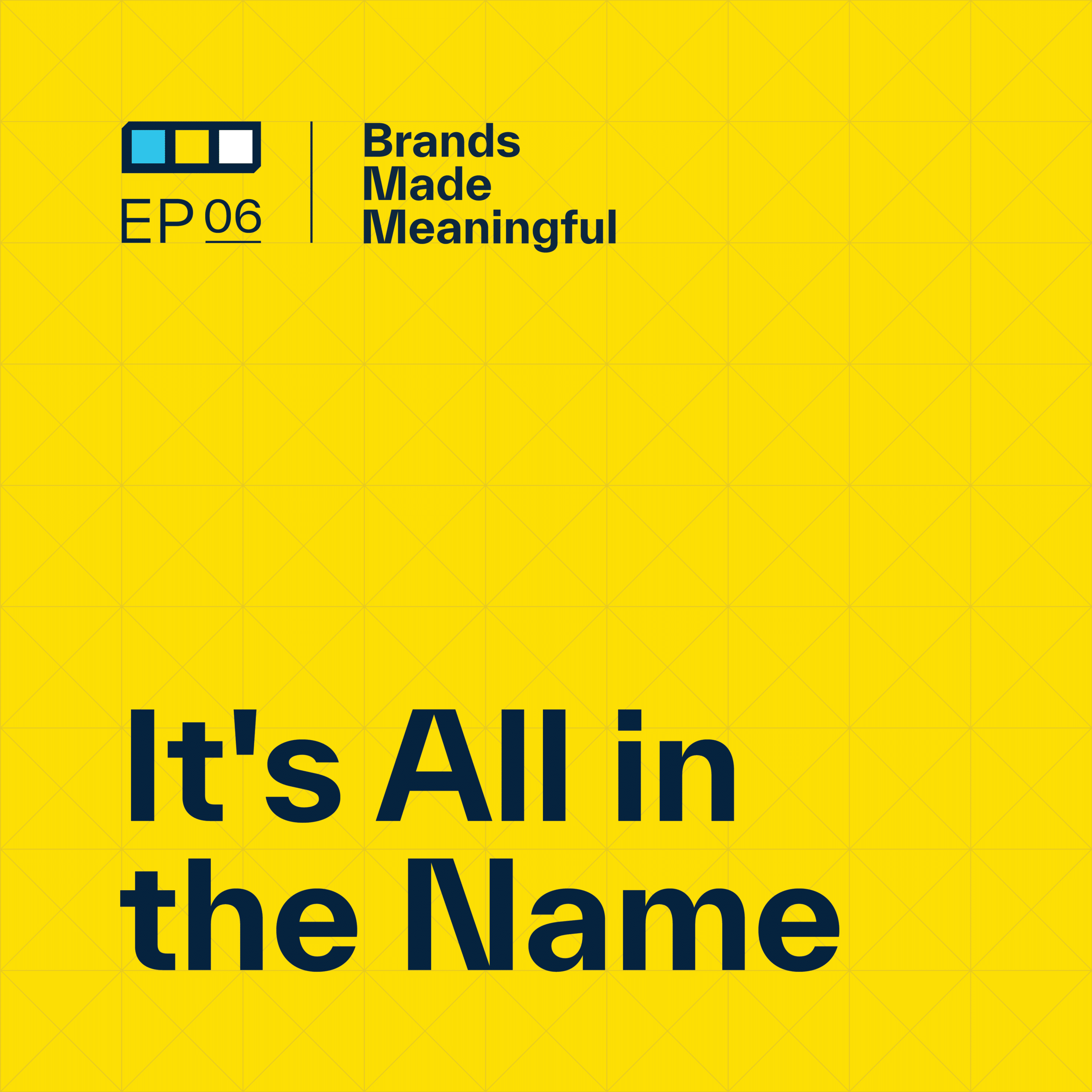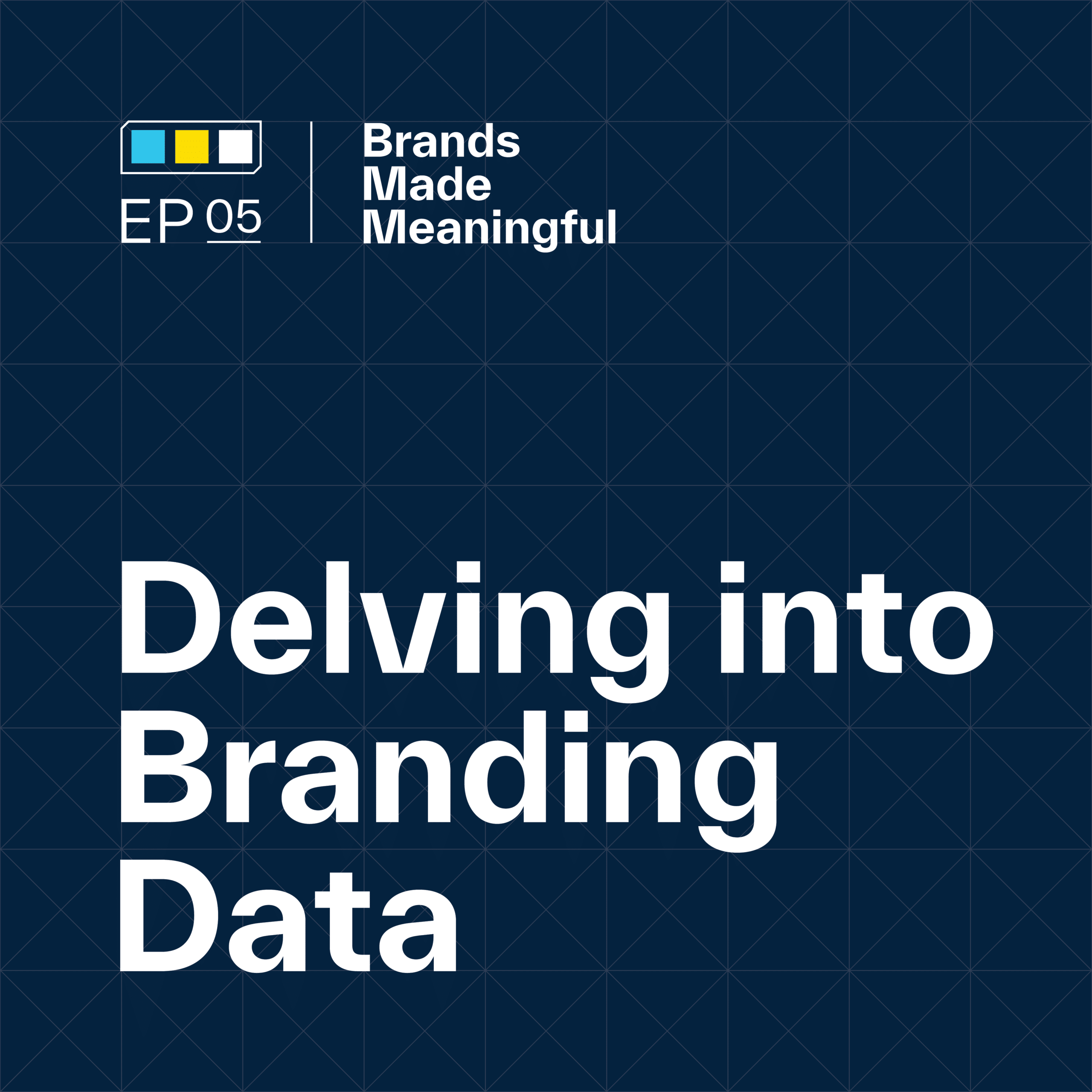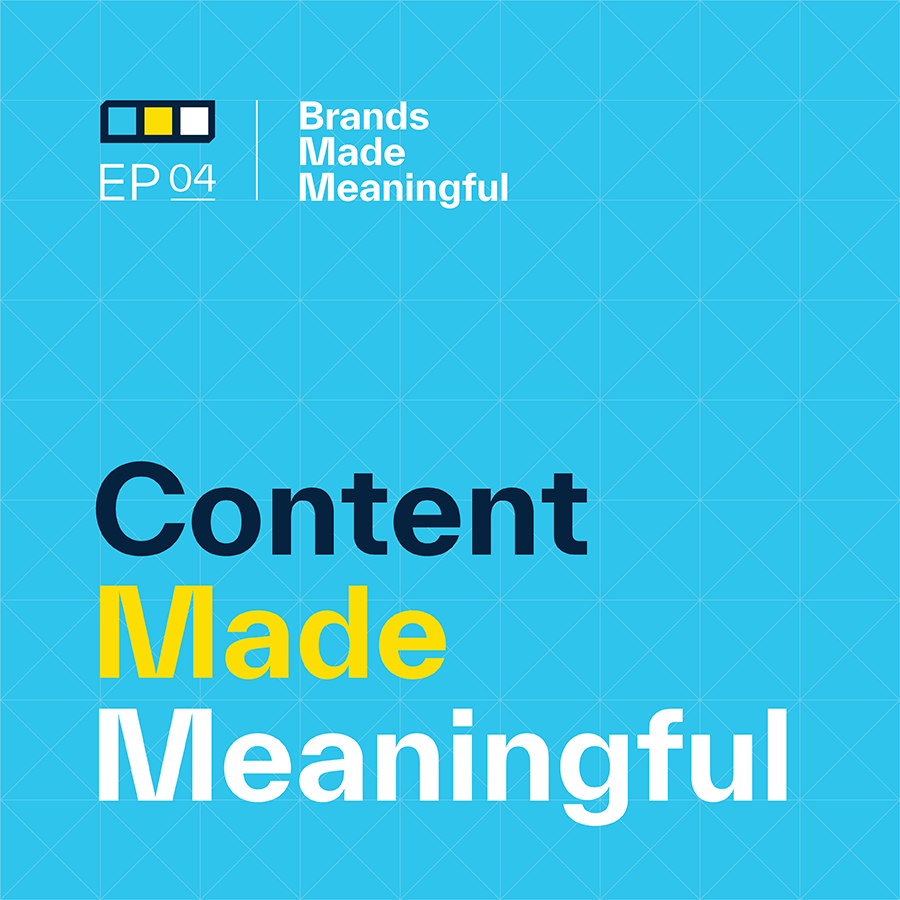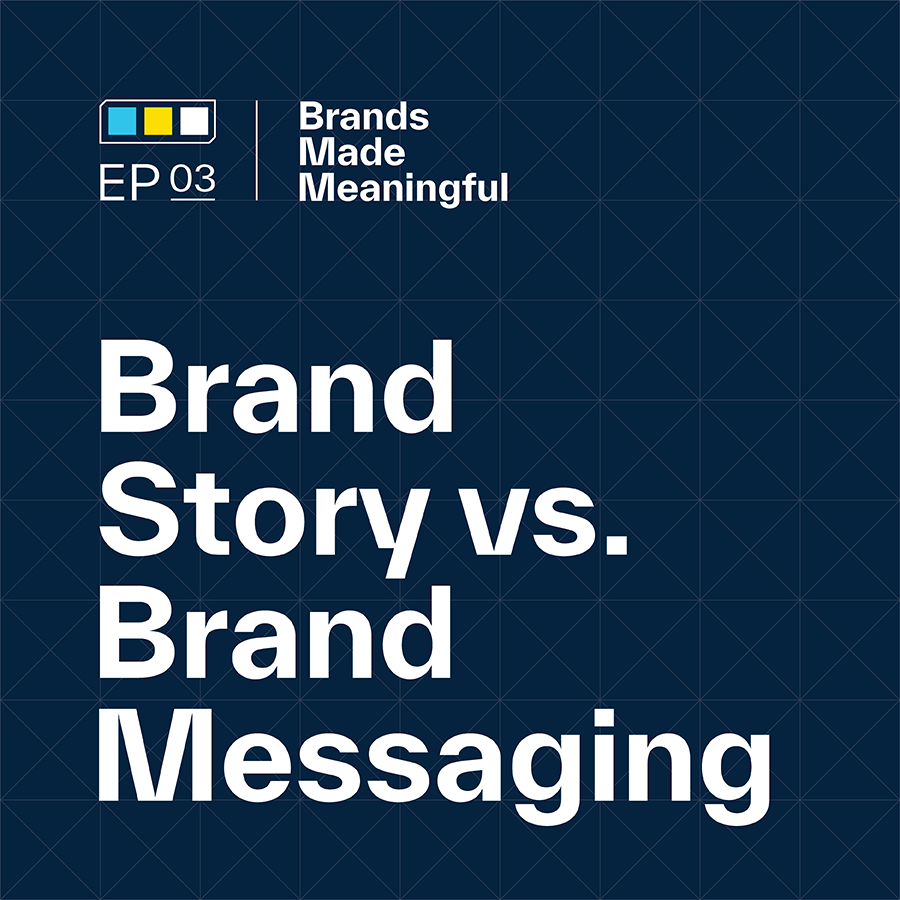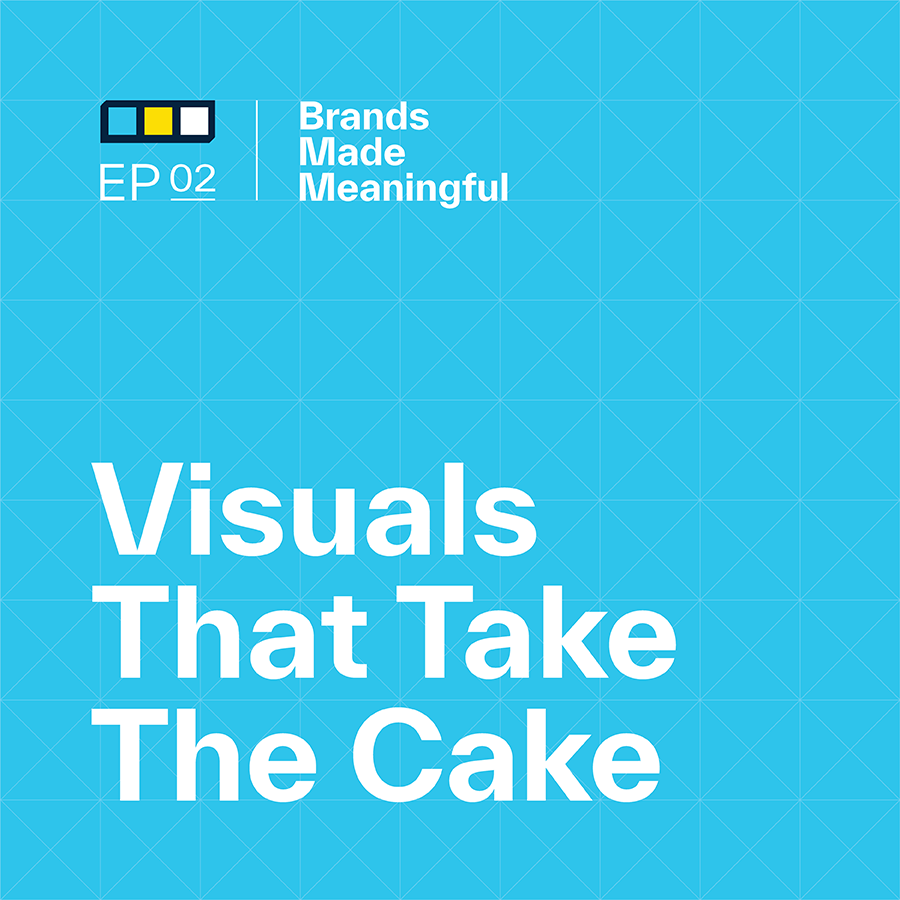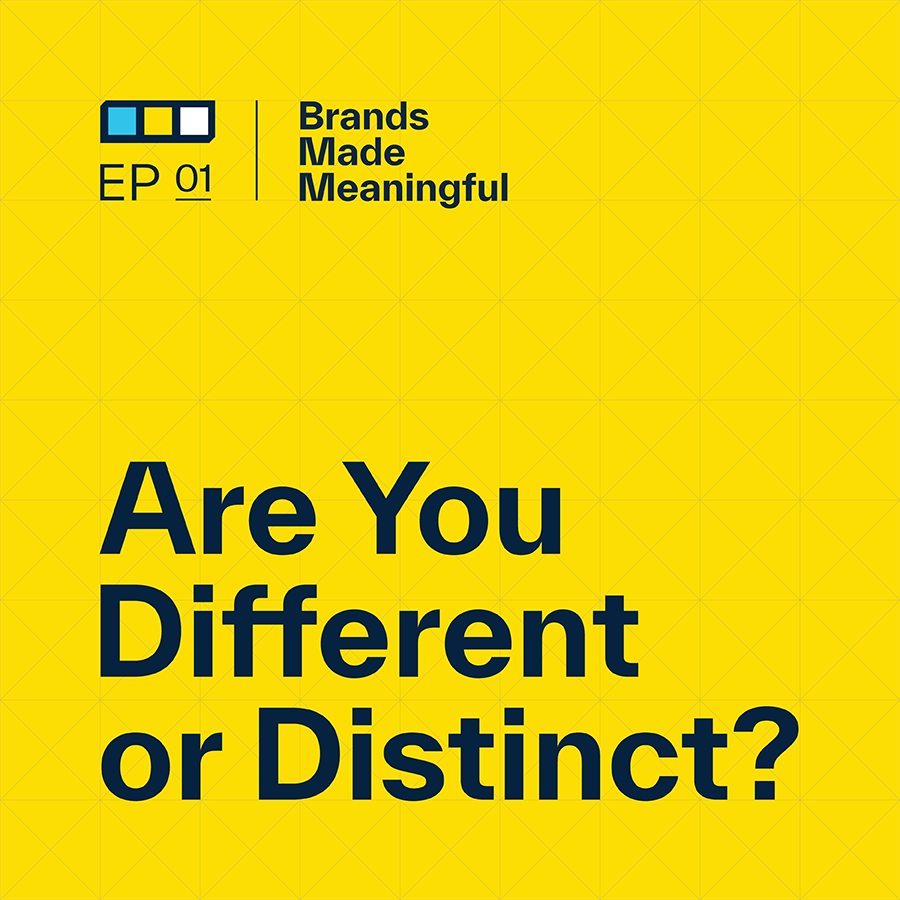EPISODE 48
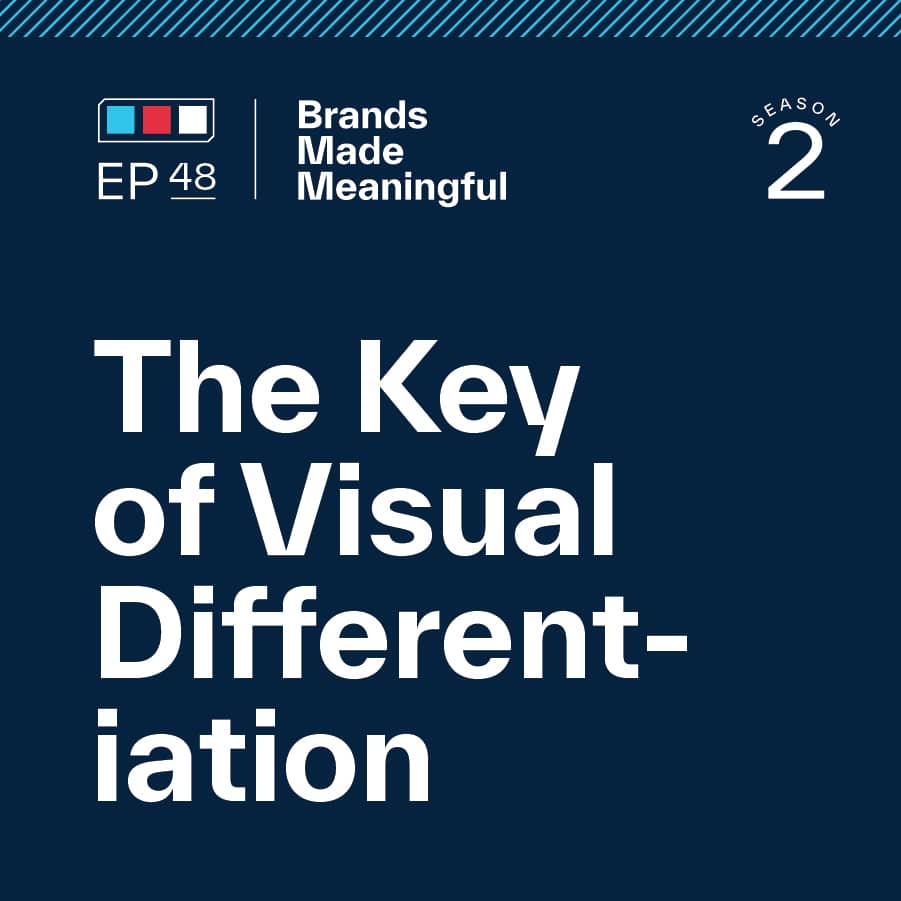
The Key of Visual Differentiation
Episode 48
Derek and Tucker break down the importance of differentiating your brand on a visual level.
EPISODE TRANSCRIPTION
Today we’re talking about visual differentiation, which is a little different than just brand differentiation across the board.
Derek Of course you have to be different, but we’ve had a lot of conversations with prospective clients saying that their motive isn’t to be different because they don’t understand the reasoning. That is why we’re having this conversation.
Expand Full Transcript
Derek There’s a sentiment of “me too” where people identify another brand that they see as successful, in their opinion, and it might be in their field or industry. We get this all the time where people say if they could just look like Nike, Apple, or Target, they would crush it. Throw Starbucks in there too. Well, you probably just picked three or four of the most recognizable consumer brands in the world. And we’ll look just like them without the marketing budget that allows us to actually help create brand awareness of who we are. I’m kind of joking, but we hear it more often than not when we get to the visual part of brand development, where instead of holding up the competition and saying, This is who’s out there. How can we stand apart from them? There’s a sentiment of how can we look like them. If we look like them, then we’ll be successful.
Tucker People love to see a game and try to win it. And what I mean by that is there are a lot of people with different budgets, different resources, and different everything trying to beat Nike at Nike’s game. There are a lot of people who try to beat Starbucks at Starbucks’ game, especially visually. And that doesn’t make any sense, especially to me. I’m sitting here going, Why would we want to be anything like them? We are nothing like them. And it just has this sentiment that we can be different because we are different.
Derek One of my favorite moments in a conversation with a customer or a client, and maybe I brought this up before, and you usually answer first, but they ask the question, So now that we’re having a conversation with you and we’re starting to talk with you and we’re understanding what’s on the table – what do you think of our logo?
Tucker Yeah.
Derek What do you think of our look?
Tucker I love that question.
Derek And how do you usually answer?
Tucker I don’t know if it’s good or not. That would be the answer. I think if anyone gives you an answer right out of the gate, and I’ve said this before on this podcast, then they don’t really care about your problems. They don’t really care about what’s going on because they’re just making knee-jerk reactions. They’re assuming a lot of things. And so if anyone ever goes, Do you like the way our brand looks? I would say I’m not sure because I don’t know what your strategy is.
Derek I don’t know what it’s trying to represent. I don’t have a thorough understanding of the story that it’s trying to tell.
Tucker However, when we get through the process, and if our process is broken into three phases of strategy, development, and activation, once we get through strategy and they ask me that question, I give them a very clear answer of this is working and this is not working. And here is why because of the strategy that we’ve put in place and how we’re trying to communicate ourselves in the market.
Derek That knee-jerk reaction goes right back to our slogan, purpose over preference. It’s a knee-jerk reaction to esthetics. I like it. I don’t like it. It’s all a cosmetic-style answer. Now, a graphic designer can say they like it because they might feel like it has some successful creative components to it. But you really have no ability to strategically answer that question in a meaningful and thoughtful way until you know the story.
Tucker We were in a meeting with a client talking about visual differentiation. We’re looking at all their competitors, looking at the marketplace, and having a conversation about color, specifically about color. I also don’t come from an artistic background. So, for me, the conversation about color is like, we need to talk about this and take all of our previous emotions out of it. And this one person on their team could not do it. They did not like the color orange. I don’t know if you remember this conversation, but they did not like the color orange. But orange was a great option for them. It made sense with the story they wanted to tell. It made sense with the market. There wasn’t anyone in orange there at all. And so someone on the client’s team said, I just don’t like orange. I would never put that in my house. And someone on his team says, Grow up. This is not about you. This is about your ability to market yourself in a crowded marketplace where if you use orange and it tells the right story, it connects with people the right way, and it can help you differentiate, then that is the way that we need to go. We cannot make decisions because you don’t personally like a color because the brand probably isn’t for you. And that’s where we got into this visual differentiation is bigger than just your personal perception. So when you say personal preference is less than purpose, that is what I think of every single time. It’s when someone goes, Grow up. It’s not about you and your little weird things about color or your weird thing about not liking the shape or something like that.
Derek It’s a hard hurdle for a lot of people to get past that oftentimes your brand isn’t for you. It’s for your customers. And are you actually a customer of your business? If you’re a hockey organization and you’re creating hockey training products for people who play hockey, are you a hockey player? If you are, you have a deeper connection and ability to answer that. But if you’re a CMO that’s been brought in to market this company and grow it and you don’t have a personal background in hockey, then that brand’s not for you. It’s for your customer.
Tucker And some people do have really good experience as being their own customer. But I would still say you need to understand that there is more than just you in the marketplace.
Derek And sometimes being your own customer is a hurdle. Sometimes that actually comes with additional subjective baggage. Seth Godin said that to be distinct is to be able to be recognized from across the room.
Tucker It’s a great line.
Derek To have a visual identity that is authentic to your organization and is relevant to your customers, but as we talk about, it has to have an element of surprise or, for us, the thing that sets it apart and makes it unique and different and special.
Tucker And we’re talking visually today. So we’re not going to get into what story you want to tell and talk about all those things. But when we talk visually, we sometimes talk about logos. Logos connect with people. But we’re talking about things like color typography, esthetic photography, videography, and those types of building blocks that help you create a style, that help you create this esthetic like you would talk about. That makes you feel right. One of our designers said if you could take the logo off of this piece, this material, and it still feels like the brand, then we’ve done a good job. If you can’t, then we aren’t visually telling that right differentiated story.
Derek So we’re kind of jumping into this already. But to differentiate your brand and your organization and your products and your services so that they look unique and different from the people you compete with, why not? We worked with a golf club recently in a rebrand and the first thing the owner said as they held up another brand that they liked in the golf space, actually 15 miles away from them, was, Let’s just create something that looks like them. I love the way that they look. And I think that if we look like them or similar to them, then we’ll be successful. That’s not the case.
Tucker So why that doesn’t work, is your big question. Why can’t we just do that? The quote to be seen from across the room, to be remembered from that one glance, is really a good thing. But it’s to be remembered – that memory that you can unlock with somebody. If you look different and you stand out in a visual way, you can actually make them go, Oh, I was on this website and they had this really great piece and they were talking about this. It just pulls out emotions in them that allow them to connect the dots between who you are and what you’re offering. It can also increase the recognition to say, I’ve seen this before, it feels like something I’ve been on before. And that really increases the ability to create trust. If we can build out this great trust piece to say, You’ve seen us, we are credible, we look professional, we’ve done a lot of these great things. We’ve set the expectation that what you are getting is either high quality or different or however we want to market that. But that expectation setting is the large takeaway from why we are going to be different. It’s because we’re not just like them. So like your example with a golf course – our golf course isn’t just like their golf course, so why would we look the same? That doesn’t make any sense. If we’re a local coffee shop and we want to look like Starbucks, we aren’t Starbucks, so why would we want to look like Starbucks? That doesn’t make any sense unless you’re like the people who say maybe you should look just like them because you could feed off of their brand recognition. What you end up doing is just helping them increase their brand recognition because now you just feel like another one of their stores, another one of their places, you just feel like another one. And that can become really dangerous for people because it starts feeling like you’re a knockoff instead of being an original. And that can hurt.
Derek Even if you have a killer story, great messaging, a rock-solid strategy, a plan, the right people, and a great product, if you don’t have the ability to have all of that stand out, to be memorable, to, first of all, create the awareness of that for people to understand why when they’re going to buy that product or service or come to your golf club to even remember that it was you that they were thinking about and not somebody else that was similar, then you haven’t taken a step. I’m not going to say you failed. You’ve done a lot. But to do all of that right and then to overlook the visual opportunity is when you end up getting lost in the crowd. So if you’re frustrated because your marketing is not working, again, if the greatest message isn’t presented in an engaging visual way, it’s going to be lost on a lot of people.
Tucker There’s a theme around our office in the last month. This has really come up a lot with projects, with internal work, with other things – do it the right way, not the easy way. And what you are talking about is that. You could have the best of everything. And it’s easy to be just like everybody else. It’s super easy because you go to a designer and you say, I want to look just like that. And then they go, Sounds good. And then they make it just like that. And then you’re like, Cool, now we look like we belong in this marketplace. That is easy. But what’s right, which is most of the time harder to do because it takes more work and more emotional fortitude to do what’s right versus doing what’s easy, in the long run, you’ll feel a lot better about your decision. People will understand who you are. They’ll understand why you do it. They understand how you’re different, and they’ll appreciate where you’re coming from versus trying to hold you up against the competitor and say, Okay, so I’m not really getting the big difference here other than you say you’re cheaper and they are more expensive, but everyone uses them, so I don’t get it. So it’s like if you can do it the right way, it’ll pay off in the long run.
Derek As we come into the red flags and if you’re listening to this, you’re probably already thinking of some red flags or symptoms or things that you are experiencing that are pointing to the fact that you have an opportunity to do better with how you look. I may have told the story, but recently a friend of mine retold the story of playing golf. They weren’t golfing. They were at a sports bar and somebody had a golf logo on their chest, but it didn’t have any type with it. It just had the symbol. And a person who was also a golfer, because golfers identify with each other, it’s very tribal, came up to that person really excited and said, Oh my gosh, I see that logo on your shirt. That logo is either for, and he listed off four or five golf clubs in the area, and said, Well, which one is it? Some of these are really high-end exclusive clubs, and some really killer golf course architecture or golf course design. And with these four or five clubs, the culture and the membership at all of these are completely different. But visually, this person had no idea which one was which.
Tucker So as a member, as a fan, as a customer,
Derek A paying member who’s emotionally invested, who’s financially invested, what a buzzkill.
Tucker How are you supposed to feel good about that? I think that that goes a long way and I think it sounds super easy. It sounds like, Okay, so whatever. But that kind of impacts the way that you look at things to say, then why are they even belonging there in the first place?
Derek So that scenario was our number one red flag – brand confusion.
Tucker Brand confusion. And I’ve said this before. It’s like when they hold you up against somebody else and they just don’t get it, they’ll most likely go with the one that has the more credibility. And so most of the time, especially if you’re following, that is not going to be you.
Derek This is a big one at retail. Go to a retail store and look at three, four, or five different brands of the same or similar products on a shelf that are in front of you. This is a really important role. Which one are you drawn to? Which one tells the best message? Which one looks like it’s telling the story that’s most relatable to you?
Tucker The next one would be brand recall. If you go back to the grocery store answer, it’s when someone says they really like the peanut butter at your house. What peanut butter do you have at your house? And you have no idea – it’s just peanut butter. I wouldn’t even be able to tell you how to get it again, because I don’t know what it is. That’s a problem.
Derek What about that restaurant that you guys talked about last week that just crushed the service? You said it was the best burger you ever had. You’re like
Tucker Well, I don’t know.
Derek I could tell you the street that it was on, I think, but I don’t know.
Tucker And that’s a problem. You could take it out of that super-consumer mindset. There are people who we would ask, Hey, you used to work with this marketing firm, who was it again? And they would say, I don’t remember who that was. Well, that’s a problem. And that’s bigger than just a visual problem, I could tell you that. But there is a part of that that’s visual in that they don’t have that stark understanding of who you are and they can’t put a picture to your name. That’s a huge deal. When you can start remembering people’s names, it’s because you remember their faces a lot of times. You can kind of see them, or at least a lot of people are like that.
Derek Back to the beginning of the conversation. You’ve created recognition, you’ve created memorability, and now you know the difference in what they stand for and how to relate to each.
Tucker Another one is the competitive edge. If you look like everybody else, then how is anyone supposed to believe that you’re any different than them? And that can be super hard to deal with, especially as a marketing leader, to come back to somebody and say, Oh, we’re totally different. And they go, Sure you are, but you don’t look different. And that’s hard for someone who doesn’t understand the nuances of your business to really capture the difference.
Derek Especially if you’ve done the backbreaking work of positioning yourself in a unique way. I think answering what we do and who we do it for is one of the hardest questions to answer in business. And if you’ve done that, but also then haven’t taken the step to position yourself in how you look and how you present yourself, you’re going to start running into competing on price.
Tucker And if you look at that premium nature of things, it confuses the brand messaging too. If you look so premium, then why do you look just like this other brand? Or if that brand is premium and your strategy is to go more of a value-oriented strategy, then you coming back to say we look premium because they look good and that’s what we want to do, that’s not what you’re selling. So that kind of inconsistency within what your strategy is versus how you look can create a huge red flag for people who just don’t feel like this is authentic or real.
Derek If you’re consulting services cost six or seven figures, if your golf course, golf club, or private club costs a hundred grand to join, or if your knee brace costs $250, does the visual packaging, does the logo, does the way that you present it represent that value, that level of value?
Tucker And you’ll see people, when they complain about it, that might be complaining about certain things. Most of the time when people are complaining about the price, it actually isn’t the price, it’s the perceived value that you’ve given them that makes it feel like this is a rip-off. And that’s a huge difference to say you’re not overcharging, you’re just under-delivering visually, and that can be a huge mindset shift for a lot of marketing leaders.
Derek Most of the time we think people think the opposite. Like, you look great and I’ve now purchased your services and they’ve fallen flat. You sold me a bill of goods. That happens more often than not when people don’t have the strategy and the actual great product, great people, etc. So it’s interesting when that scenario gets flipped.
Tucker We’ve worked with lots of product brands that come back and say they have the best product. It is the most durable and lasts the longest. People love it when they use it, but they still complain about the price. When we work with them and we start building this more premium perception of themselves to start positioning their product as not only the thing that will last the longest, but the thing that is the best value, whether the price is the highest or not and you’re getting the most out of what you’re paying for, people stop complaining about price. It’s a really weird balance. Everyone just goes, Well, then I’ll just cut my prices. And that’s not always the answer. And to your point, it’s not always the case that your product or your service is actually the best in the market, and that could be a problem in itself that we just can’t help you with. But you have more levers to pull than just knock down your price.
Derek So what’s some solve? I’ve got a killer product, I’ve got a great service, I’ve got a great team, I have a strategy. I know my target audience, my visuals, my logo, my look, our photography, our imagery, our website, everything is currently falling flat and we’re having a hard time competing. We’re having a hard time establishing a competitive edge. What are a few things that I could be thinking about?
Tucker We always start with objectives, so I would start there no matter what. That doesn’t really help this conversation necessarily, but I would start by going out and saying, What are we trying to accomplish in the marketplace? In short, what is your strategy? What are we trying to do here? And then once you do that, I think that your next step is to identify your weaknesses. If I were going to do this, I would analyze what we are not good at. And maybe that actually starts by analyzing your audiences – what would they need us to be, what do they want from us? What is our strategy to do that? And then, where are we not delivering on that?
Derek Do a brand SWOT.
Tucker Brand SWOT is really great. We do these for most of our clients. It’s coming out and saying, What are we really good at? What are we not good at? Where are there opportunities for us to position ourselves in a way that no one else can? And then what are other people doing that we do not have the right to win in? And they’re doing a really good job that we need to make sure we’re not speaking to or trying to lean on because that wouldn’t help us in any way. So if you go out and analyze your audience, who you are trying to go for and why, and what they want from you, then I would start that strategy. You just say, What are we going to do to try to get there? And then I would be really critical about what we have today. And I’ll say that these are what I always call assets because I don’t know what else to call them, but they’re tools in your toolbox. So if you say logo, if you say graphics, if you say typography, if you say all those other things, those to me are assets. Those are things that we use that we plug and play to try to build a world in which you have the right to win visually. So if you look at your assets in that critical way, then you can start understanding the ways that we don’t look the way we need to look. And then I would go after and build those assets.
Derek There’s a step in this process, back to purpose over preference, around those objectives. I don’t want to get into the process weeds on this conversation, but I’m happy to at another time. But there are really helpful ways to put objective guidelines around this to remind ourselves to check ourselves when we start talking about what we like or don’t like. We look at the brand, and the way that our brand is applied, and have an understanding of how we can be consistent with where we are so that we’re talking to the right audience in the right way because we’ve identified our weaknesses and our opportunities. When you have an understanding of the perception that you’re trying to create, the reputation that you’re trying to build, and the story that you’re trying to tell, basically the question that I like to ask when you’re reviewing your creative isn’t, Do you like it? The question is, Is this the criteria that we established? You’re going to like it or you’re not. You can’t help it. We’re people. You’re attracted to a color or a typeface or whatever. But the more we can also add in, Does this reflect the mission statement? When we compare all of the logos of the close competitive set, can we put this in that mix and does it stake its claim? Does it look different and does it look better or different or unique?
Tucker I think that this is really hard. It’s okay to admit that this stuff is really hard because it sounds easy. It sounds like we should pick a color. There are only so many colors in the world, right? We should just be able to pick one. It sounds easy, and I totally empathize with that because I am not a designer by nature. But it’s way harder than it sounds. And people need help making decisions. If you go through this and you find yourself in that struggle, you need to ask somebody for help, whether it’s reaching out to someone like us, and I would always recommend people reach out to us, but if you can’t and you just need a little bit of an opinion, get an opinion from a customer. Get an opinion from someone who actually buys from you that you might know, but not really, really well. What you want to do is limit the amount of bias that’s sitting in there for your personal lens.
Derek When you ask that customer, which I think is the number one thing I would do, I wouldn’t even ask your team first. I would ask your clients. Don’t say, what do you think, or do you like our brand? Tell them the objectives of who you are and the story you’re trying to tell. And then the question is, is how we’re presenting ourselves telling that story.
Tucker That’s a good point. Don’t ever ask someone if they like it.
Derek That is a terrible question.
Tucker Always try to sit with people and say, are we doing what we set out to do? That is the goal. And if we can do that, then it’s going to be great.
Derek It sounds like adding process and adding steps and methods and meaning to the creative process makes the final creative less impactful, less cool, and less unique. And it’s actually exactly the opposite. The more meaning and purpose and objective you can build in on the front end and the more direction and clarity that you can give to whoever you’re working with who’s actually going to create and design these materials makes their job way easier so that instead of guessing on style and color and picking stuff, which ultimately will be their own personal preferences, they’re doing, it really, really intentionally.
Tucker Visual differentiation is a tool. It is a strategy. It is a way that we are moving forward. It is something that we utilize in order to make a brand memorable and distinct. And if we can use it properly without our internal biases holding us back, then we can really find a successful pocket in a marketplace to sit and own. And that is the ultimate goal. So if we keep moving in the direction of being really critical about the way that we look and being really critical about the way that we show up which would be another way to look at it – how do we show up whether that’s with the materials that we put out there or it’s the way our website looks or reads. The way that we show up is a direct expectation being set to customers.
Derek I hate the phrase, but people do judge a book by its cover.
Tucker I’m starting to like that phrase more and more. I should be talking about it.
Derek I shouldn’t say hate. I’m coming around to it, to how it’s actually used. But oftentimes it’s your first impression and you need to make it right.
Tucker It sounds bad, but it’s super true. Being able to come at this and say you have less than 7 seconds to do something, your brain can only do so much in 7 seconds. So those first three words, the first visual, communicate so much. Like when people say a picture is worth a thousand words, it is. It communicates so much about who you are, what you’re doing, all these great things.
Derek When people say that people judge a book by its cover, it sounds like a vanity play and like a shallow kind of cosmetic application. But, you know, there’s an F1 race coming up this weekend and the engineering and the muscle and the thought and the investment that goes into the engineering, the engine, and the components of that car are incredible. Actually, F1 is not the best example. A consumer car would be better. Imagine having a Formula One car with a Honda Accord as the exterior shell. Are you telling the story of what’s actually underneath that hood to the audience that is looking for you and what you do?
Tucker And I like a little tease on what I think another conversation would be – the same is true with the name of your organization.
Derek That’s a big topic.
Tucker Yes.
Derek Let’s talk about that.
Tucker But everything we’ve talked about today is just as true for the name of your organization.
Derek Let’s talk about the name one soon. Until next time.
Tucker Thanks.
Derek Sussner is a branding firm specializing in helping companies make a meaningful mark, guiding marketing leaders working to make their brand communicate better, stand out, and engage audiences to grow their business. For more, visit Sussner.com.
More Episodes Like This
Reclaiming Reputation Through Brand RevitalizationEpisode 85
Derek and Tucker discuss the potential that a branding initiative can have to restore a club’s reputation.
Branding The Club with Don KovacovichEpisode 84
Don Kovacovich, GM of The Club at Golden Valley, joins Derek & Tucker to discuss the impact that rebranding has had on his club and the opportunity it presents for other clubs
Changing a Club’s Membership ModelEpisode 83
Derek and Tucker discuss key considerations and challenges when changing your club’s membership model.
Connecting a Club with its Story with Jackie CarpenterEpisode 82
Derek and Tucker are joined today by Jackie Carpenter, author of People First.
Branding a Club AnniversaryEpisode 81
Derek and Tucker discuss the unique opportunity presented by milestone and anniversary dates for private clubs.
Private Club Storytelling with Ricky L. Potts, Jr., CCMEpisode 80
Derek and Tucker have the pleasure to speak with Ricky L. Potts Jr. about how powerful storytelling can be for your club members.
Opportunity in Club Facility RenovationEpisode 79
Derek and Tucker discuss pivotal key moments in your legacy and how to transform your story through renovation.
The Evolution of Club Members with Jon LastEpisode 78
Derek and Tucker are joined by Jon Last from Sports & Leisure Research Group to discuss the evolution of club members.
Member Branding vs. Product BrandingEpisode 77
Derek and Tucker discuss the challenges their client's have moved through when approaching differing styles of branding.
The Role of a Private Club's LogoEpisode 76
Derek and Tucker take a look back on private club logos they've designed over the years and explain the strategic reasons behind their choices.
Club Brand GovernanceEpisode 75
Derek and Tucker divulge the steps to evolving your brand while retaining your core values.
Seasonal Member MerchandiseEpisode 74
Derek and Tucker take a look at crafting specific merch to celebrate landmarks and special times of the year.
Who is Sussner?Episode 73
Derek and Tucker take a break from talking shop to talk about who they are and what they stand for.
Club Identities Beyond AmenitiesEpisode 72
Derek and Tucker discuss what it takes to stand out in unique ways for your club.
Little Things Mean EverythingEpisode 71
Derek and Tucker take a look at the often missed and easy to overlook.
Build Flexible Brand SystemsEpisode 70
Derek and Tucker break down the building blocks for long lasting branding.
The Club at Golden ValleyEpisode 69
Derek and Tucker take a close look at one of their recent rebrands.
When to Launch a Club RebrandEpisode 68
Derek and Tucker break down how to find the perfect timing when launching a club rebrand.
Steps to Launching a Club RebrandEpisode 67
Derek and Tucker break down the steps to take and the reasons why you should consider a club rebranding.
Brand Marketing vs. Brand DesignEpisode 66
Derek and Tucker define the line between marketing and design and how they intersect to inform one another.
Building Brand GuidelinesEpisode 65
Derek and Tucker show us how to build infrastructure guidelines to unify your brand experience across the board.
Club Identity SystemsEpisode 64
Derek and Tucker cover what Identity Systems entail and how to discern between internal and external methodologies.
Navigating Branding With a BoardEpisode 63
Derek and Tucker bring clarity to uniting your company under one cohesive vision.
Putting a Committee TogetherEpisode 62
Derek and Tucker assemble your need-to-know facts when putting together your committee.
The Guiding Principles of Private ClubsEpisode 61
Derek and Tucker go over the top ways private clubs can find the balance between pleasing old members while attracting new ones, all while making moves towards the future.
How Color Affects PerceptionEpisode 60
Derek and Tucker cover how to best convey your business with color.
Brand EcosystemsEpisode 59
Derek and Tucker break down how to craft effortless experiences when considering your brand as a whole.
6 Types of Brand TransformationEpisode 58
Derek and Tucker dive into 6 distinct types of transformations for a wide range of brands.
Tournament Branding For ClubsEpisode 57
Derek and Tucker discuss designing and delighting your club members with tailored events.
Brand Promoters & DetractorsEpisode 56
Derek and Tucker discuss how high level promoters increase your NPS and how to turn the tides on your detractors.
The Loudest Voices in the RoomEpisode 55
Derek and Tucker talk about gathering feedback while prioritizing every voice.
Determining A Primary AudienceEpisode 54
Derek and Tucker discuss if and when you should be honing in on your audience vs. casting as wide a net as possible.
Branding For ExclusivityEpisode 53
Derek and Tucker discuss the intricate process of naming your brand.
Measuring Brand SuccessEpisode 52
Derek and Tucker discuss how we measure our success in branding and a few key KPIs that help us understand our impact.
Branding For ExclusivityEpisode 51
Derek and Tucker breakdown how brands can create the perception that they are exclusive and only for a certain type of consumer.
What Makes A Brand SurprisingEpisode 50
Derek and Tucker break down the Sussner formula that we believe leads to a surprising brand.
Breathe Life Into Brand TraditionEpisode 49
Derek and Tucker discuss the intricacies and common pitfalls of branding for Private Golf Clubs.
They Key of Visual DifferentiationEpisode 48
Derek and Tucker break down the importance of differentiating your brand on a visual level.
Branding For Private GolfEpisode 47
Derek and Tucker discuss the intricacies and common pitfalls of branding for Private Golf Clubs.
Dealing With An Identity CrisisEpisode 46
Derek and Tucker breakdown how to identify and remedy a brand's identity crisis throughout thoughtful and intentional brand management.
Branding vs MarketingEpisode 45
Derek and Tucker discuss the differences between Branding and Marketing and how to make the two compliment each other.
Build Your Brand's FoundationEpisode 44
A brand's foundation is a critical element in being successful in the long-term.
Building a Constructive Branding ProcessEpisode 43
Derek and Tucker break down the steps required to build the most constructive and meaningful branding process.
What Makes a Brand Relevant?Episode 42
Relevance is a key piece of a brand's identity for creating clarity and connection.
Your Right to WinEpisode 41
Derek and Tucker discuss the “Right to Win” and the odds of your brand's success within your target market.
An Intro to Sub BrandingEpisode 40
Derek and Tucker discuss the nuances of developing sub-branding and strategies.
Conquer Branding FearsEpisode 39
Derek and Tucker dive into how to overcome the fear of change and the nature of constant refinement of your brand.
Balancing Strategy & DesignEpisode 38
Great strategy is a necessary foundation for great design—and great design brings great strategy to life.
Branding PrioritiesEpisode 37
Branding priorities are the actions and initiatives that shape or enhance a brand's identity, perception, and market position.
Invest in Your BrandEpisode 36
Investing in your brand benefits your company as a competitor in the marketplace, builds trust with customers, increases perception of quality, and drives employee engagement.
Why is Positioning Scary?Episode 35
Narrowing the brand's position is really a strategic decision to focus the brand's offerings, messaging and target audience on a specific niche or segment within the market.
What Are Brand Consultants?Episode 34
Derek and Tucker discuss the importance of hiring expertise with a wider breadth of knowledge than just visuals.
Hire for Brand FitEpisode 33
Hiring people that fit your brand is key in order to maintain brand authenticity, positive culture, and consistent messaging.
Your Brand’s Stance MattersEpisode 32
Your stance can help define your brand from a core level and make branding, hiring, and marketing not only easier, but more meaningful.
Levels of Executing a Brand RefreshEpisode 31
If you have a brand strategy in place, how do you execute it?
The Role of Features & BenefitsEpisode 30
Derek and Tucker discuss the importance of features and benefits within the context of branding, selling, and marketing your products and services.
Should You Listen To or Lead Your Customers?Episode 29
Within the challenge of any rebrand is the challenge of managing customers' perception of change.
Managing a Brand TransformationEpisode 28
Episode 28 discusses the highlights and challenges of rolling out a new brand, both internally and externally.
Living Your BrandEpisode 27
Your brand is not this shiny trophy on the shelf. It is something that you are molding every single day.
What Makes a Brand Authentic?Episode 26
Season 2 starts off with a discussion about building authentic brand experiences, both internally and externally.
Reviewing your Competition's CreativeEpisode 25
Derek and Tucker discuss the process of reviewing your competitors' creative strategy to better position your brand within the market.
Interviewing your Audience for InsightsEpisode 24
This episode details the process and benefits of interviewing your audience as part of the branding process.
Assumption ReversalEpisode 23
Derek and Tucker discuss how we change our thoughts and get into a different mindset to refine and revise our branding.
Developing vs. Amplifying a BrandEpisode 22
Another way to say it is, development is building and crafting your brand story, and amplification is then telling it.
Refreshing a Sporting Goods BrandEpisode 21
This episode shares the steps behind Sussner’s work in refining the Shock Doctor brand.
Defining PerceptionEpisode 20
Derek and Tucker discuss the positive and negative impacts of brand perception.
What is a Brand?Episode 19
Derek and Tucker discuss what defines a brand and what makes them successful.
Branding Golf Courses vs Golf ClubsEpisode 18
Derek and Tucker further hone in on golf course design.
Refreshing a Golf CourseEpisode 17
Derek and Tucker discuss the bar for golf course design – and how to push past it.
Let’s Talk Taglines Episode 16
Derek and Tucker talk taglines in today's episode.
Refreshing an Athletic DepartmentEpisode 15
Derek and Tucker sit down today to discuss what logos mean within branding.
Branding a Club Episode 14
Derek and Tucker discuss how to brainstorm branding a club.
An Intro to Internal Branding Episode 13
Derek and Tucker discuss the power behind internal branding.
The Value of Stereotyping Episode 12
Derek and Tucker sit down today to discuss the meaning of stereotyping within the branding world.
We’re on a Mission Episode 11
This episode digs into the rallying cry for the greatness your team is going to accomplish.
Aren’t Brands Just Logos? Episode 10
Derek and Tucker sit down today to discuss what logos mean within branding.
The Business You Are Really In Episode 09
Derek and Tucker sit down today to discuss how to discover what business you are really in to better understand your mission statement.
Clarity of Vision Episode 08
Derek and Tucker discuss the importance of looking ahead towards the big picture to better hone the purpose behind what we do in the now.
Branding B-2-B Environments Episode 07
Derek and Tucker discuss the Branding of Spaces.
It’s All in the Name Episode 06
Derek and Tucker discuss what a name can say - and not - about your company.
Delving Into Branding Data Episode 05
Derek and Tucker jump into the discovery phase of branding before it hits the drawing board.
Content Made Meaningful Episode 04
Today Derek and Tucker discuss the concepts within content and its common misconceptions such as the phrase "Content is King."
Brand Story vs. Brand Messaging Episode 03
Your story matters.
Visuals That Take The Cake Episode 02
Derek and Tucker sit down to discuss visual impact and what that could mean for your brand.
Are You Different or Distinct? Episode 01
It's not about being the only option, it's about being the right option. Join Derek and Tucker as they discuss Differentiation & Distinction.



